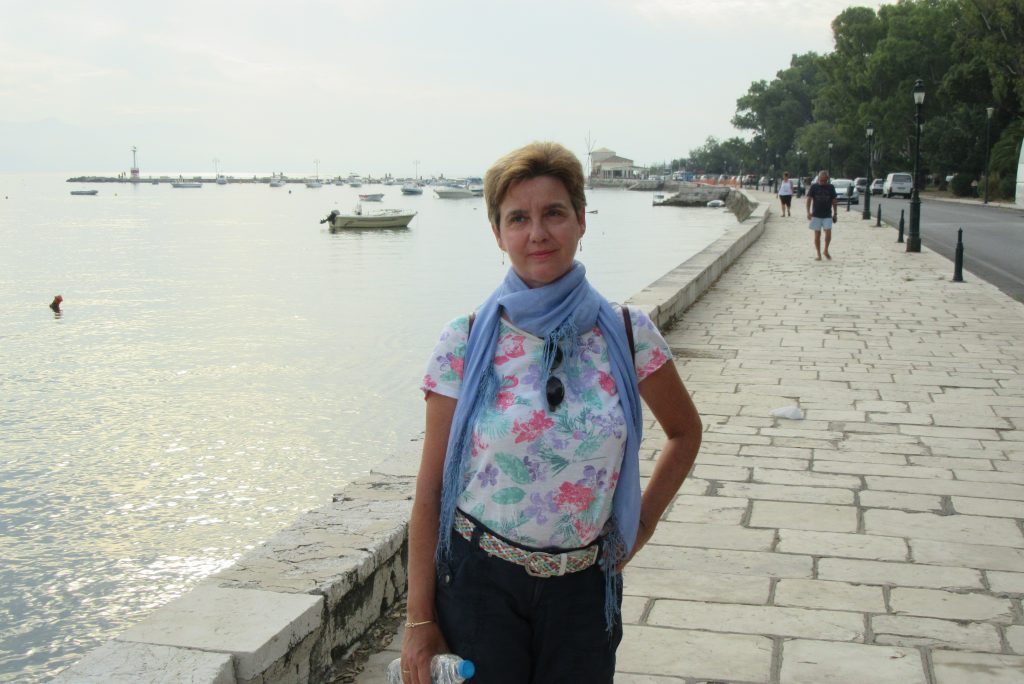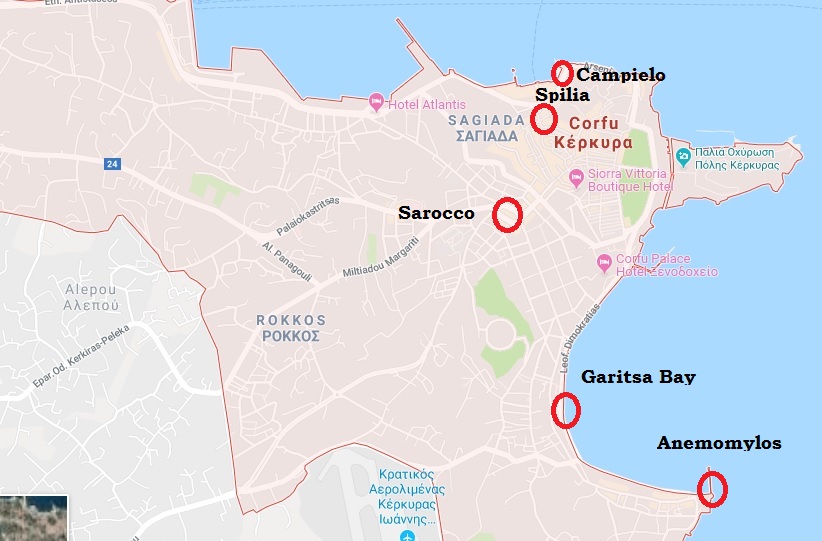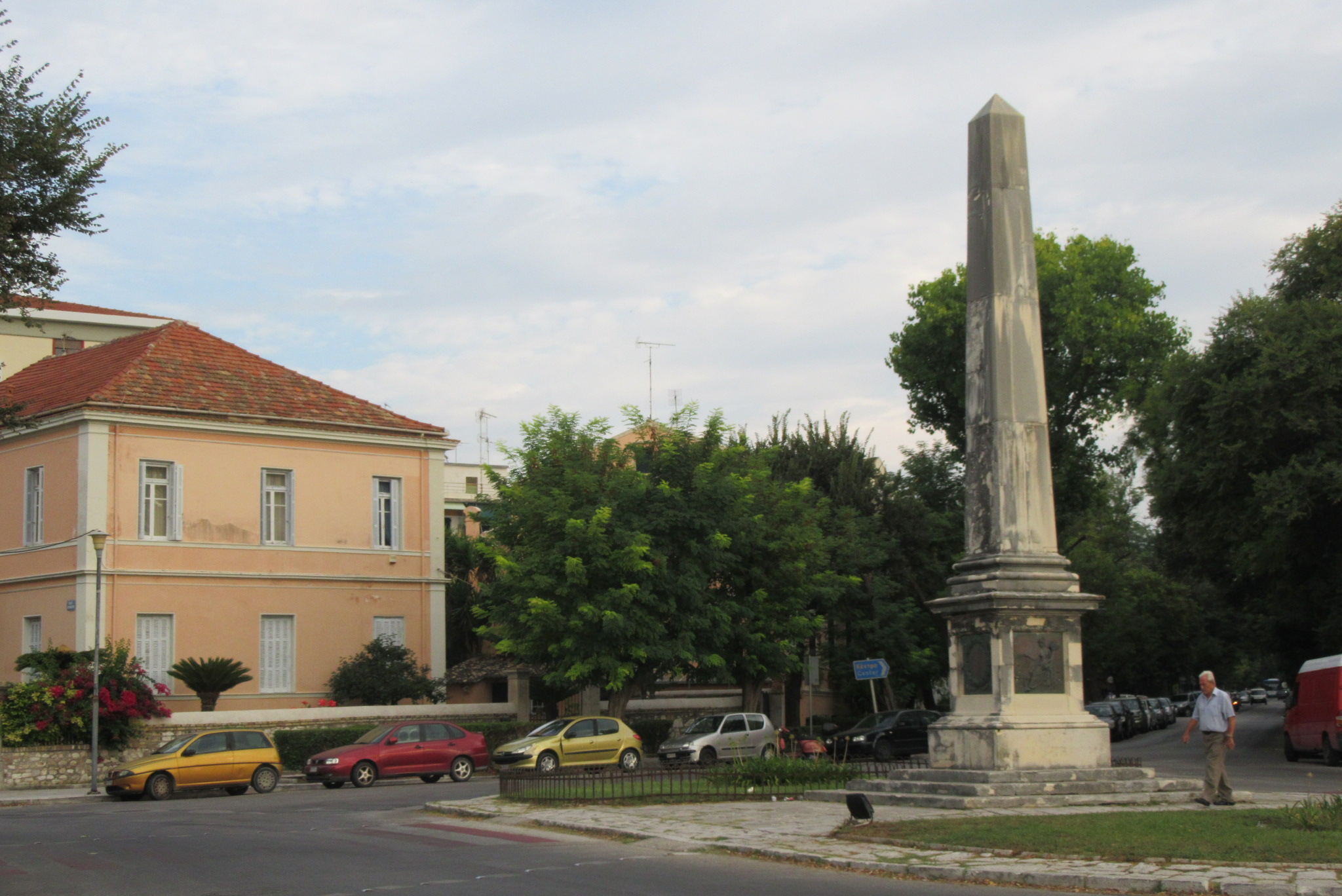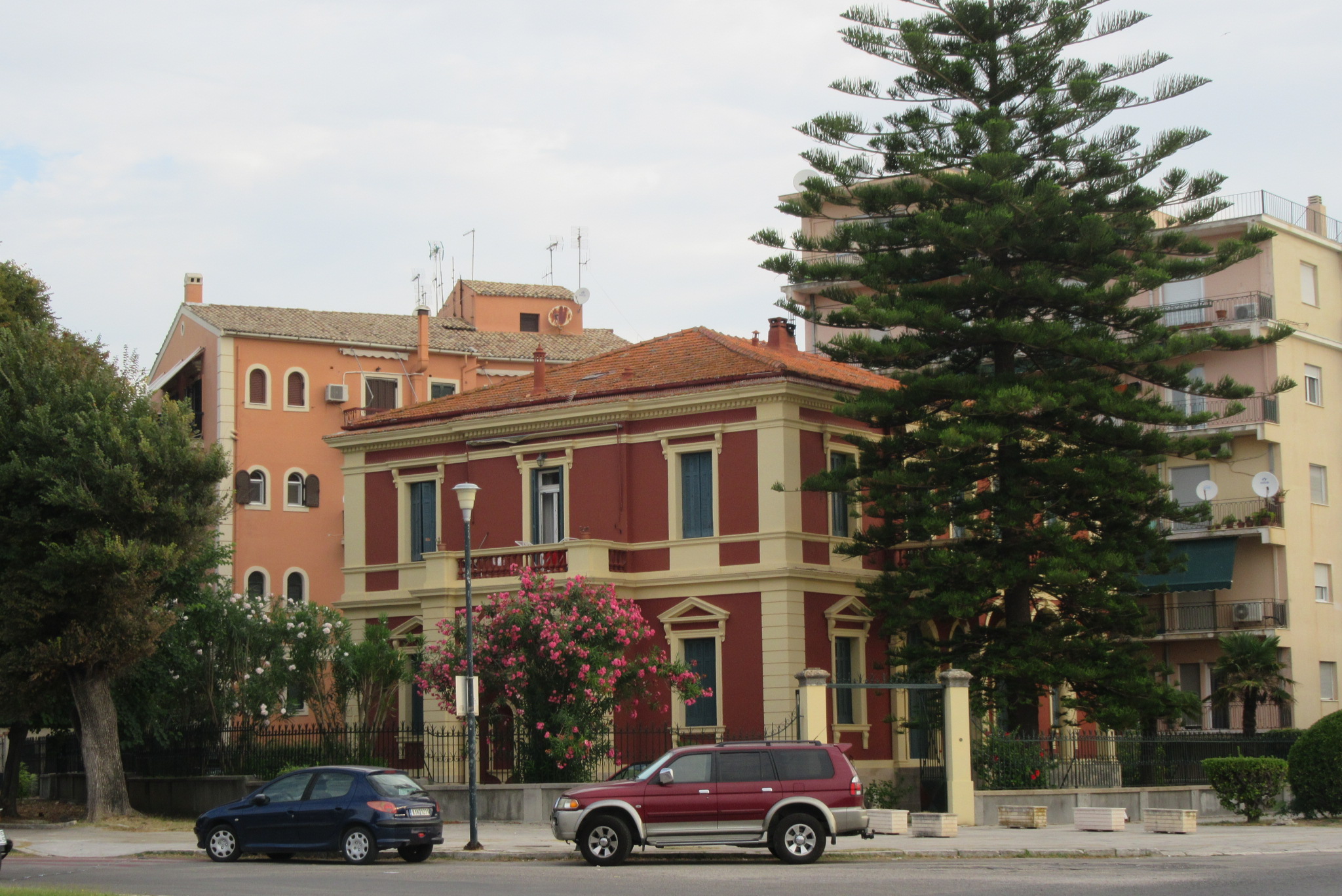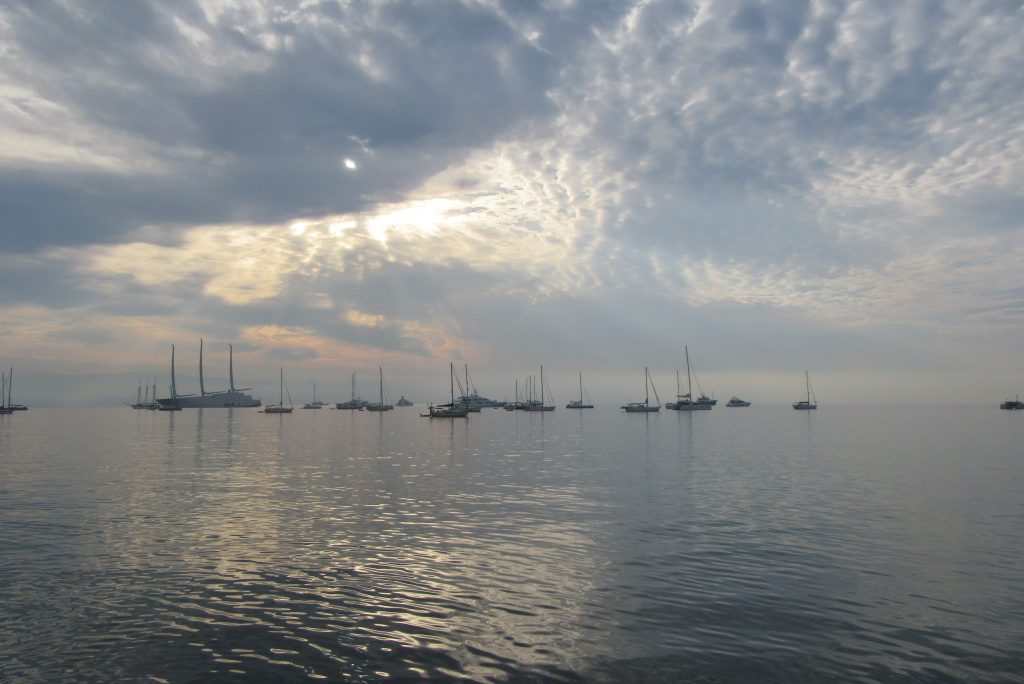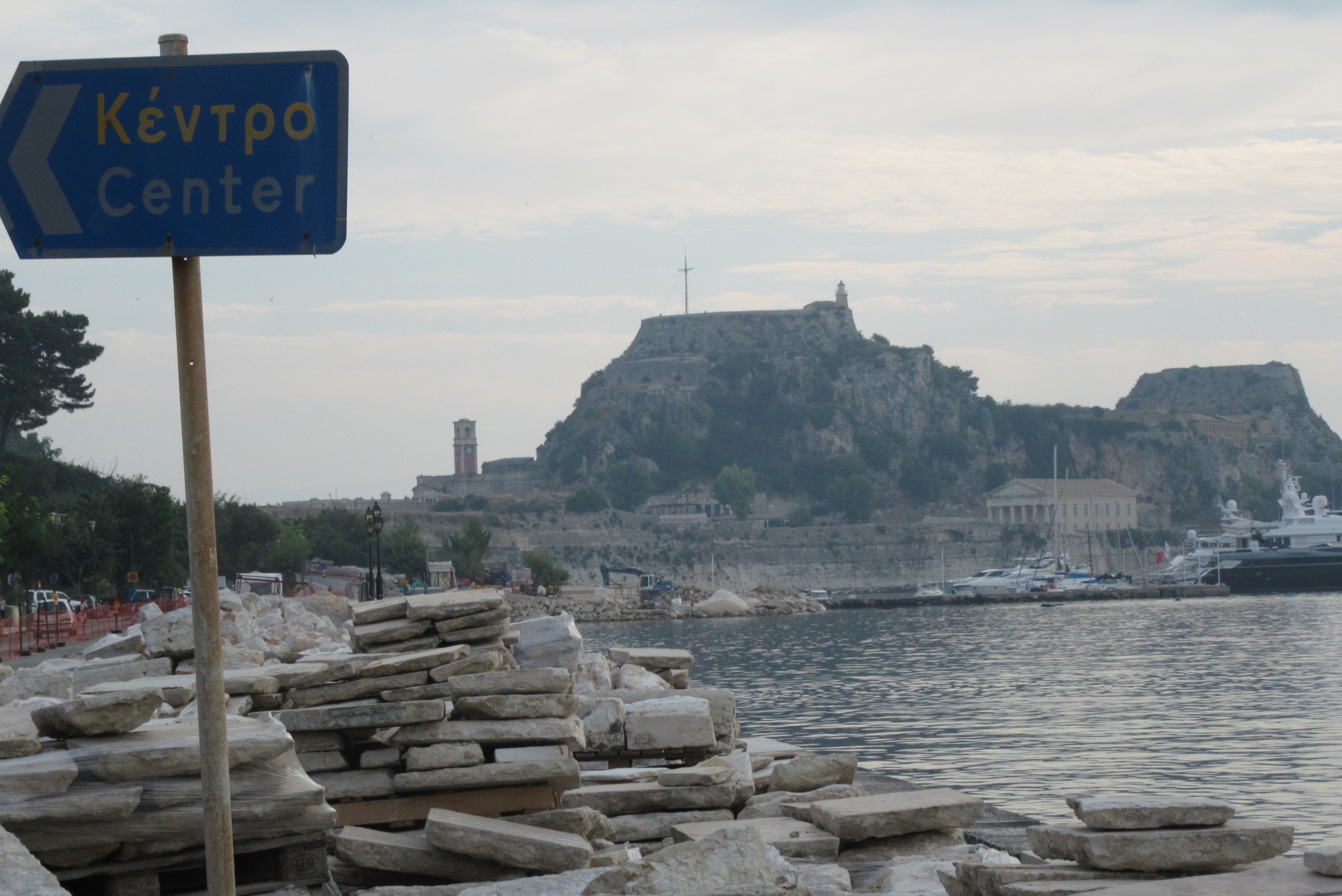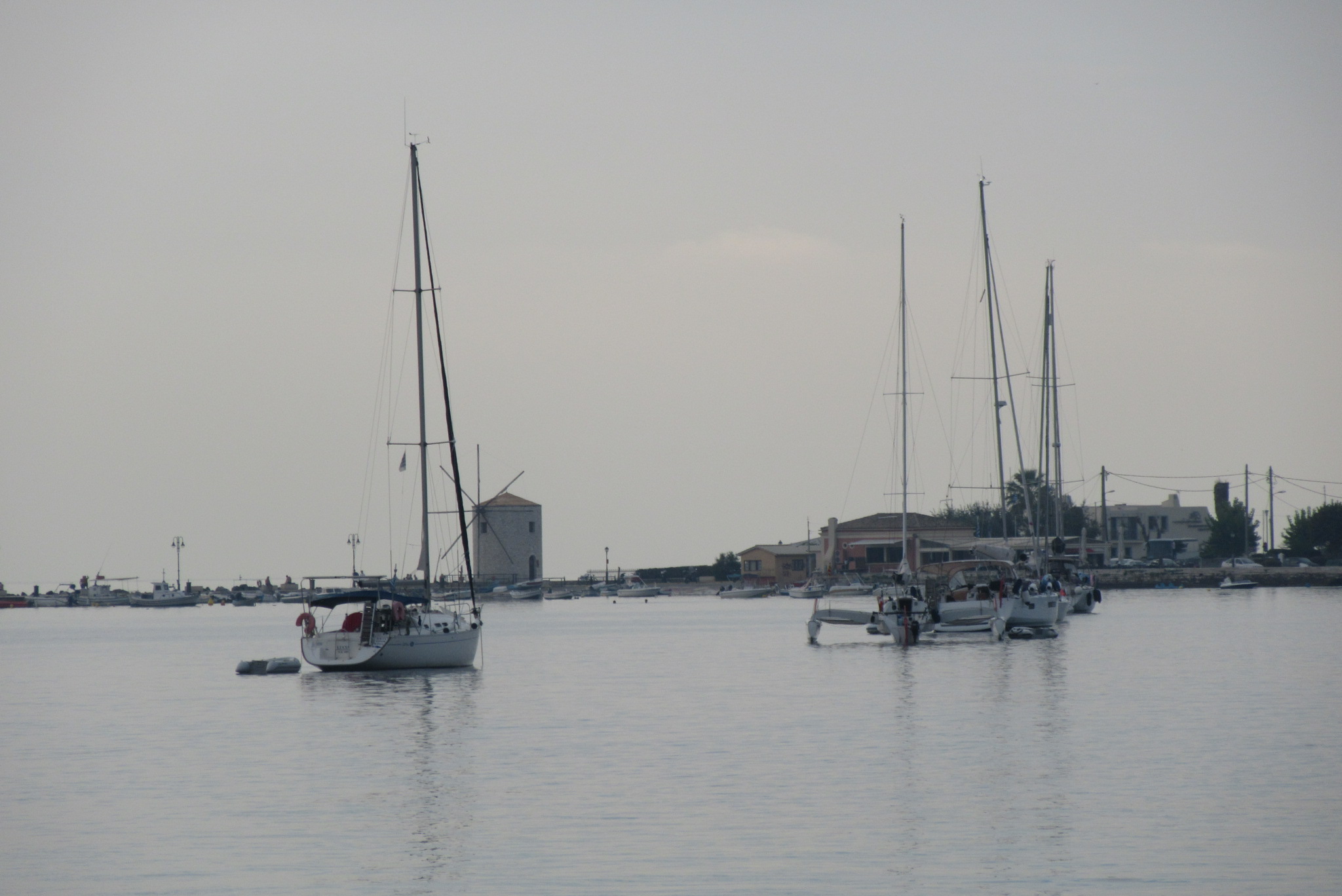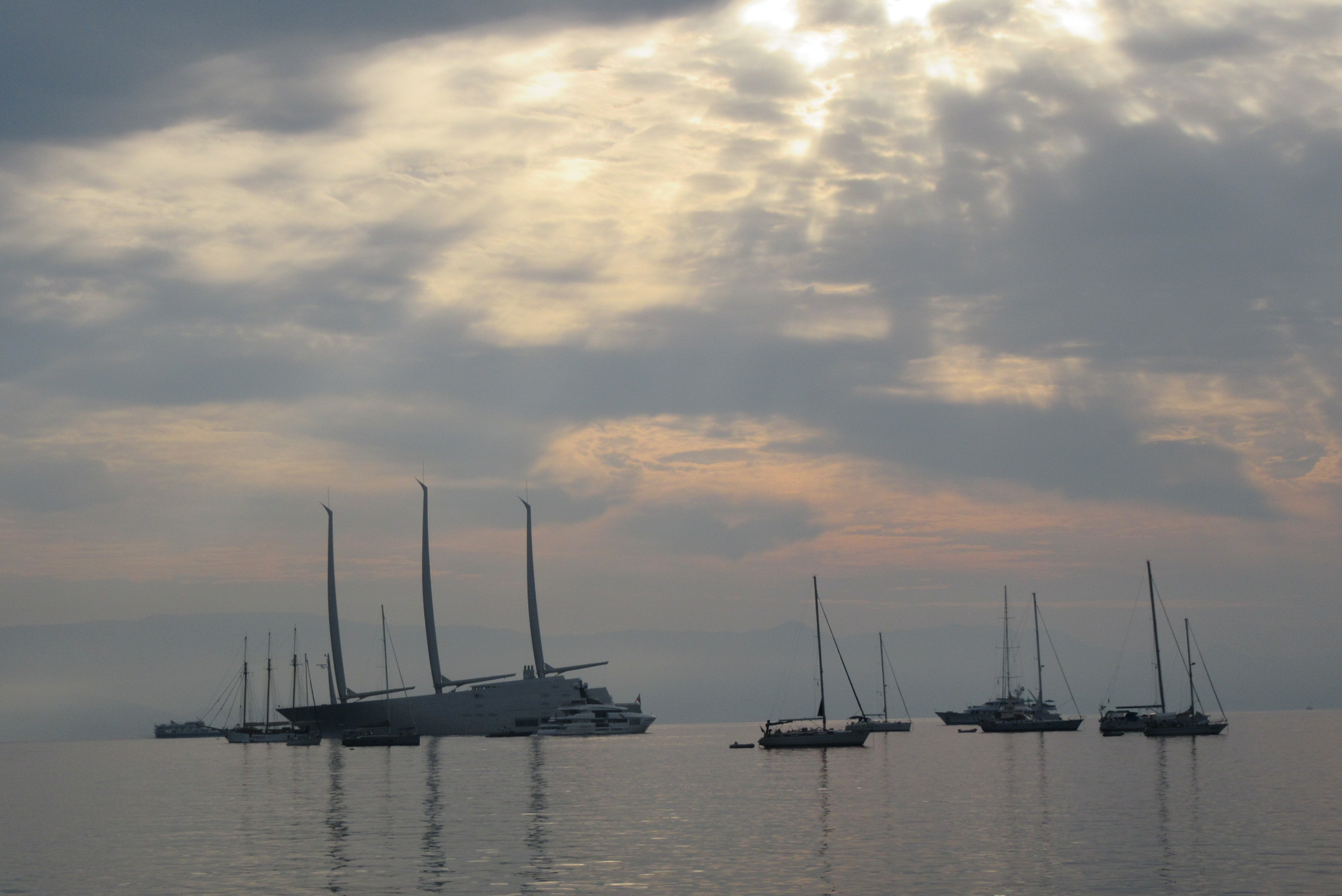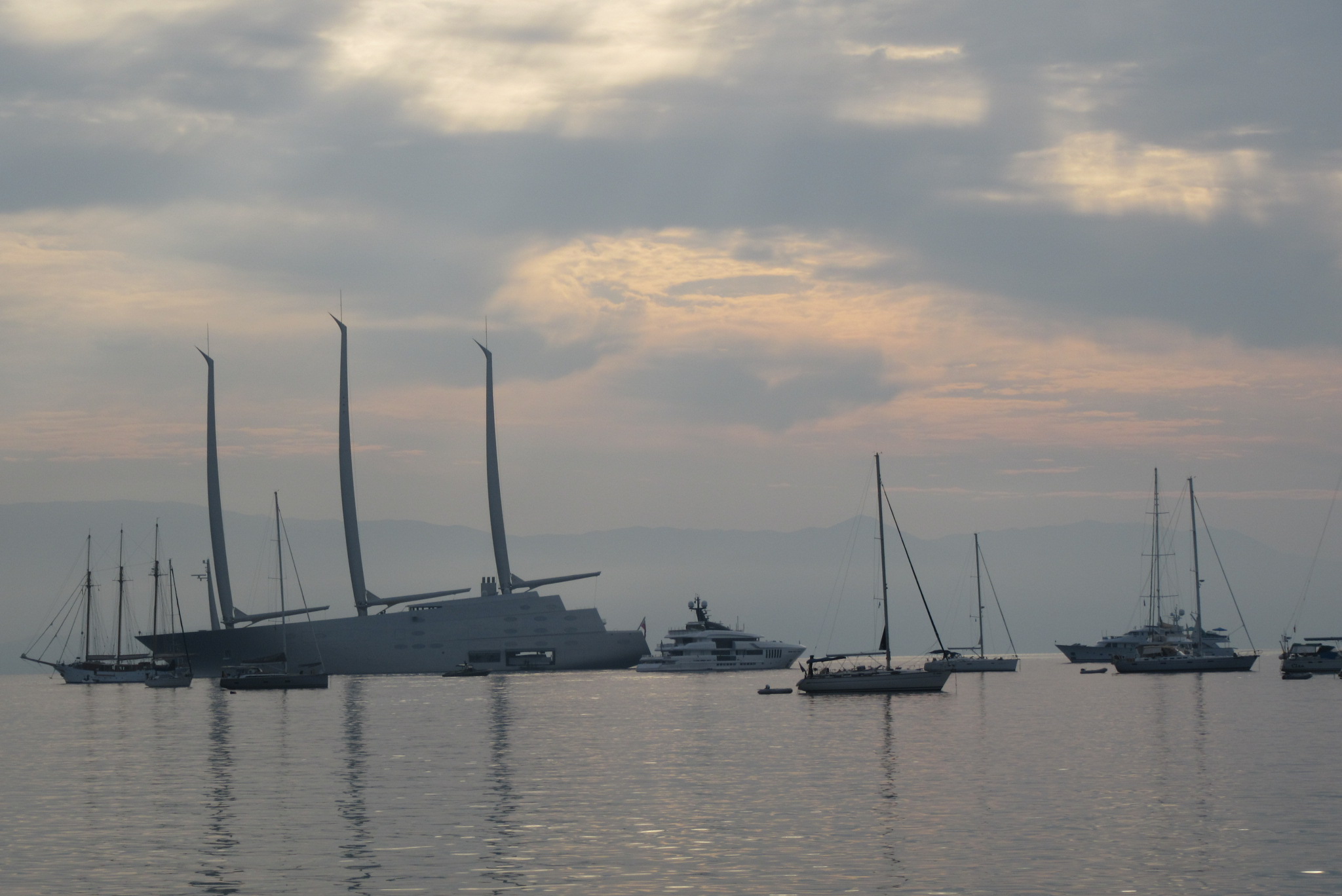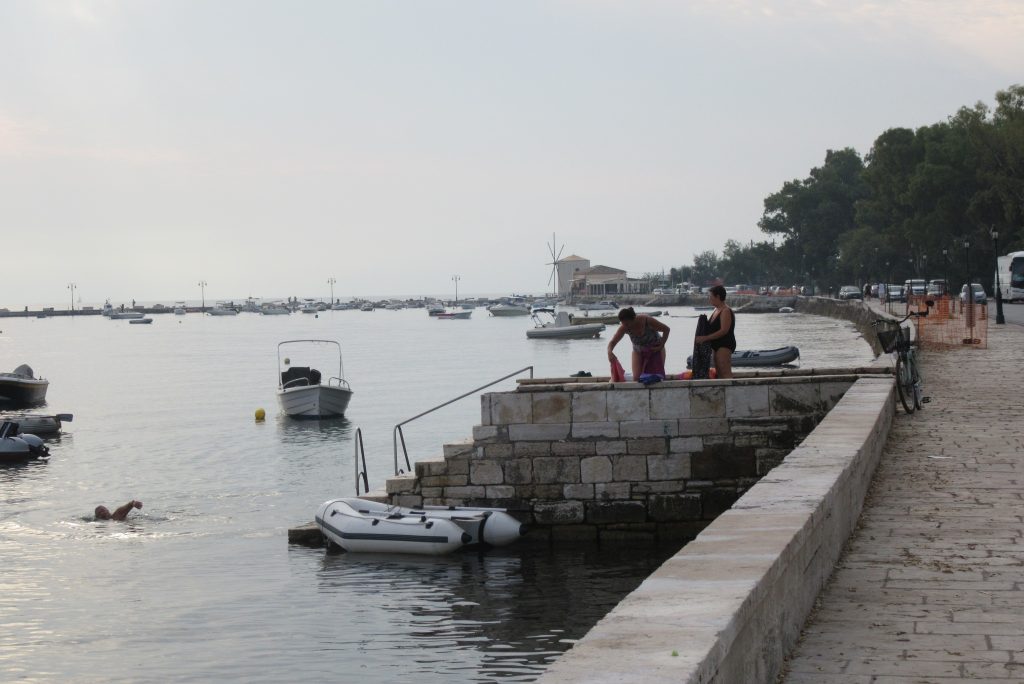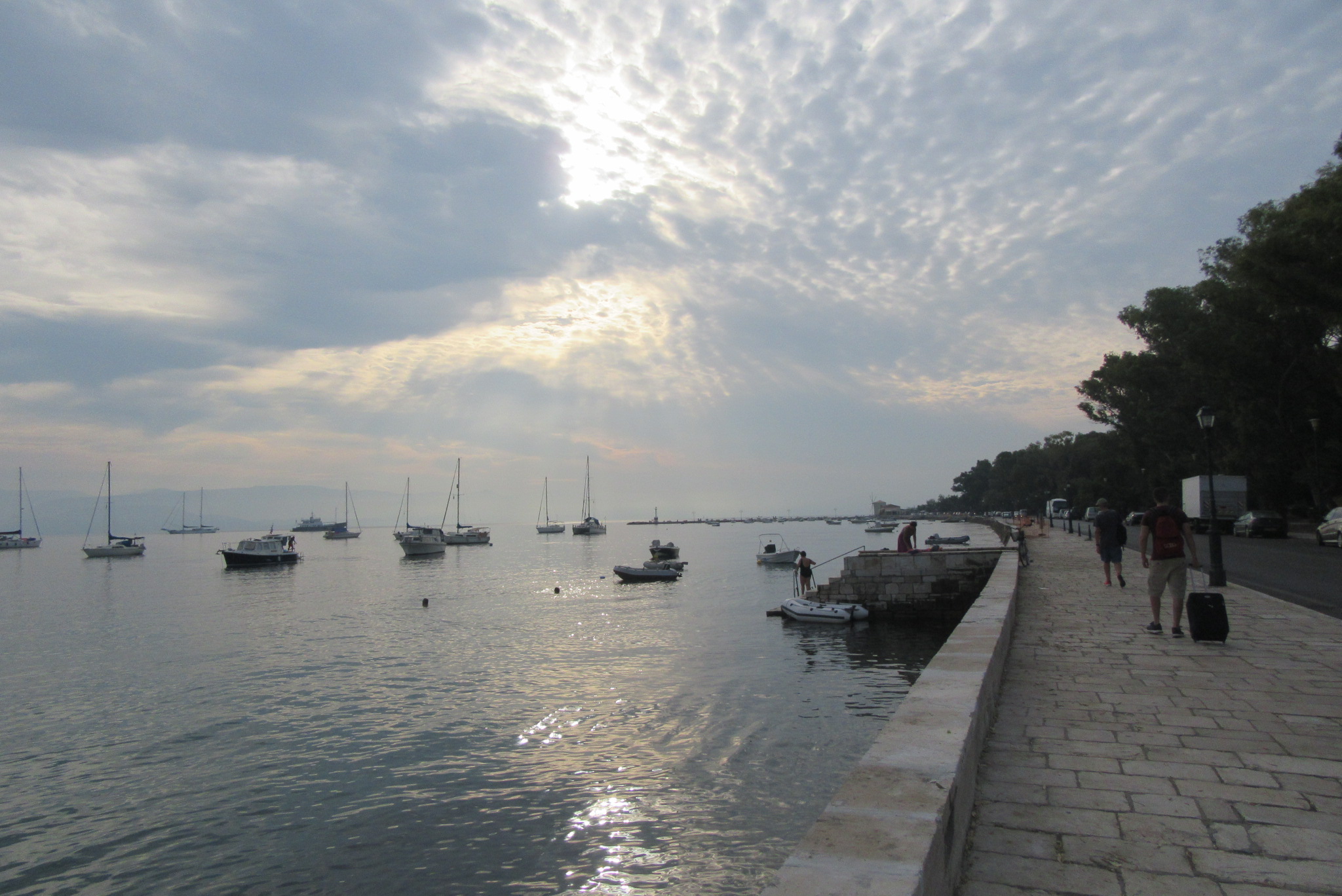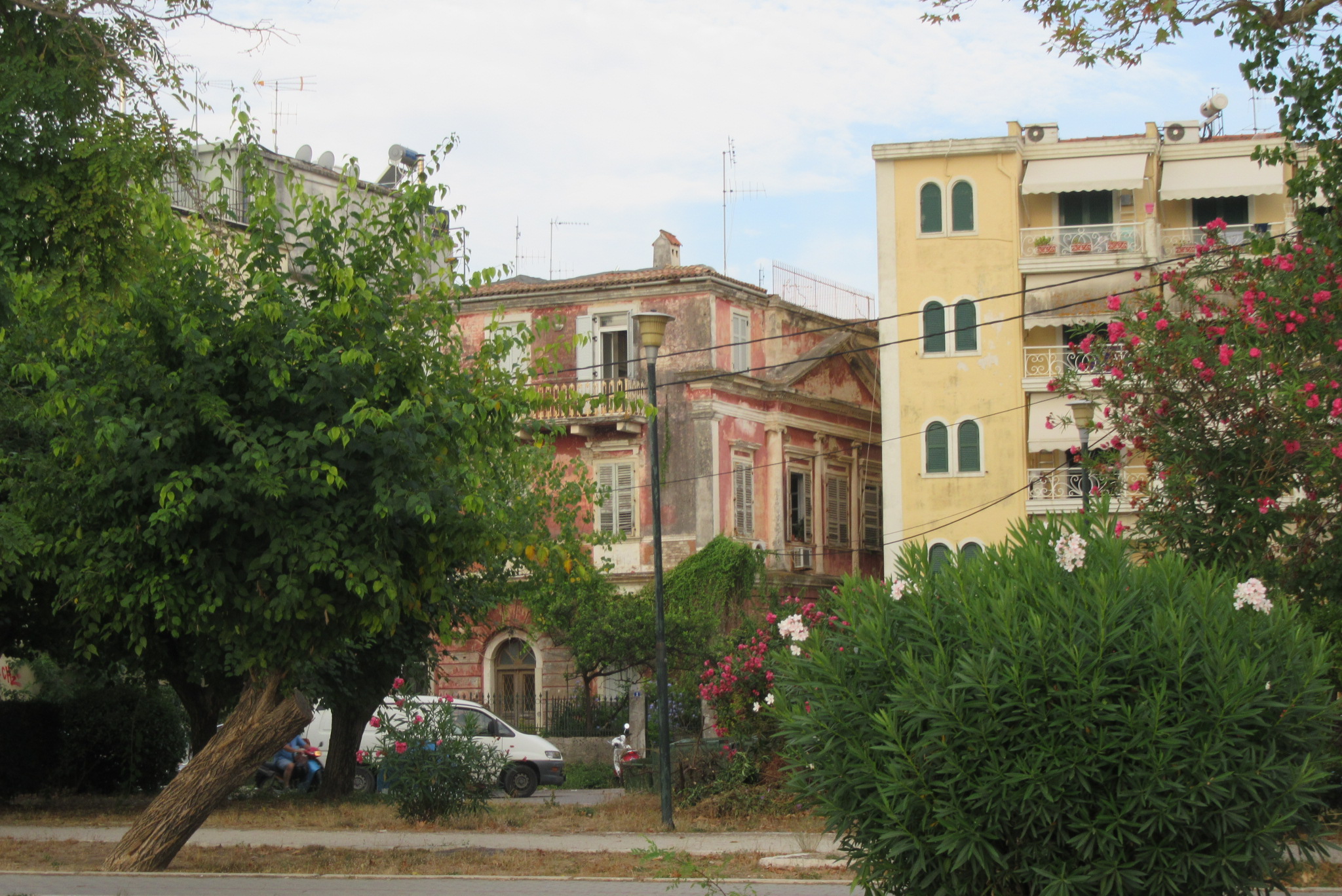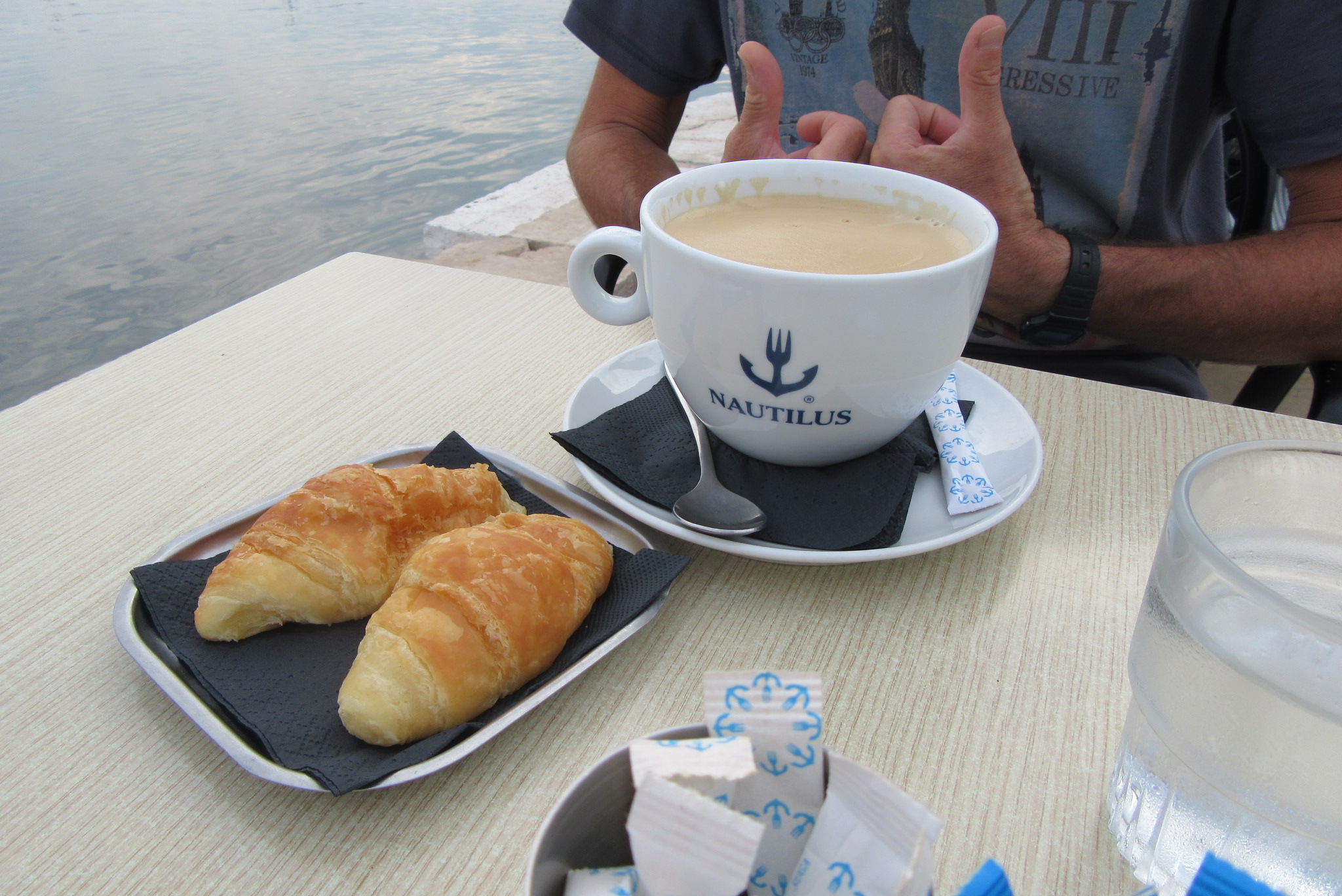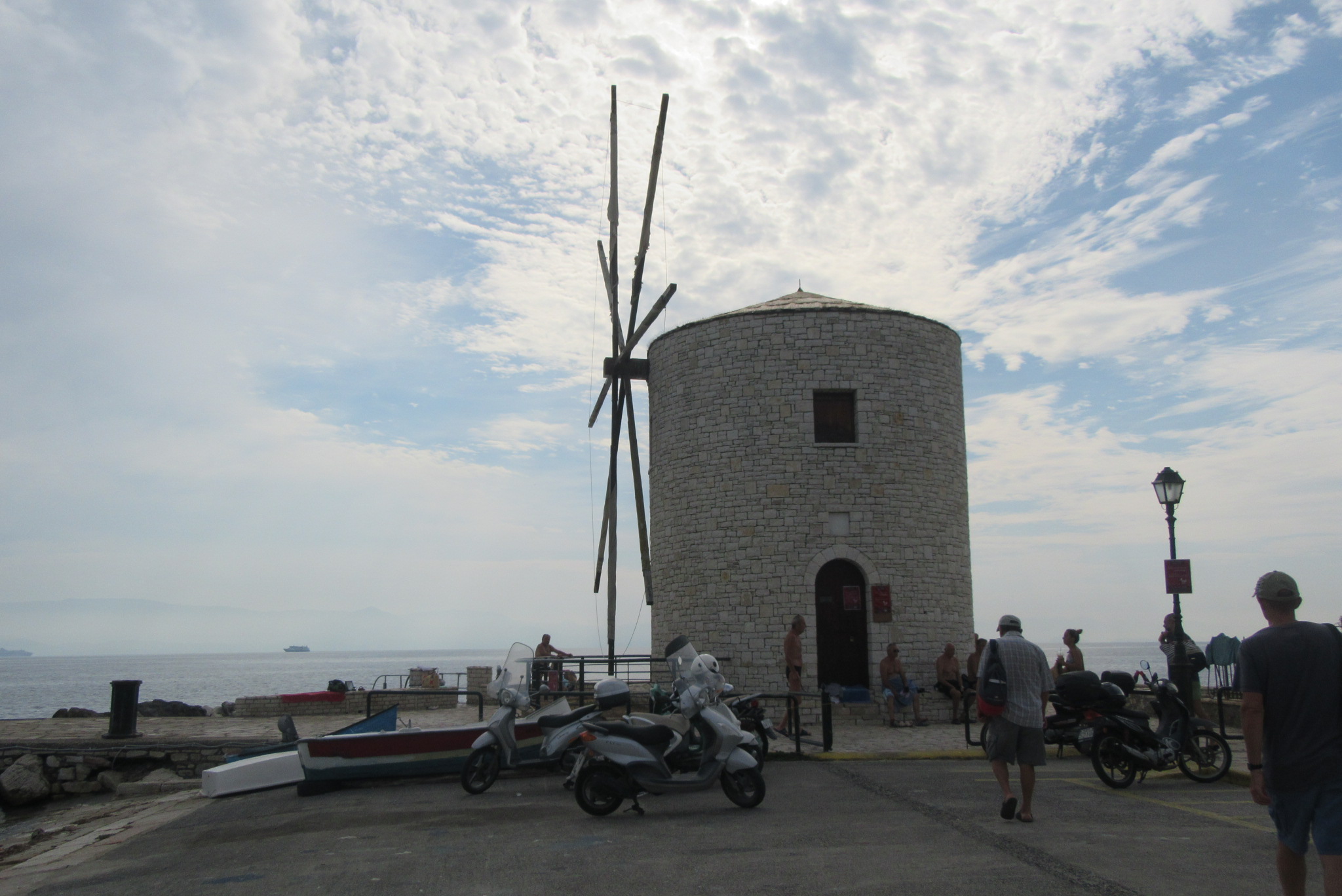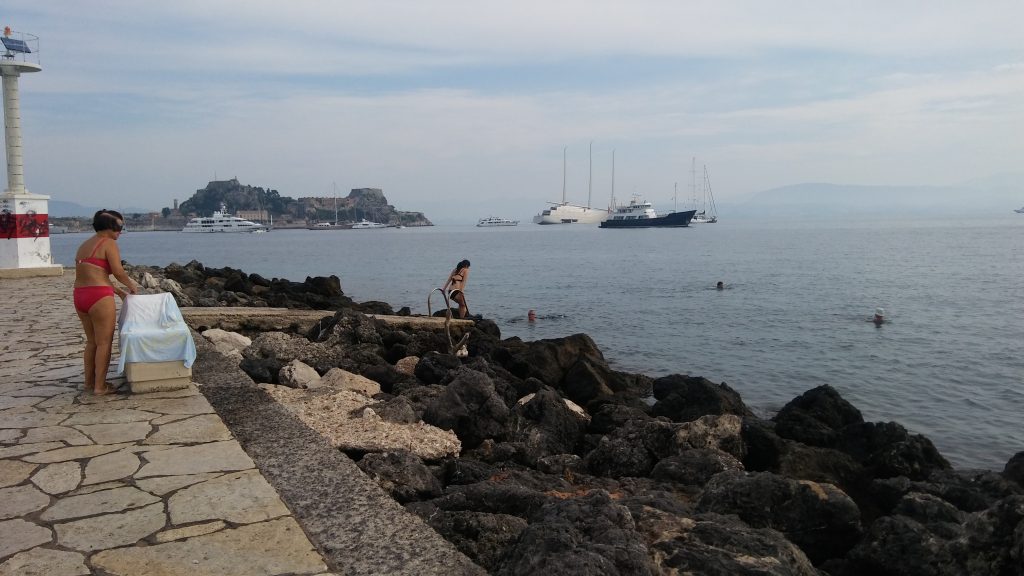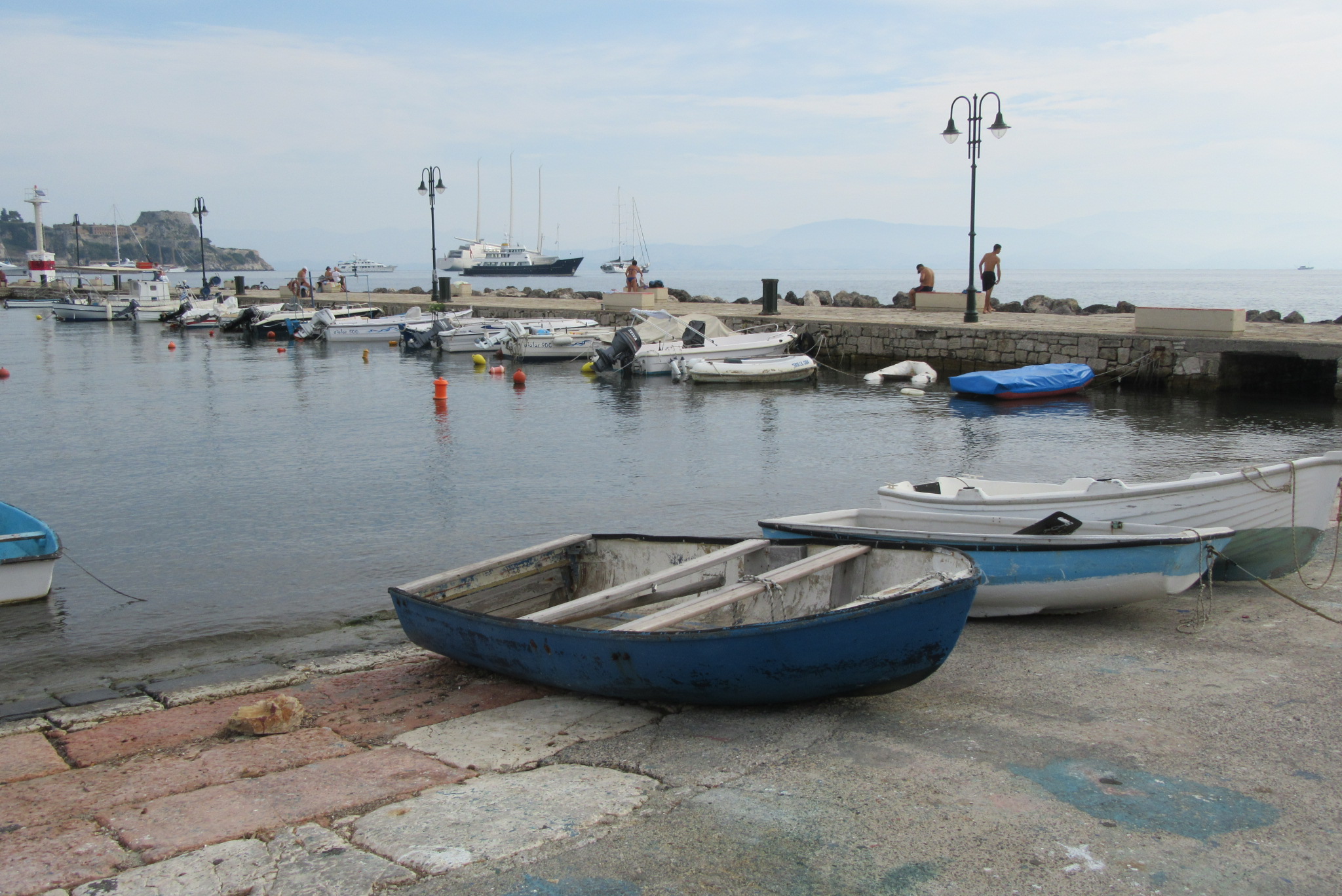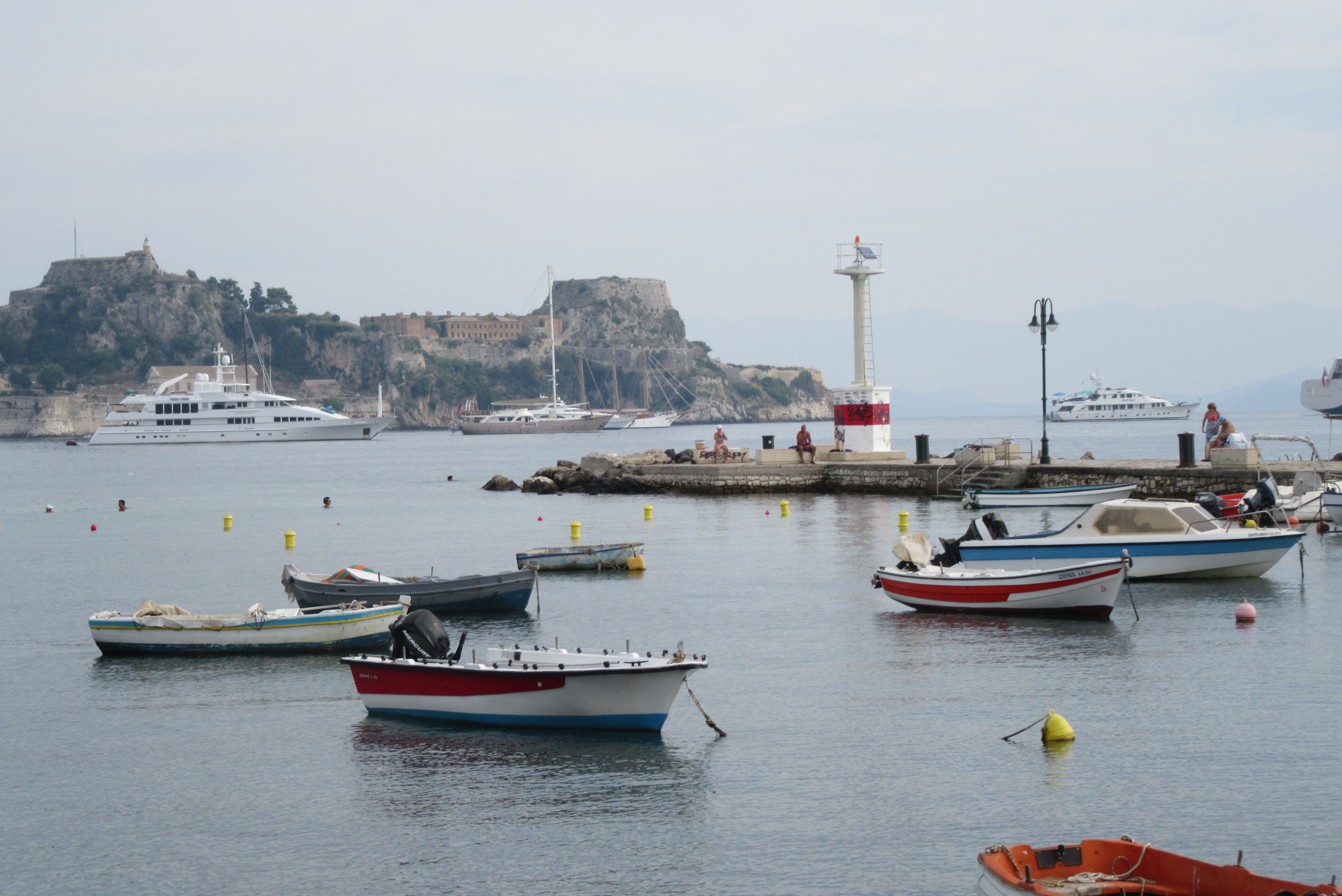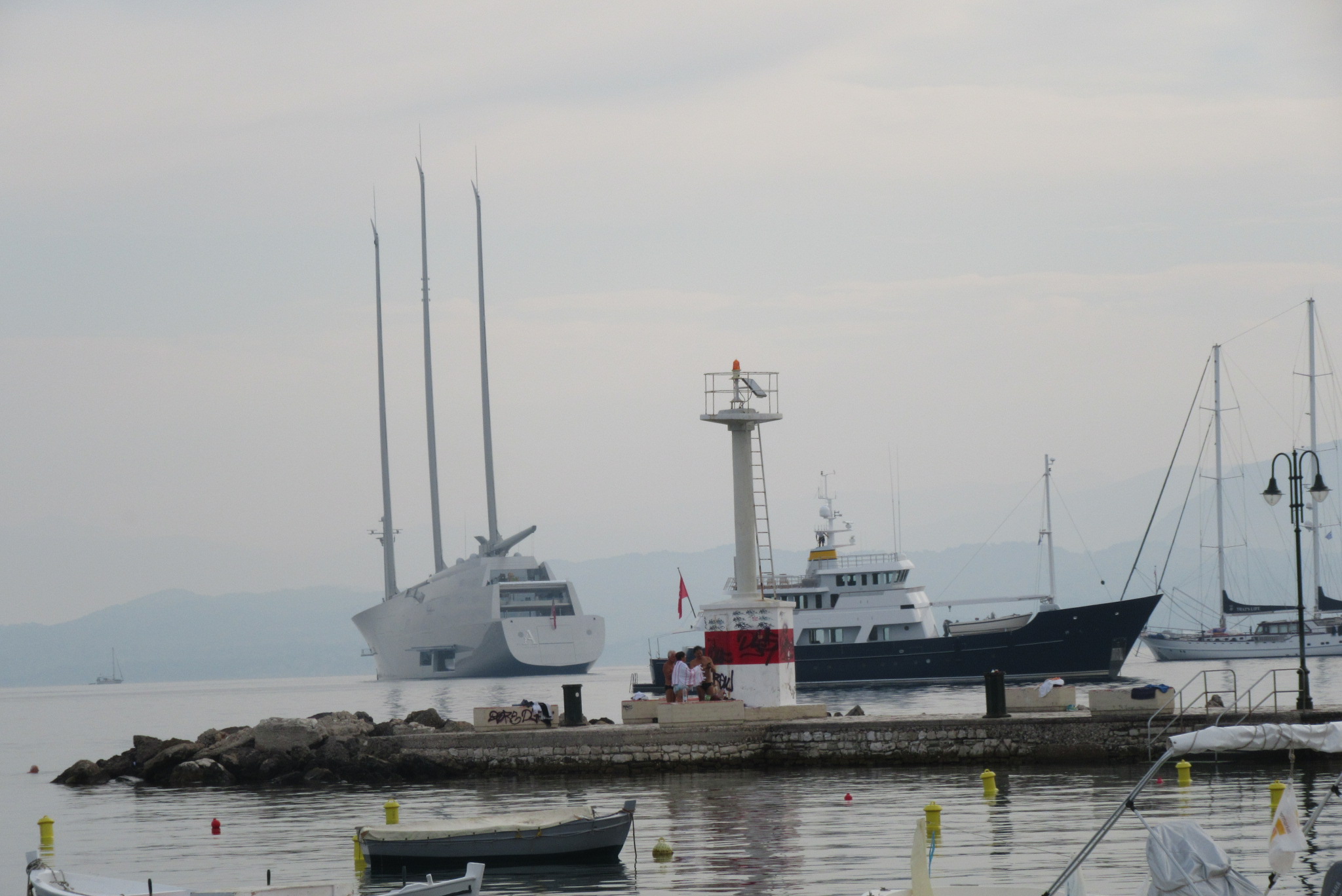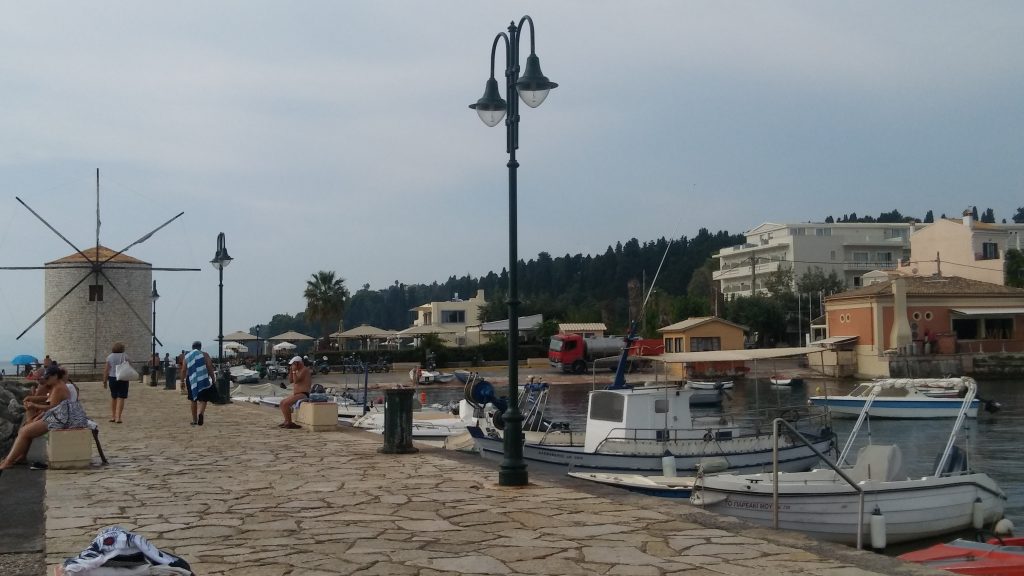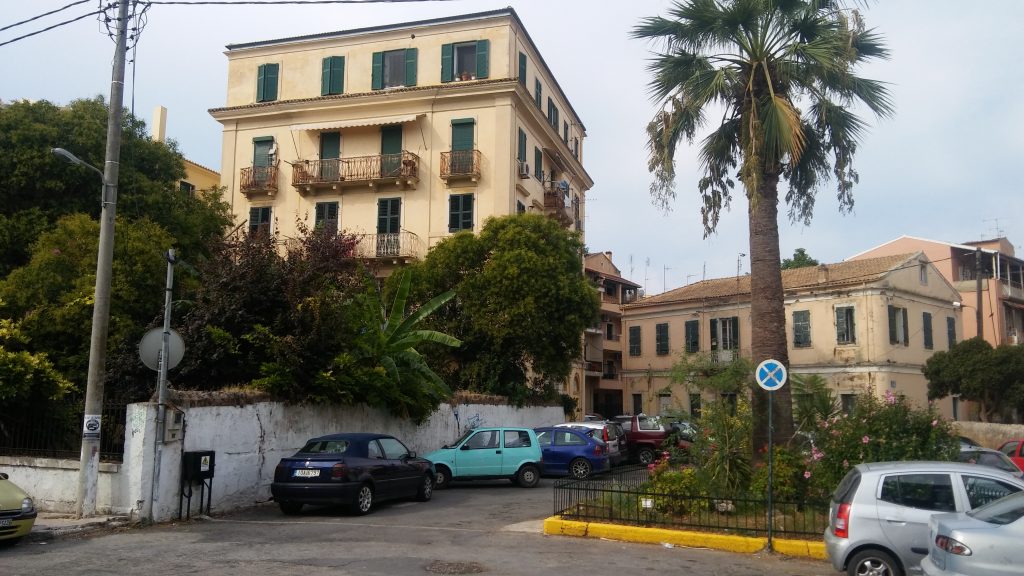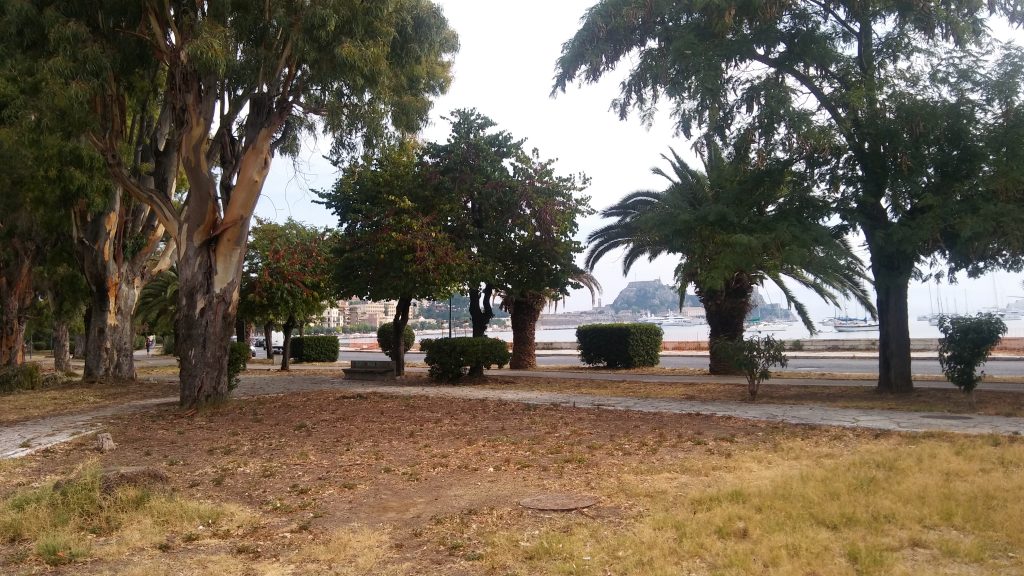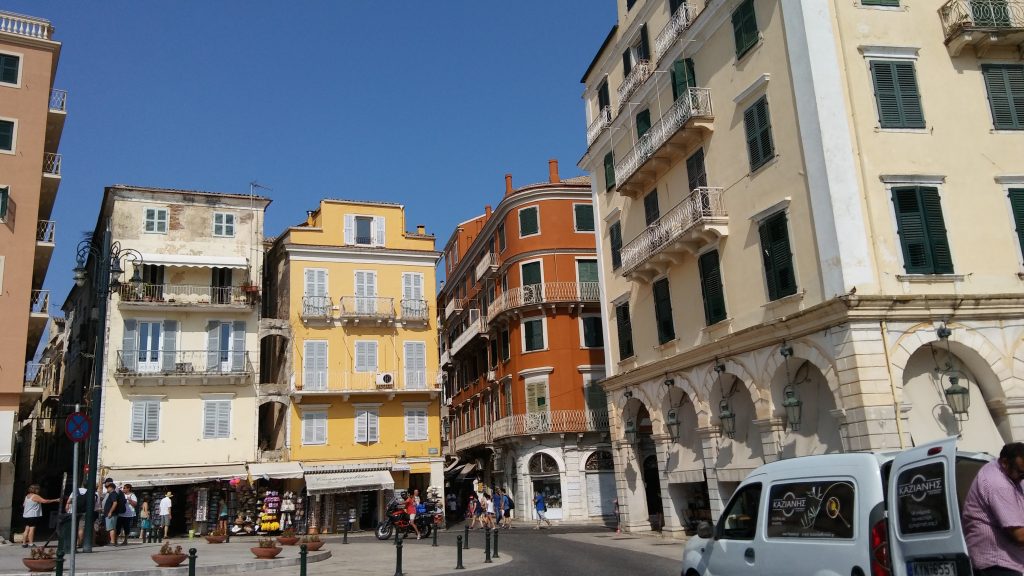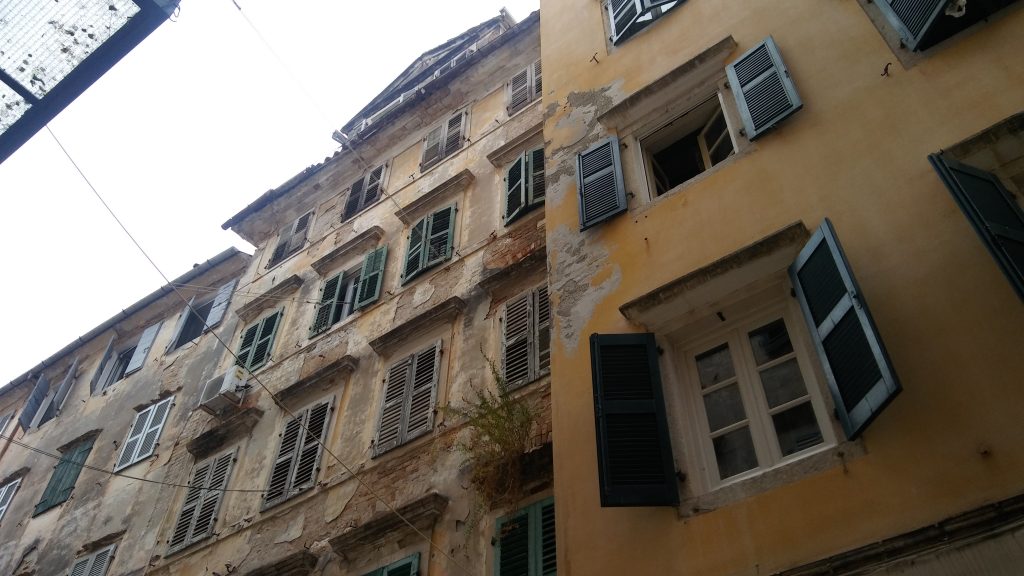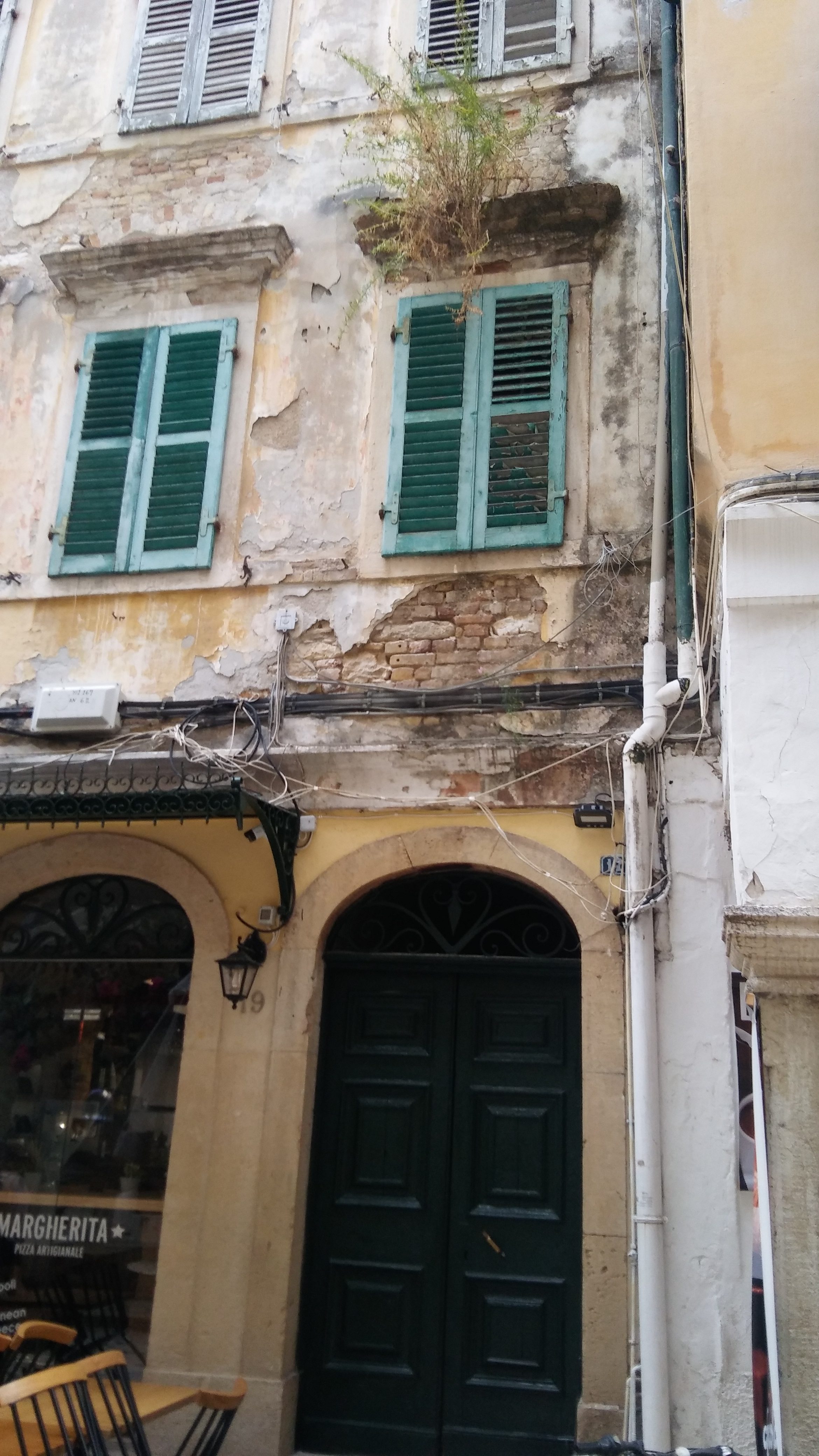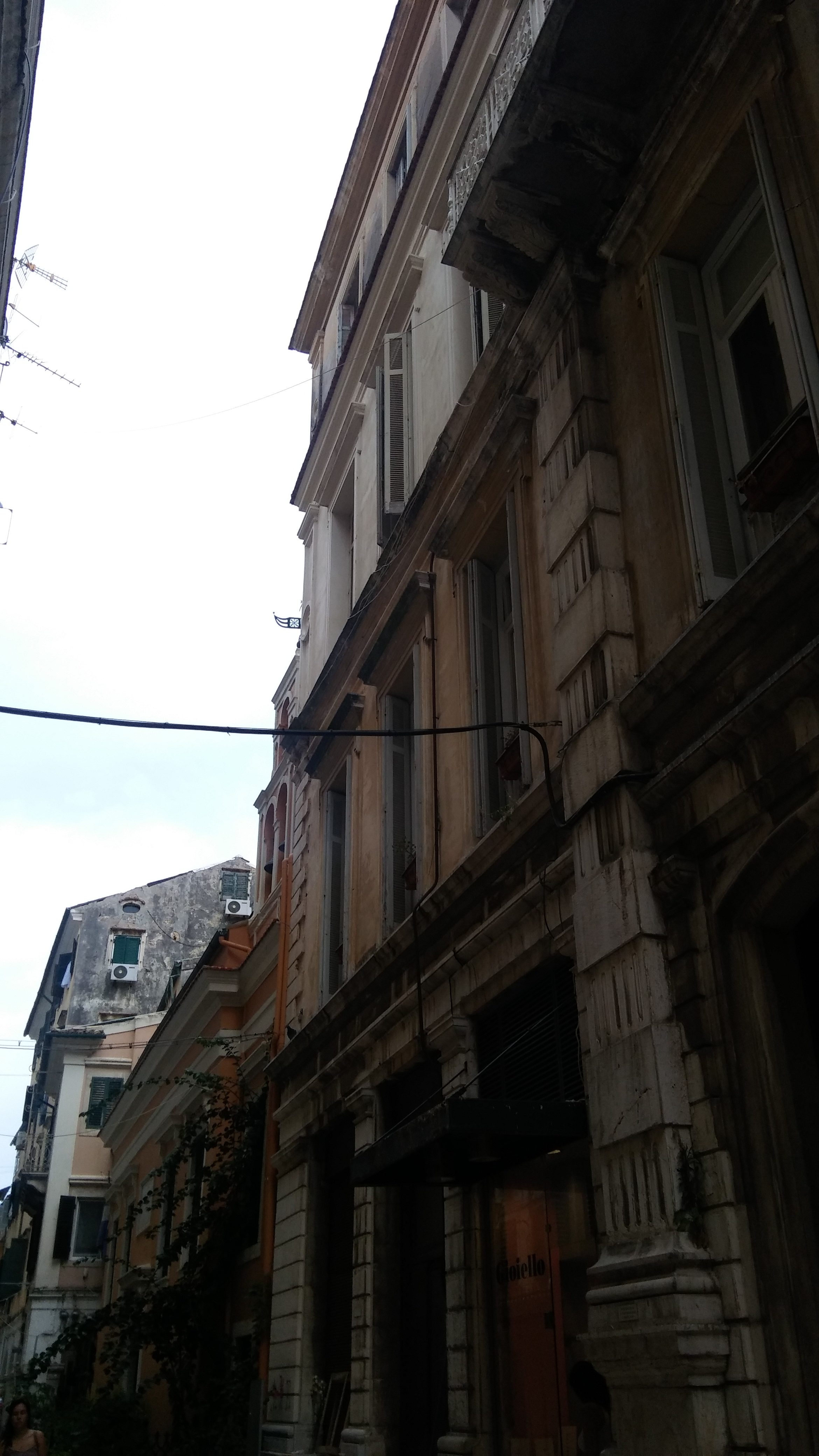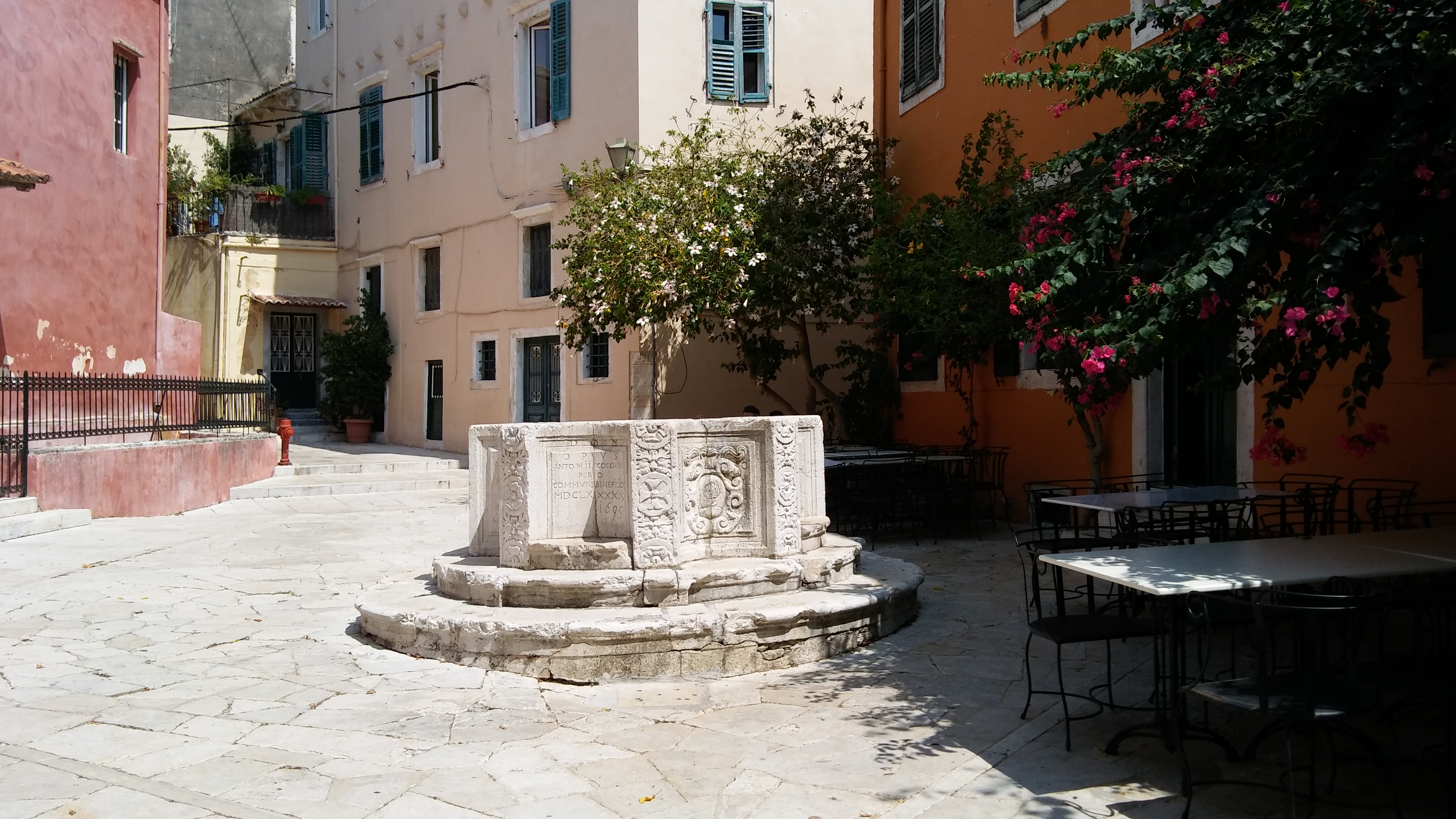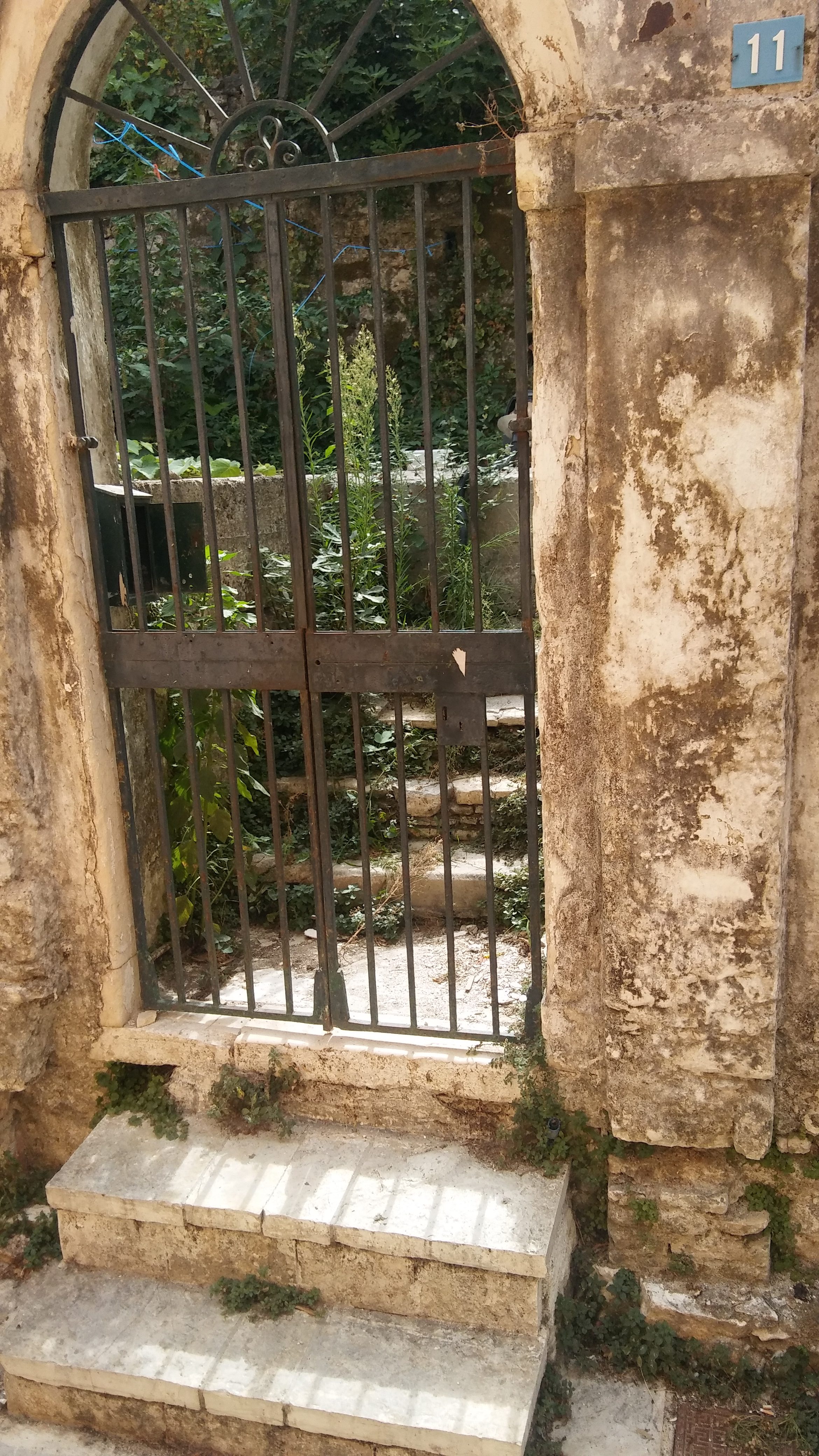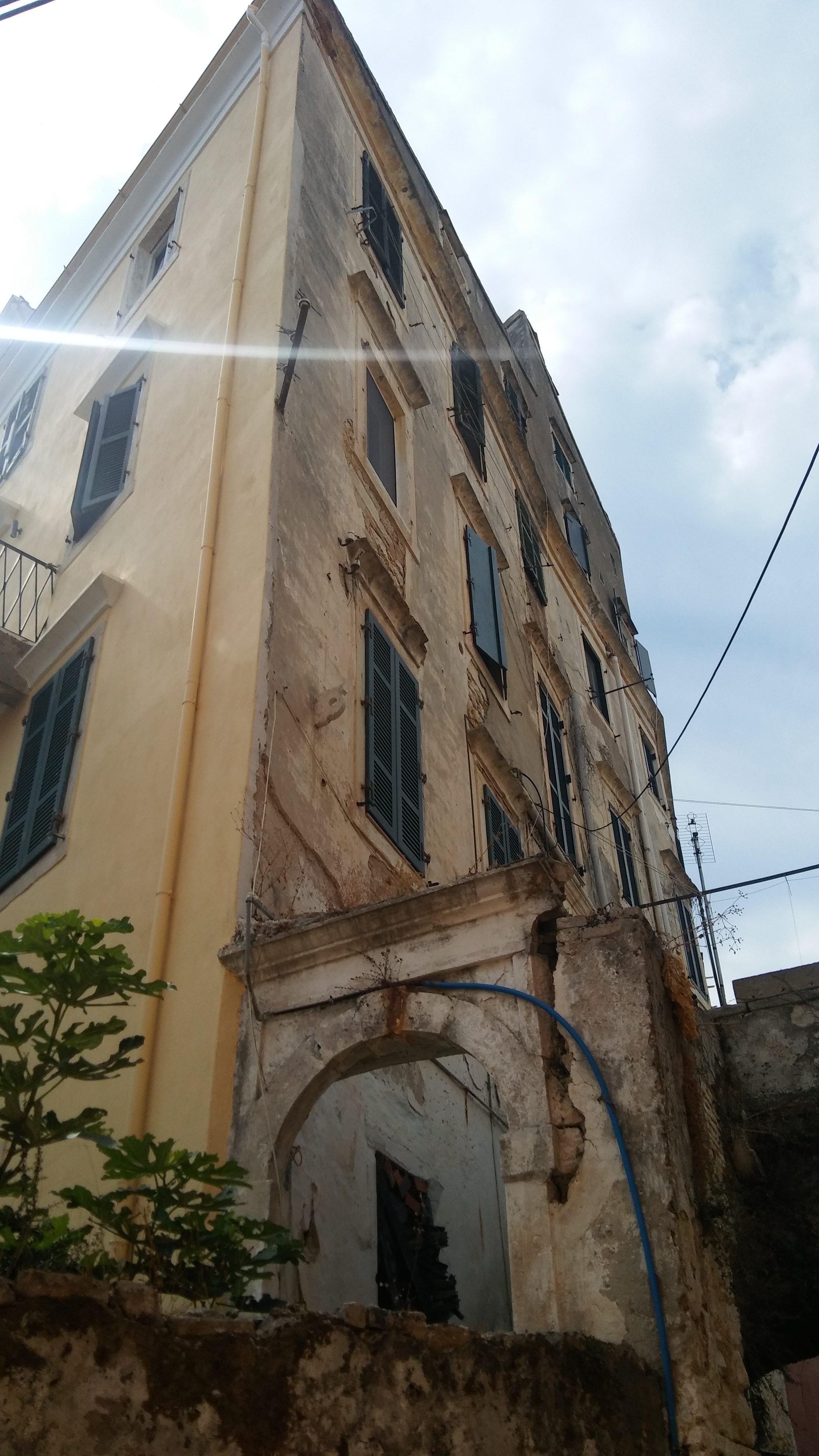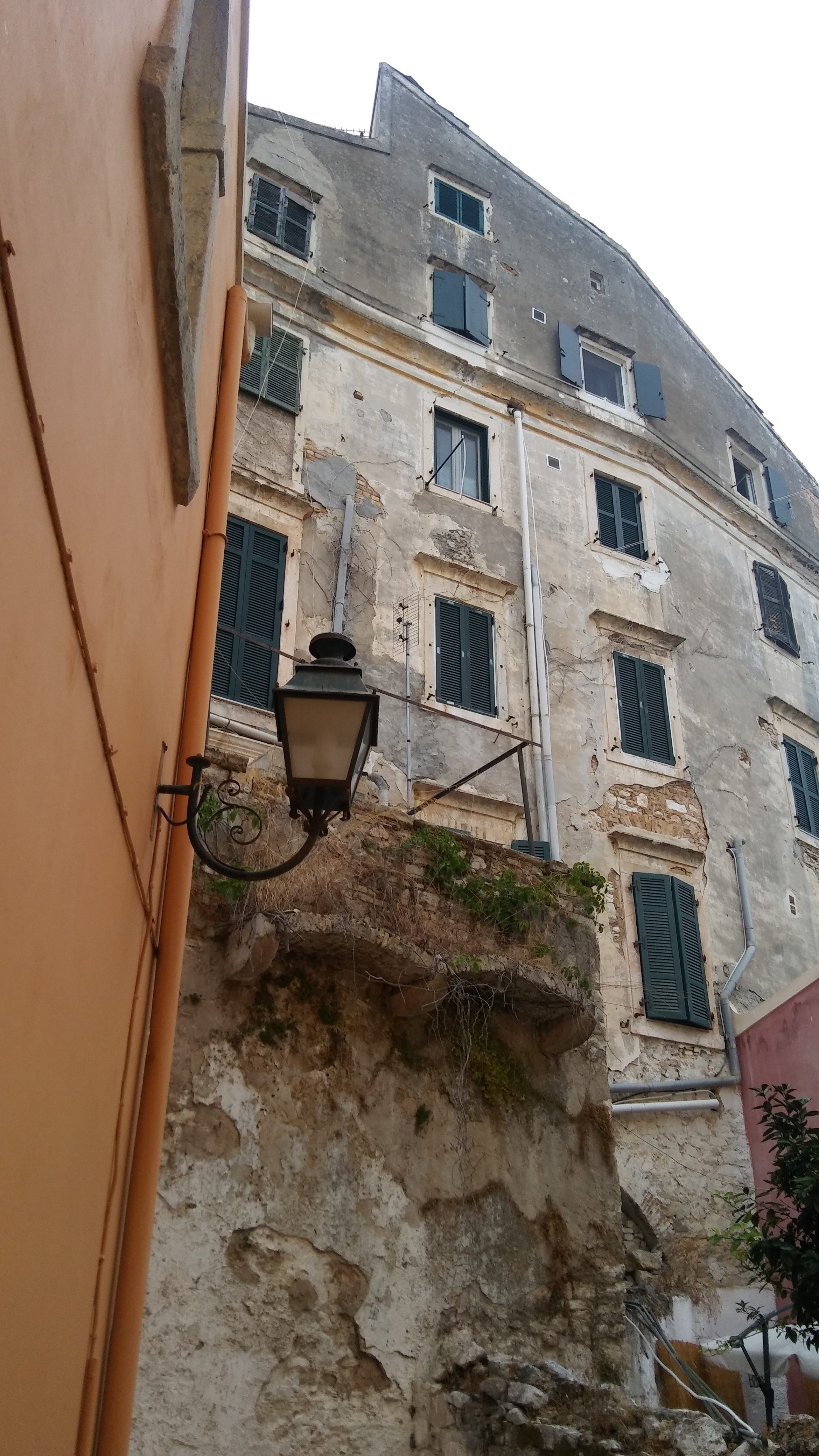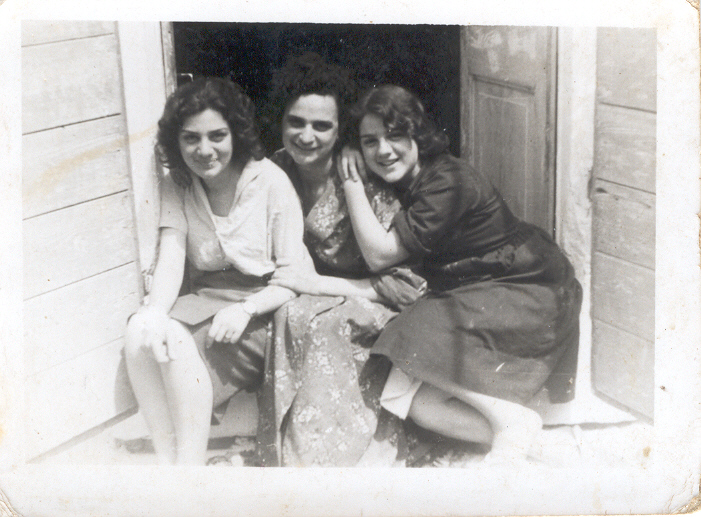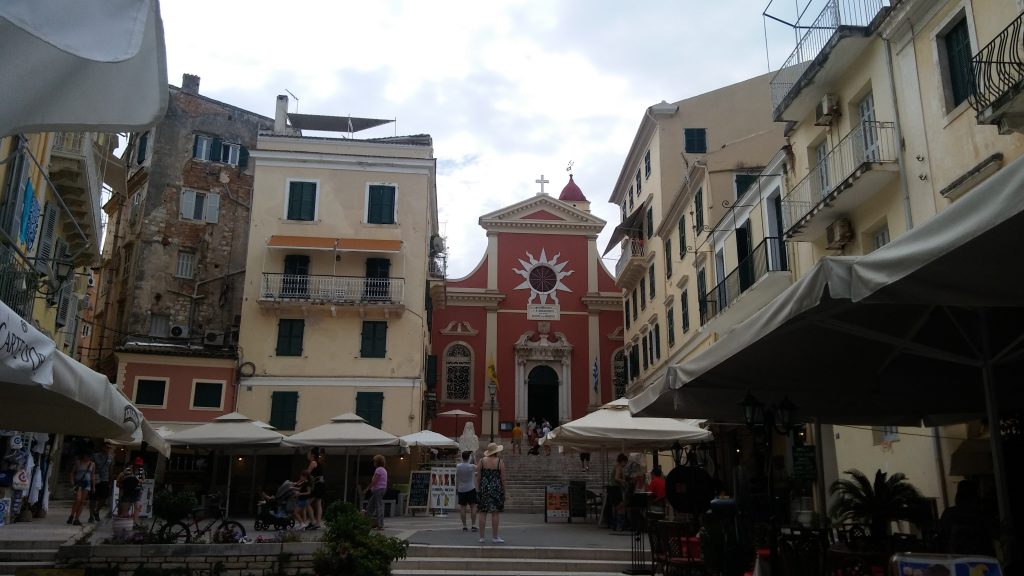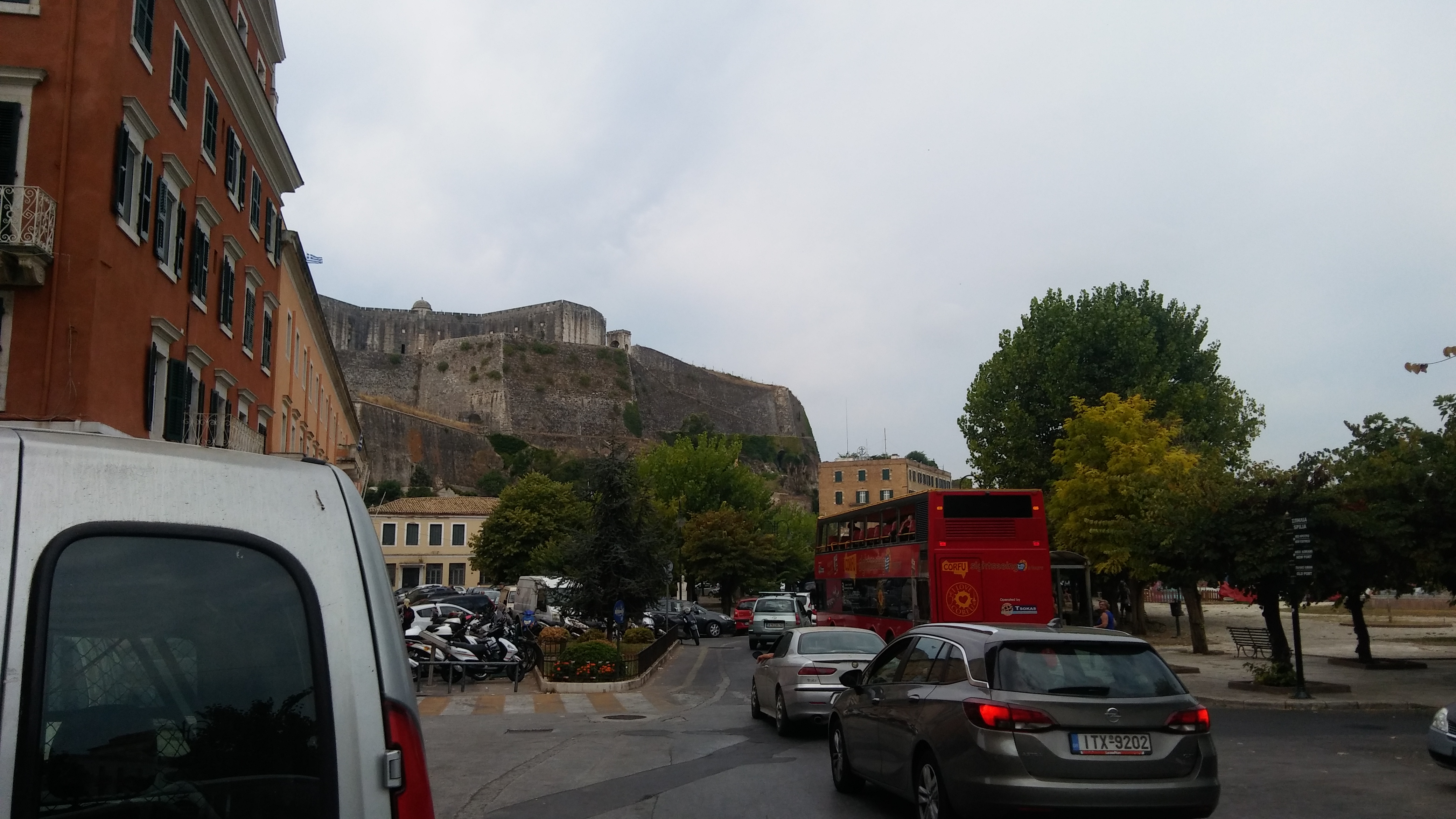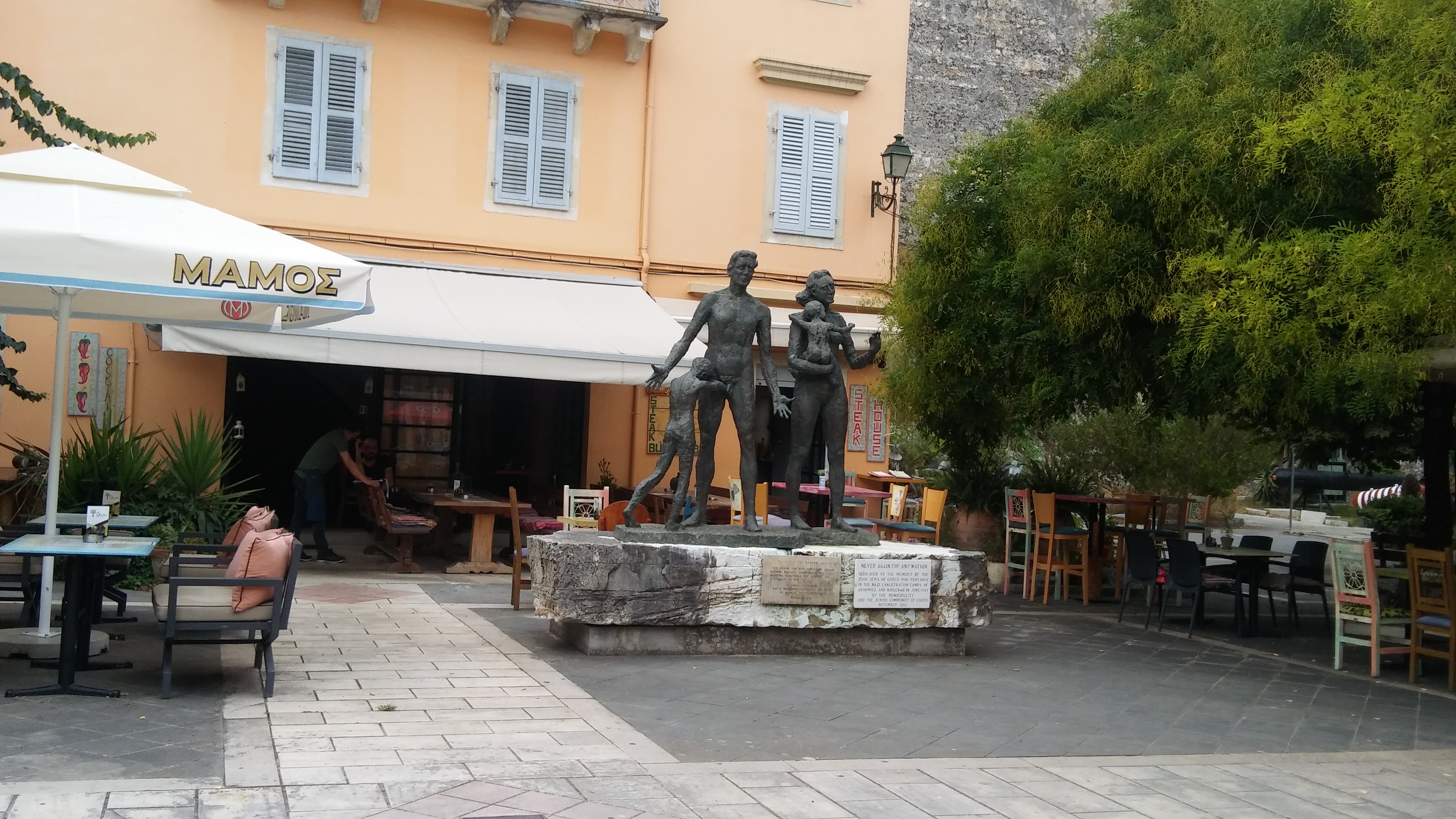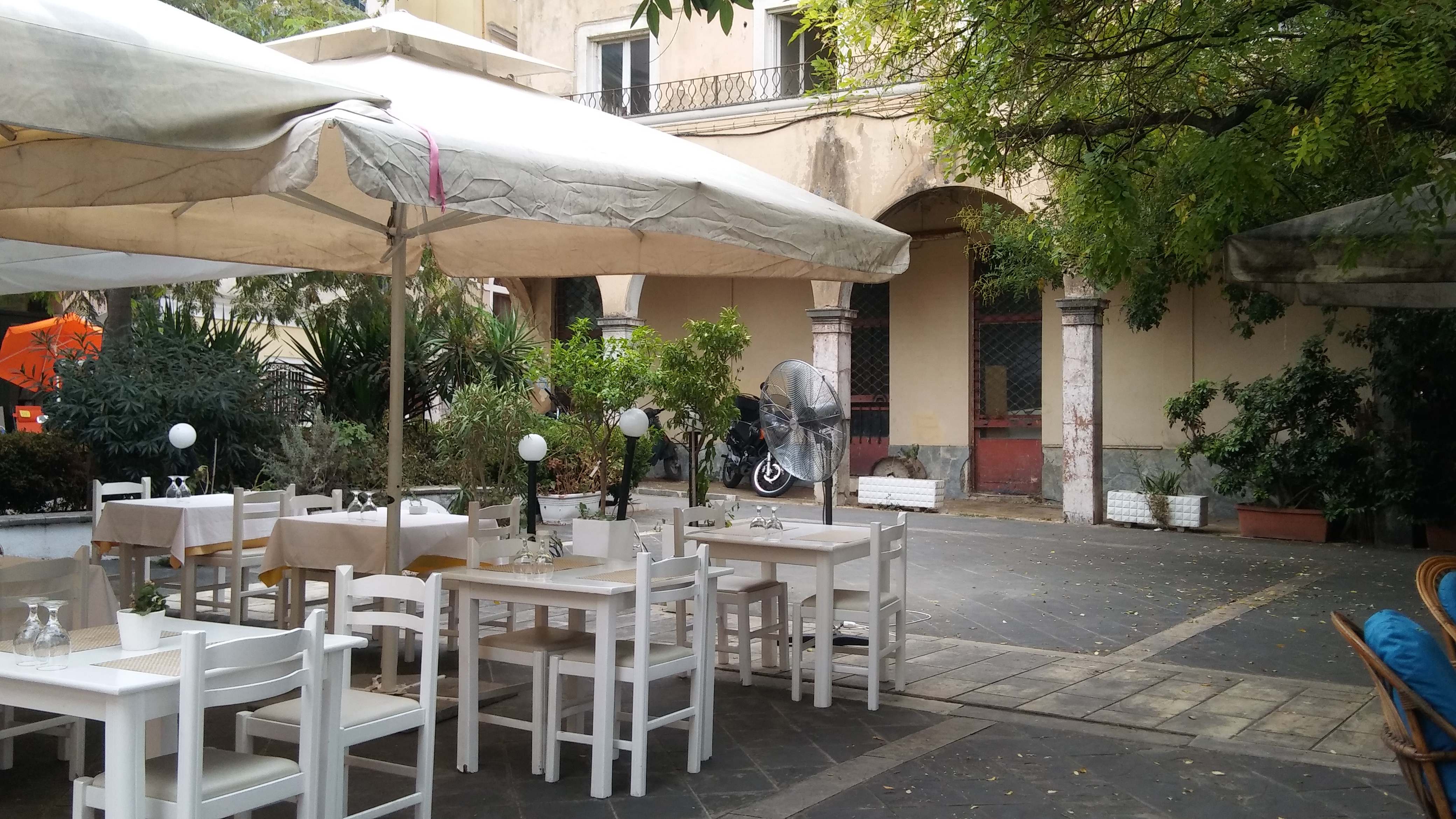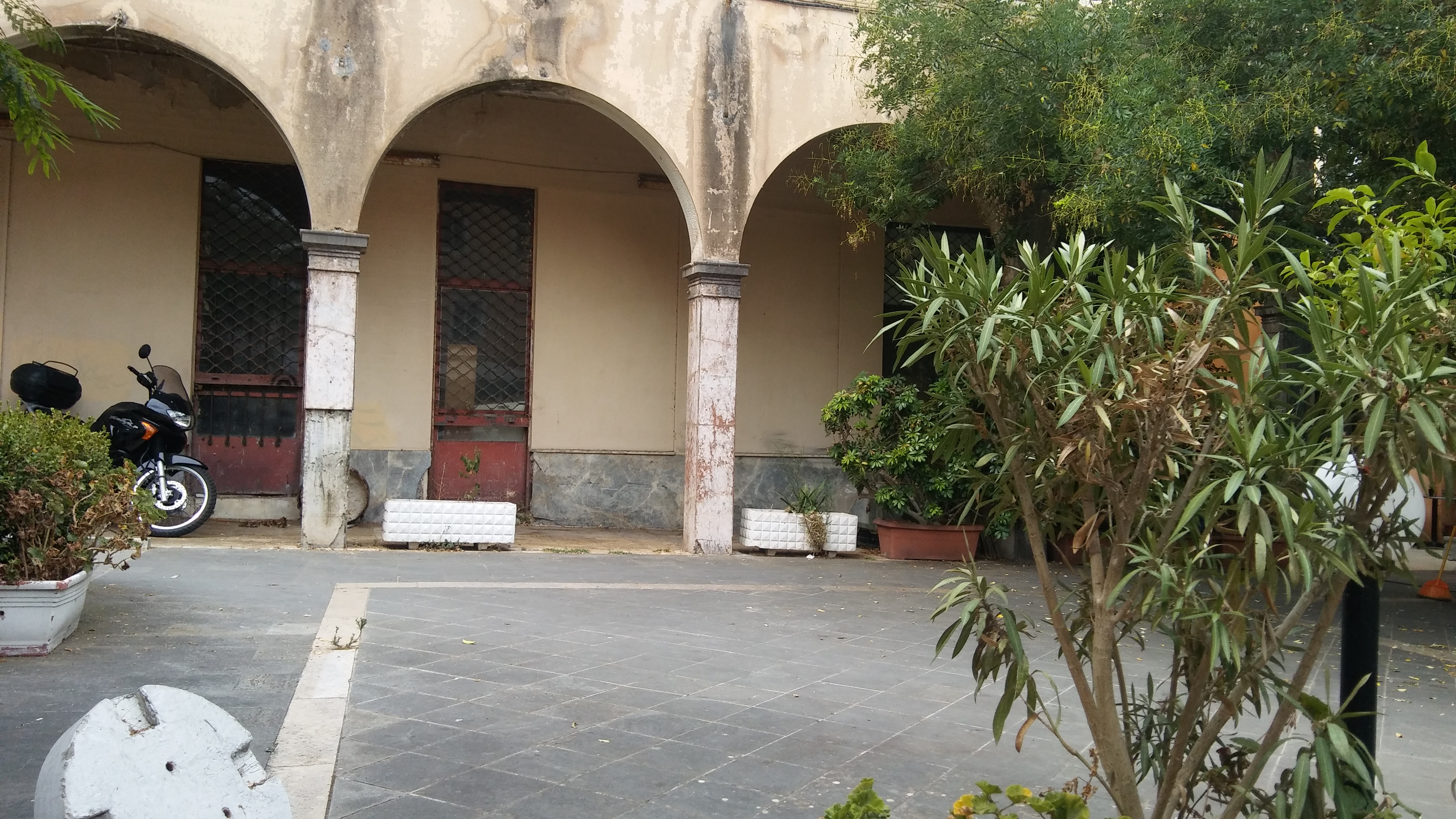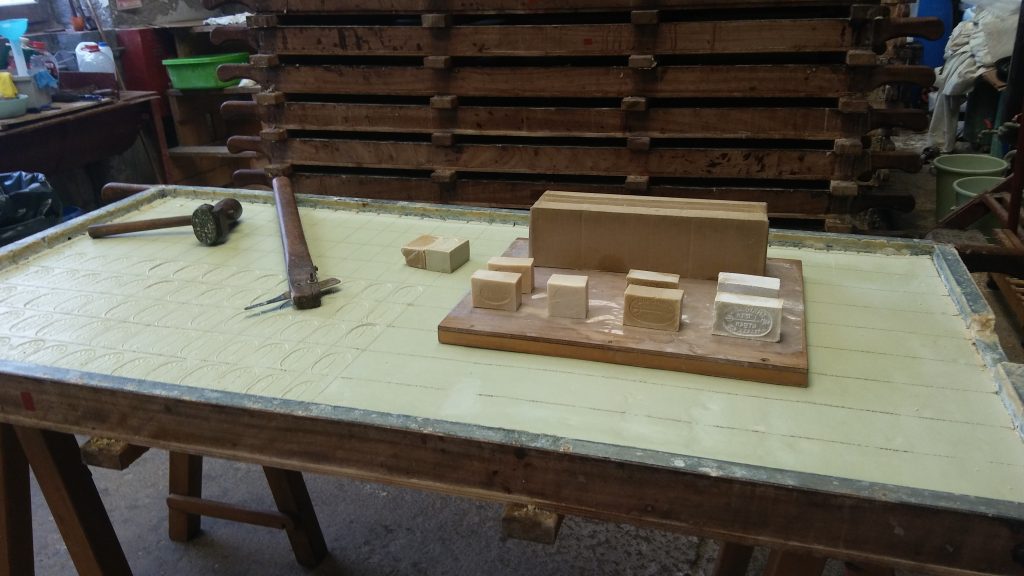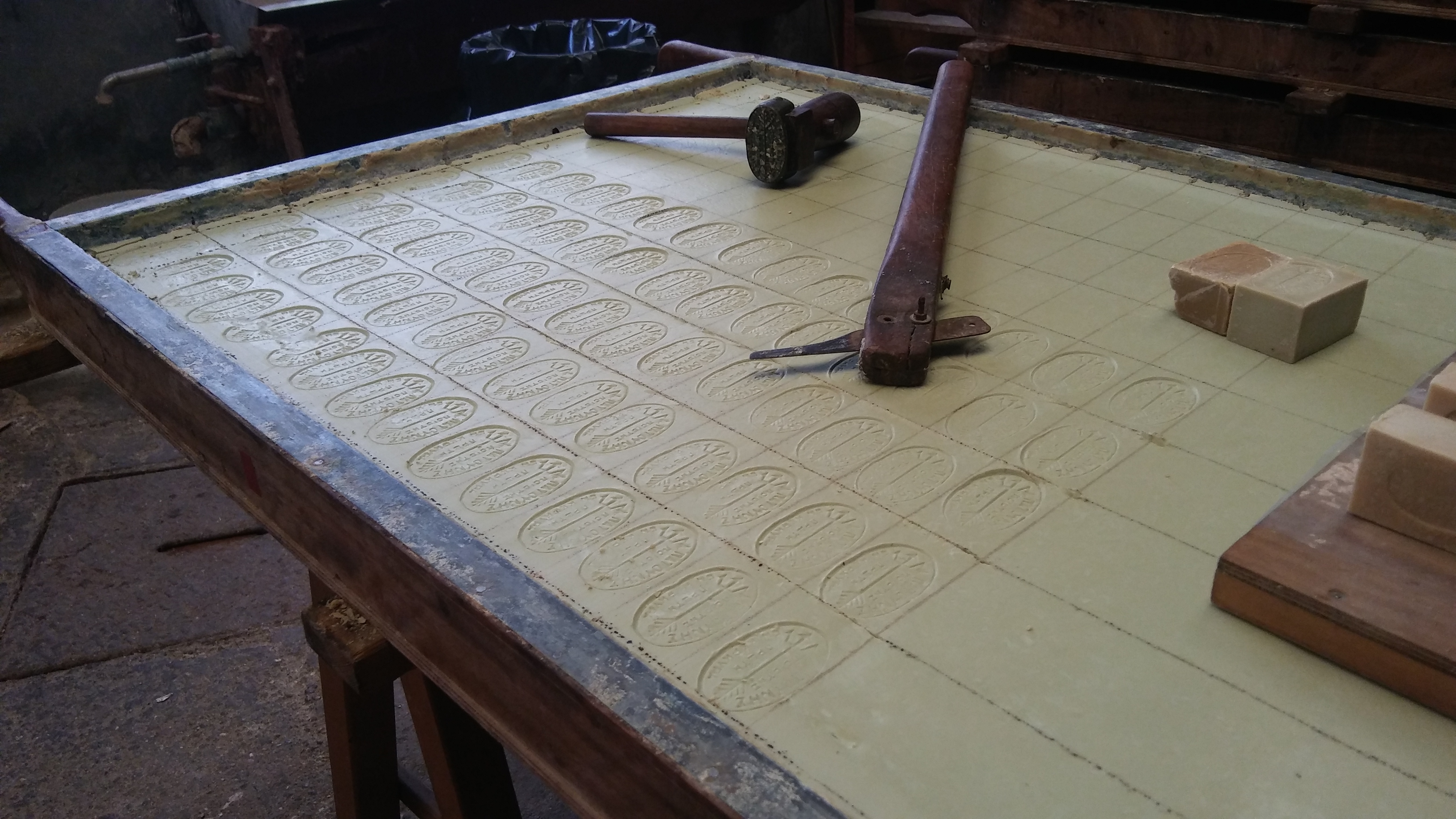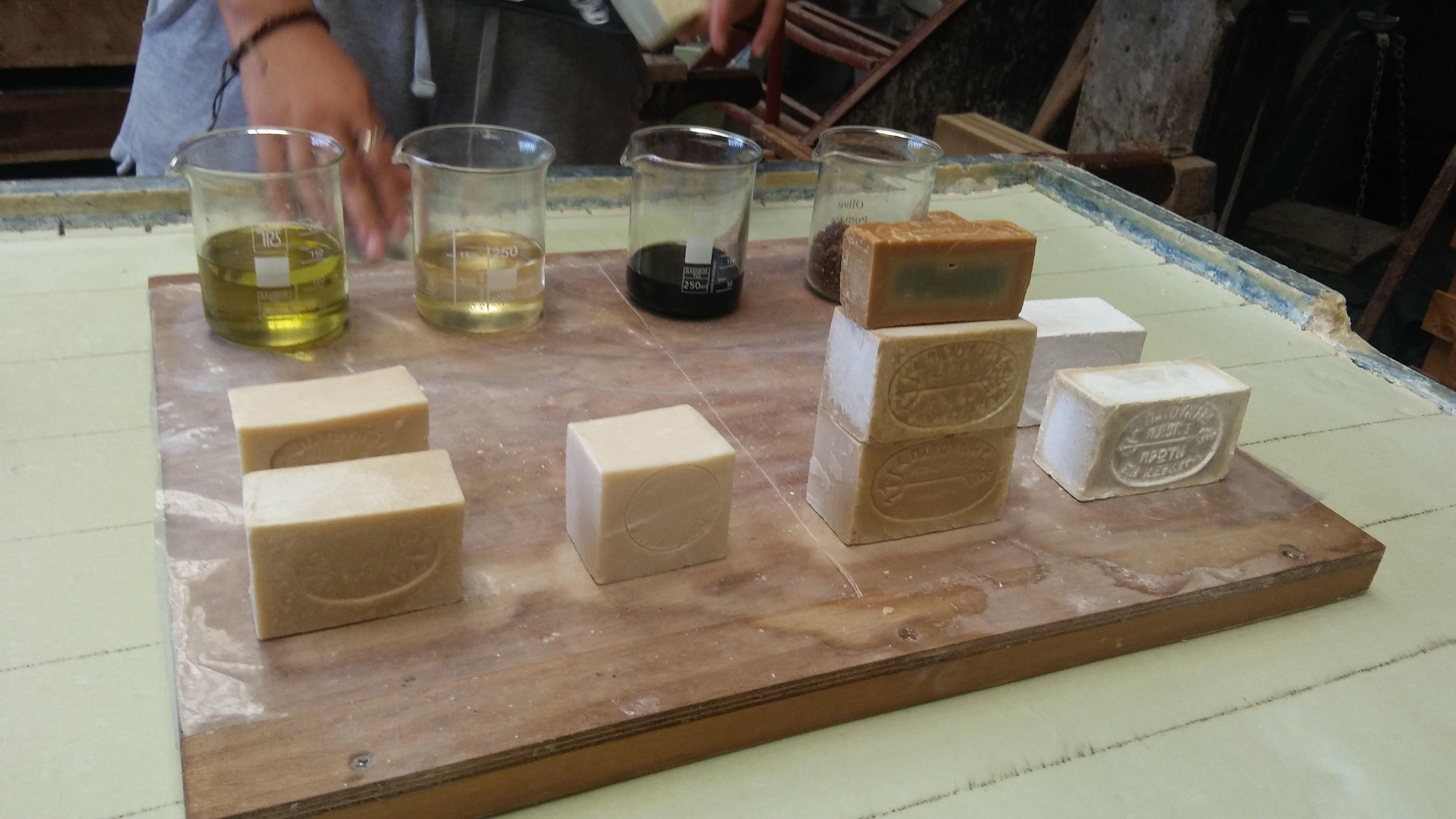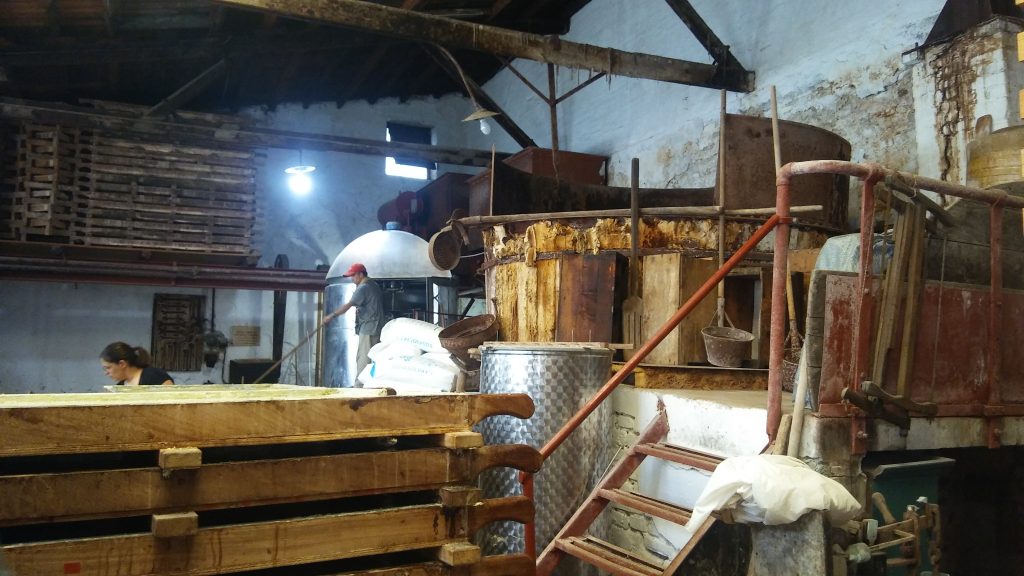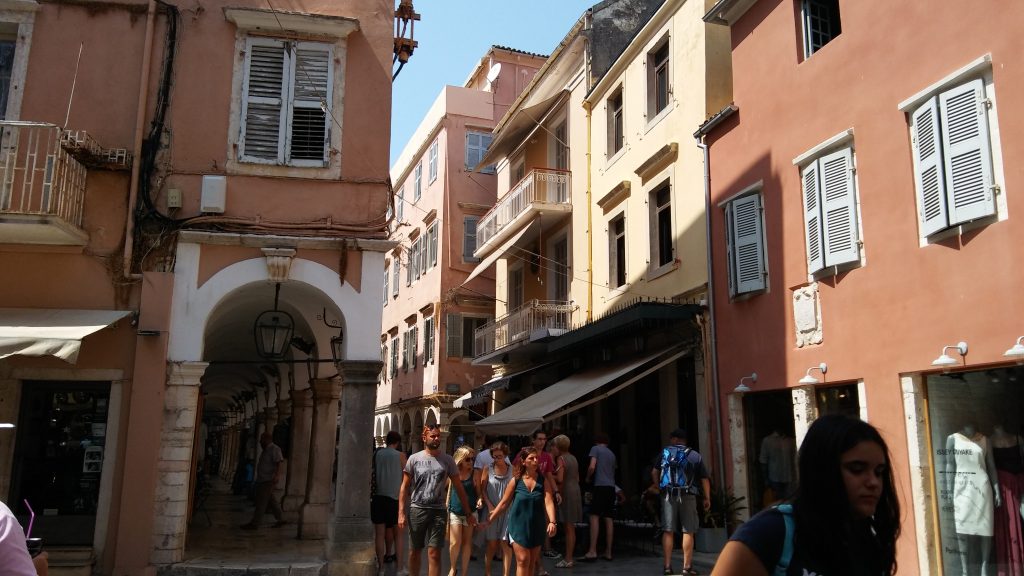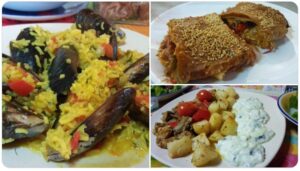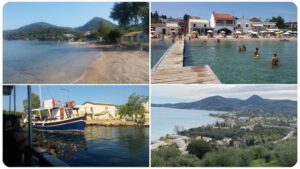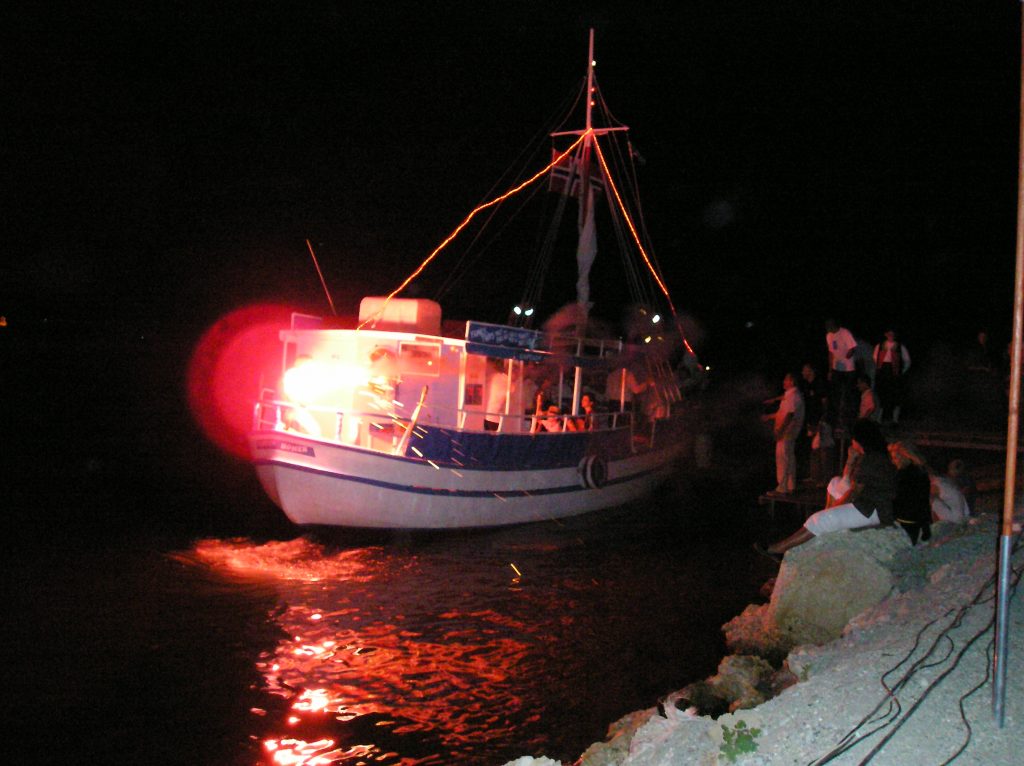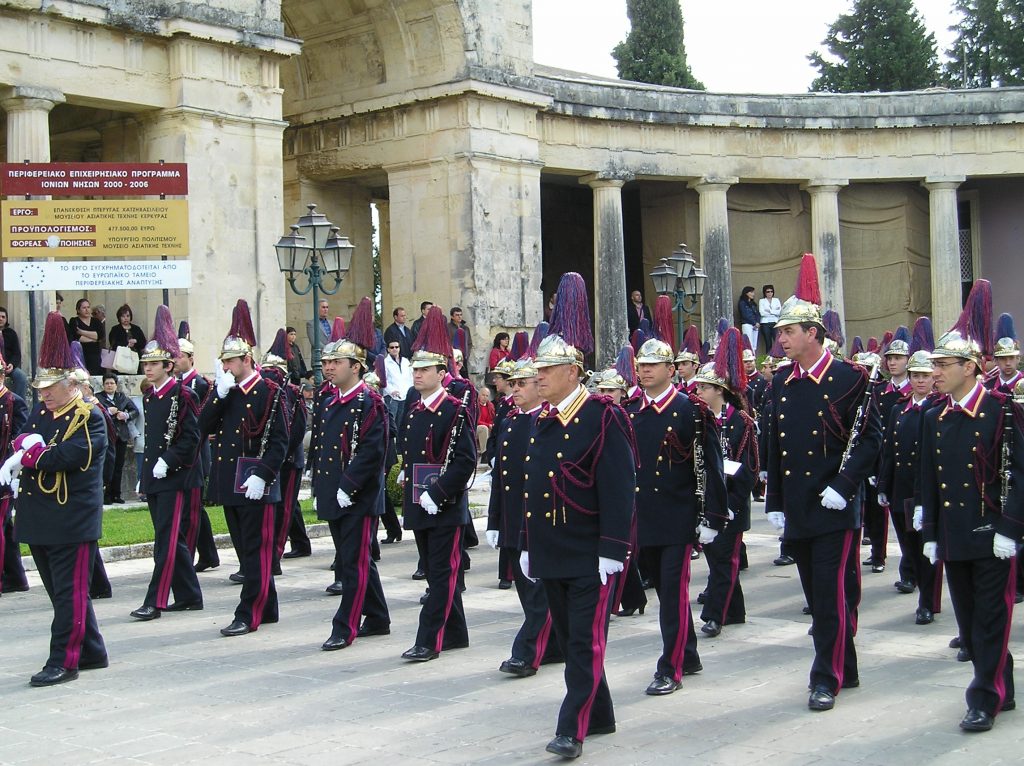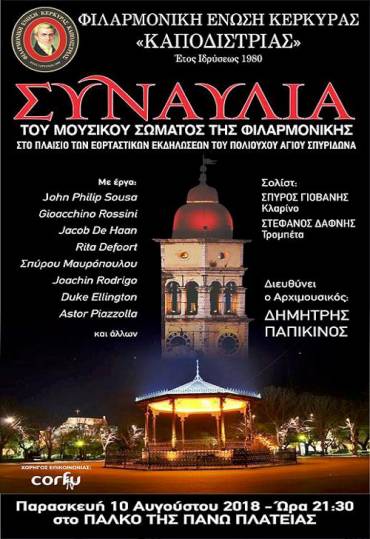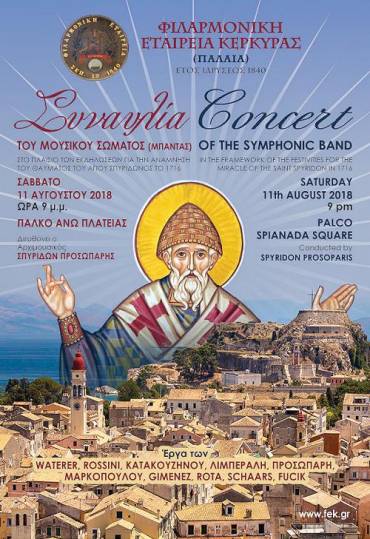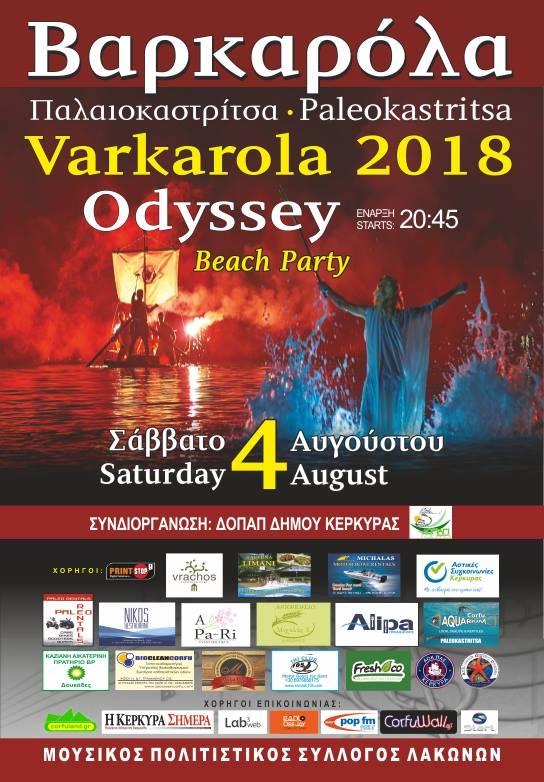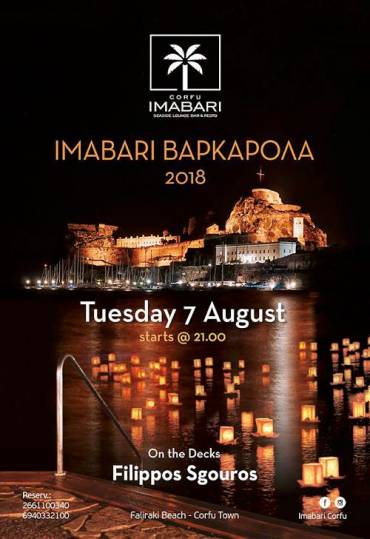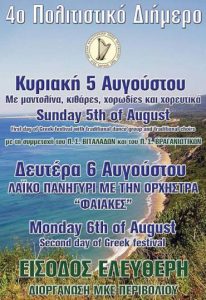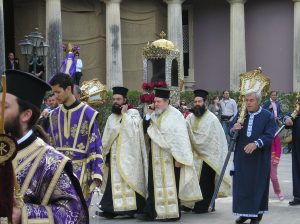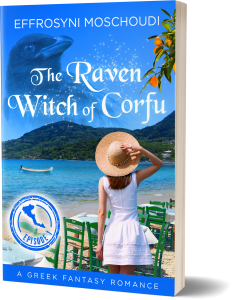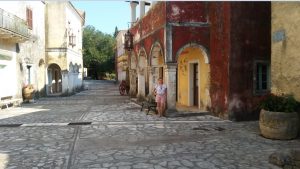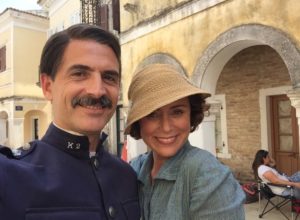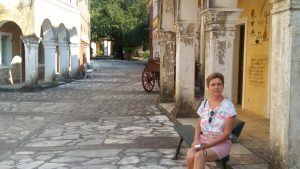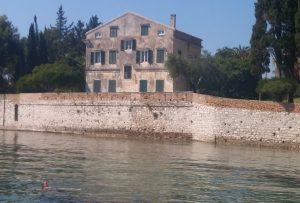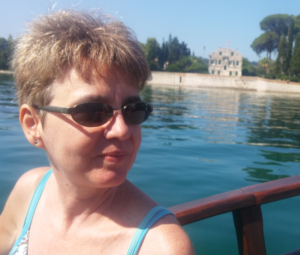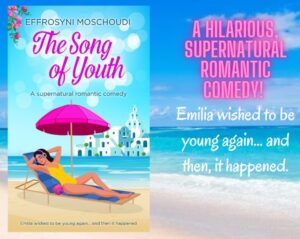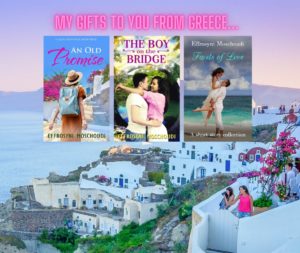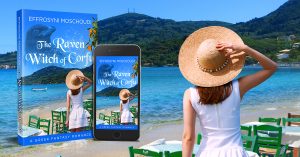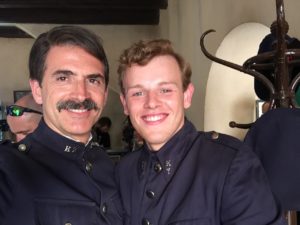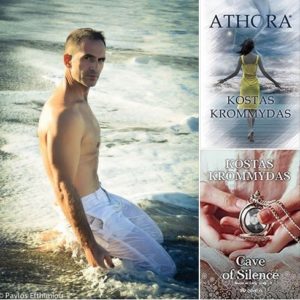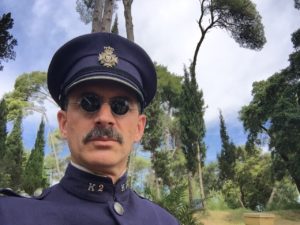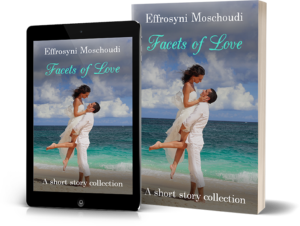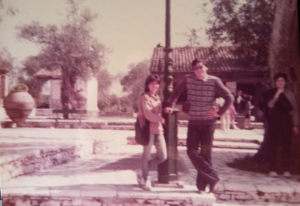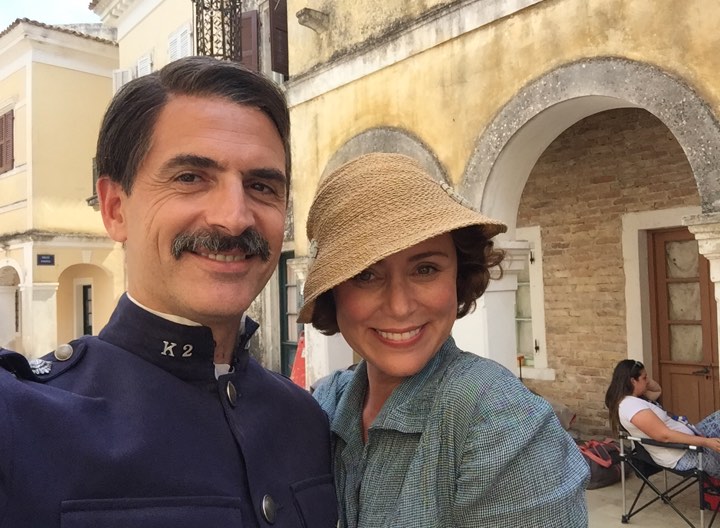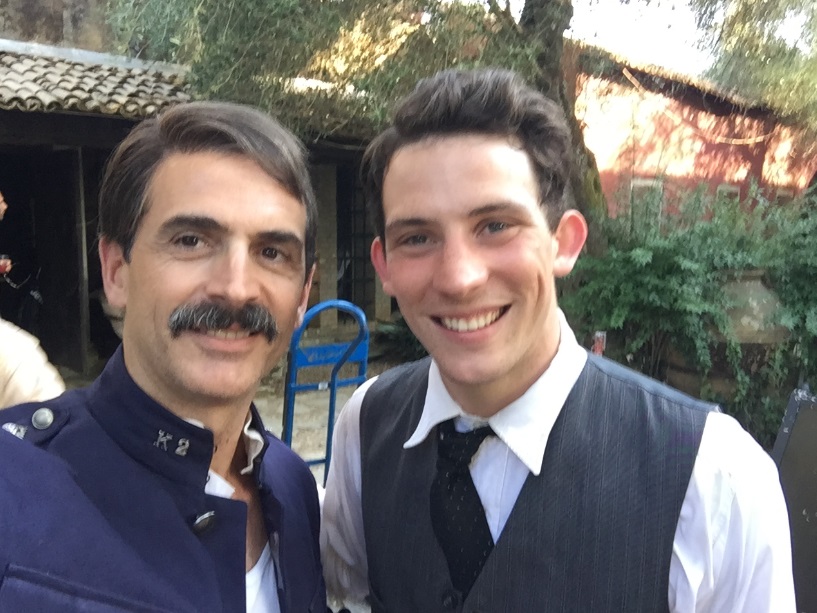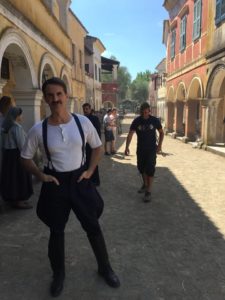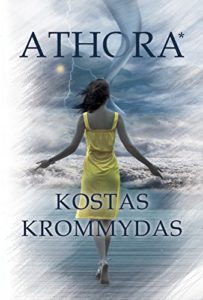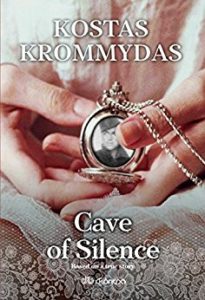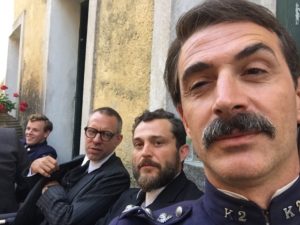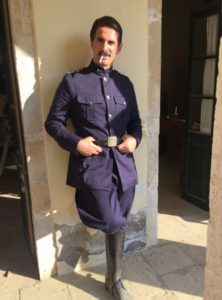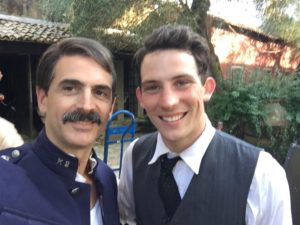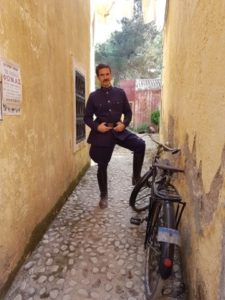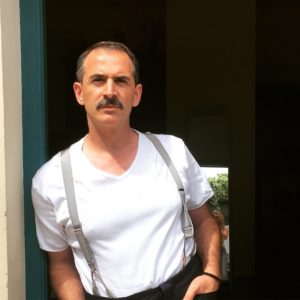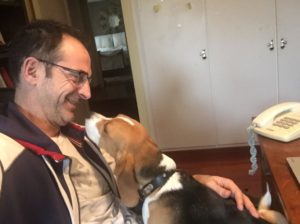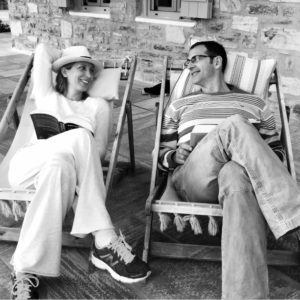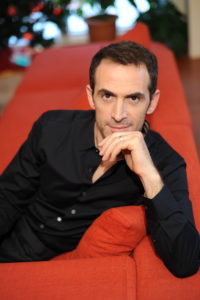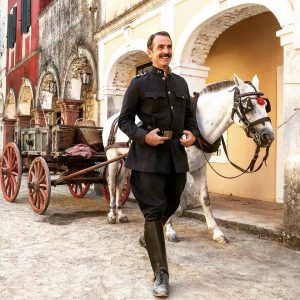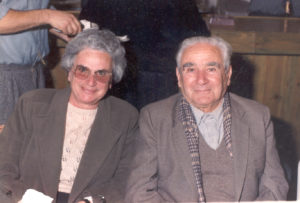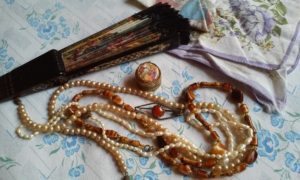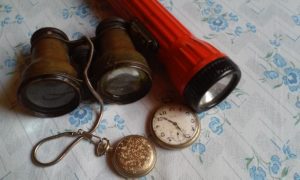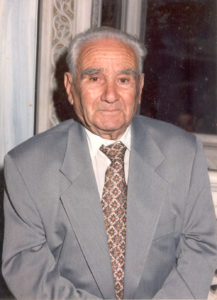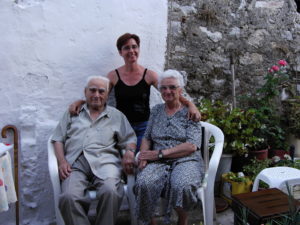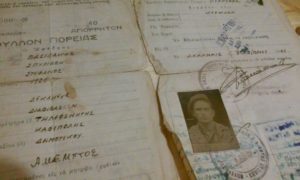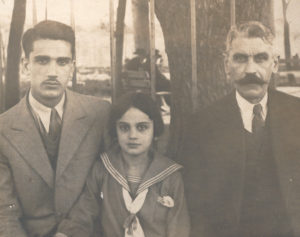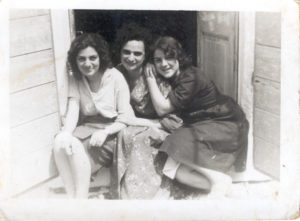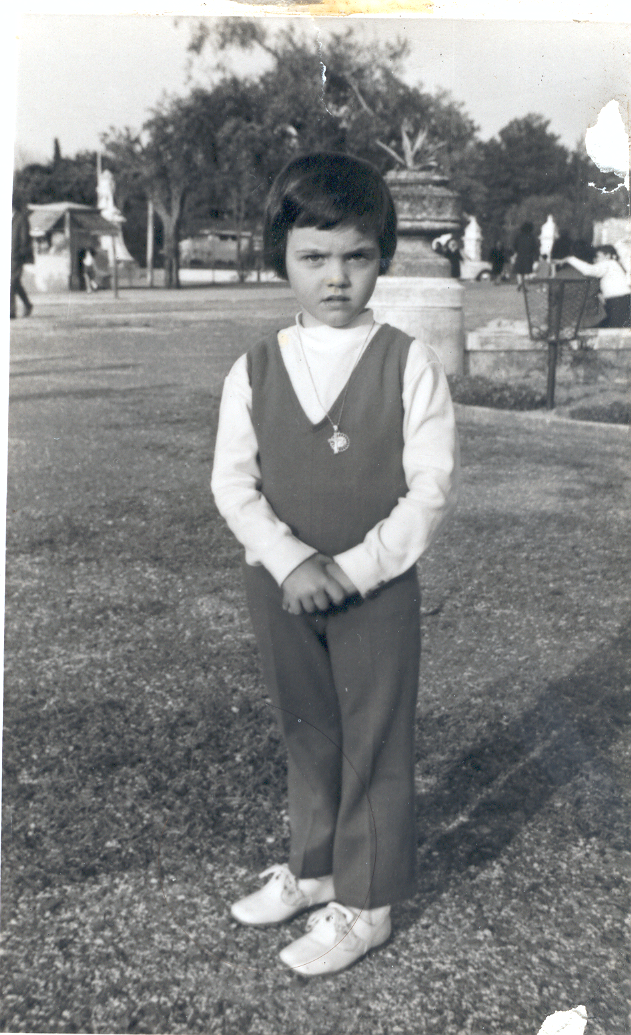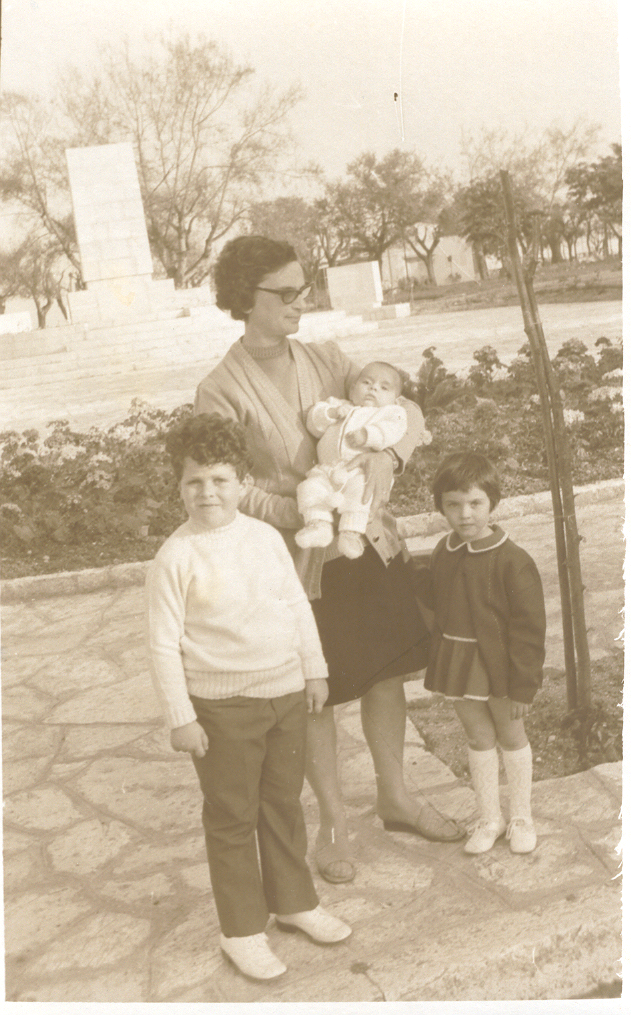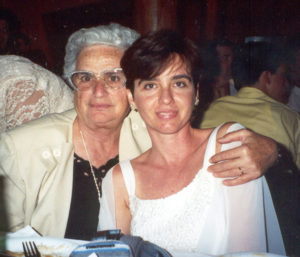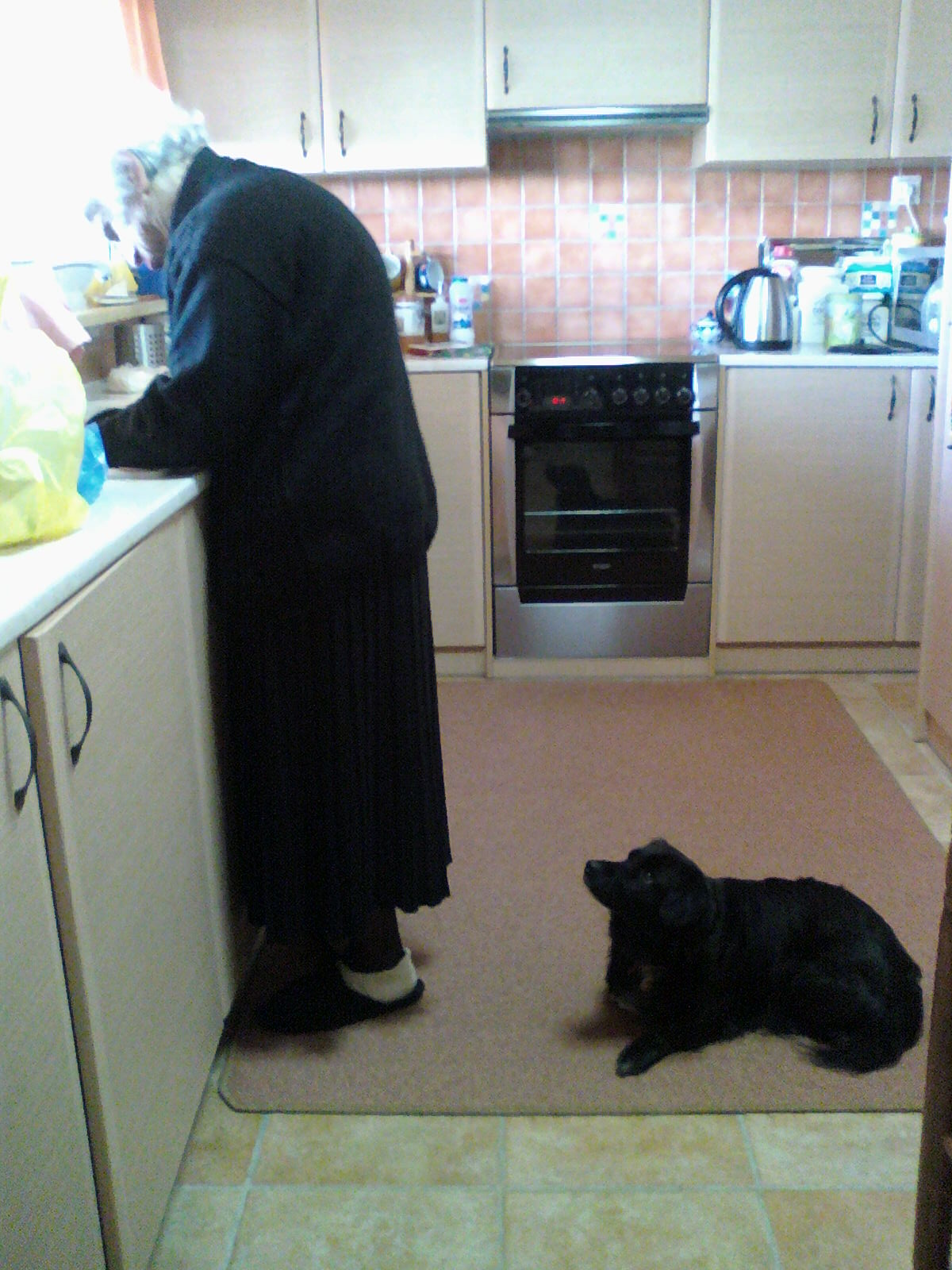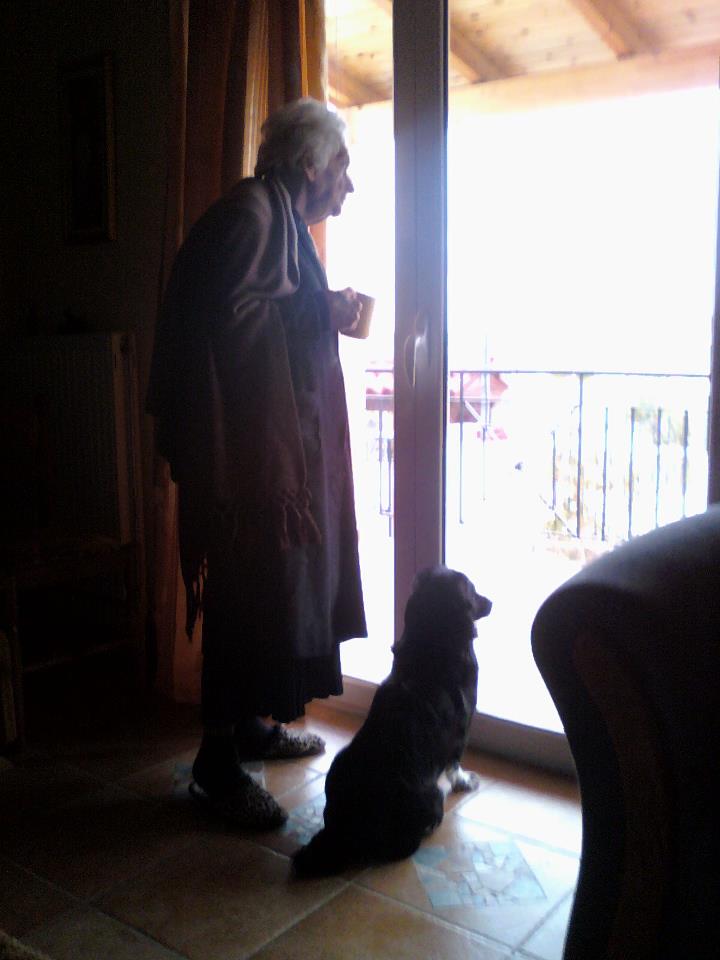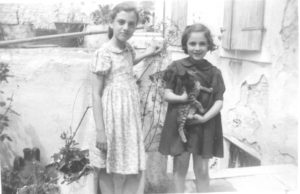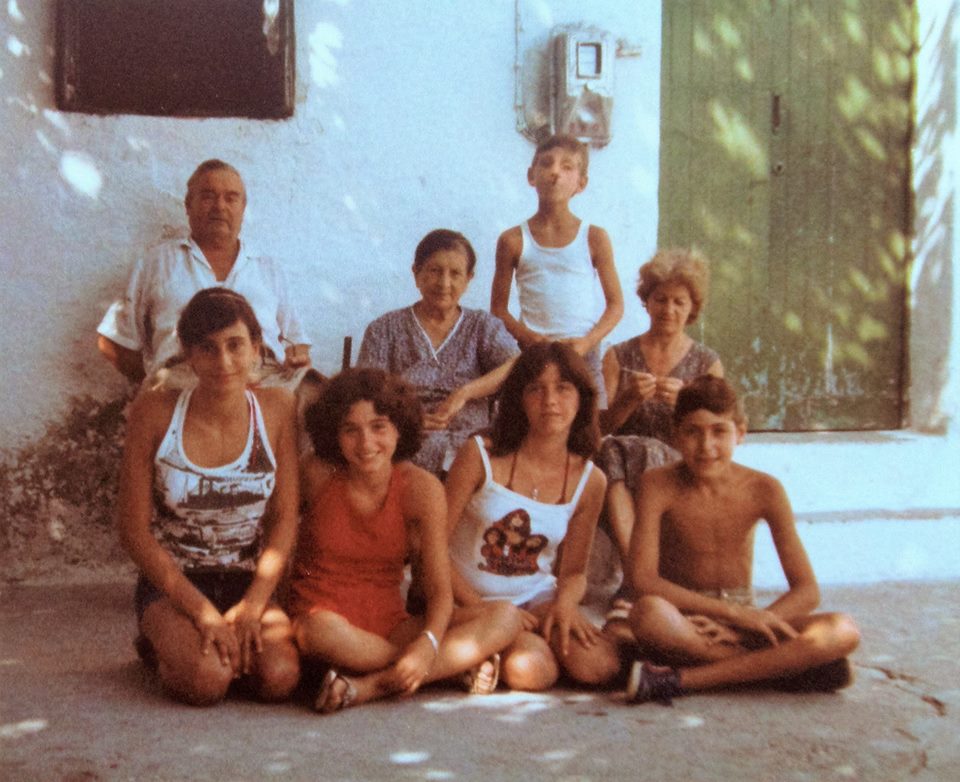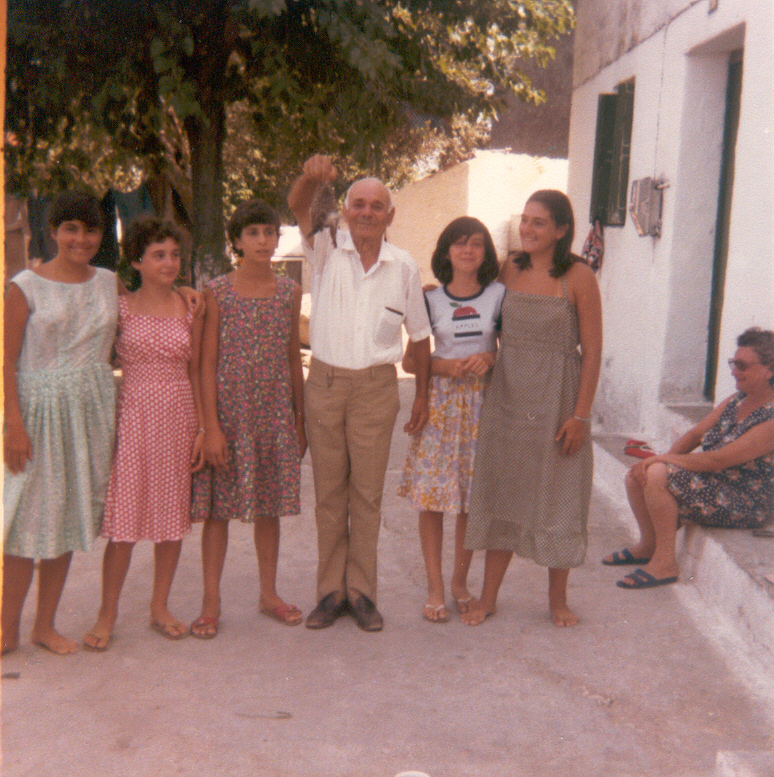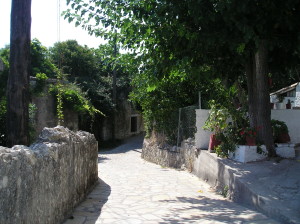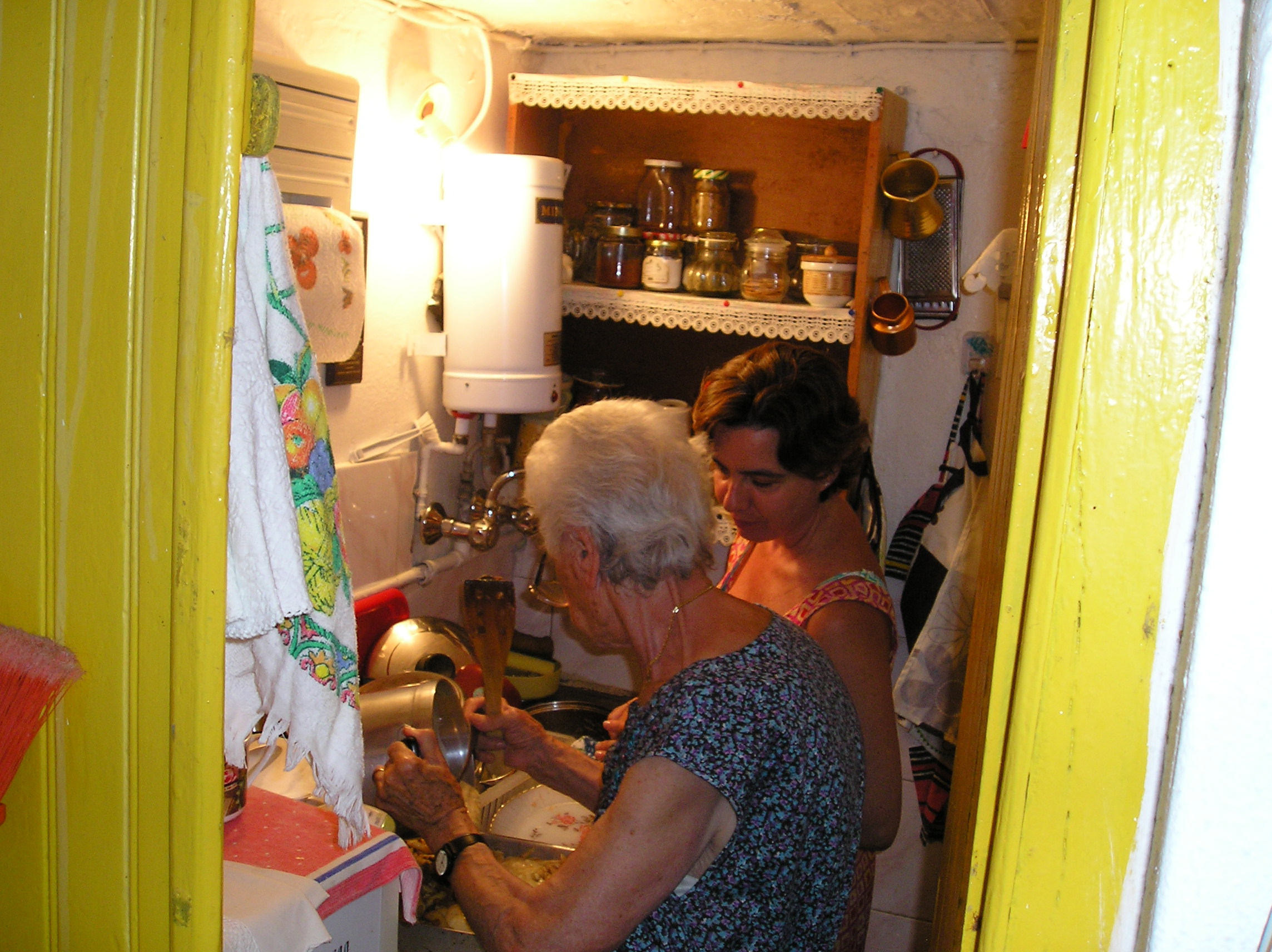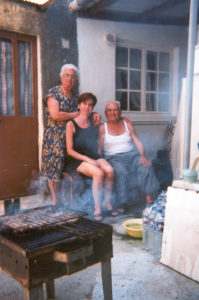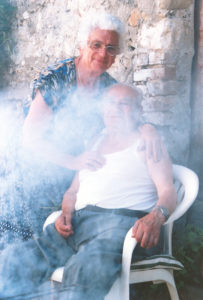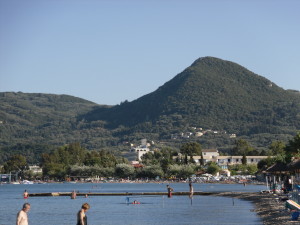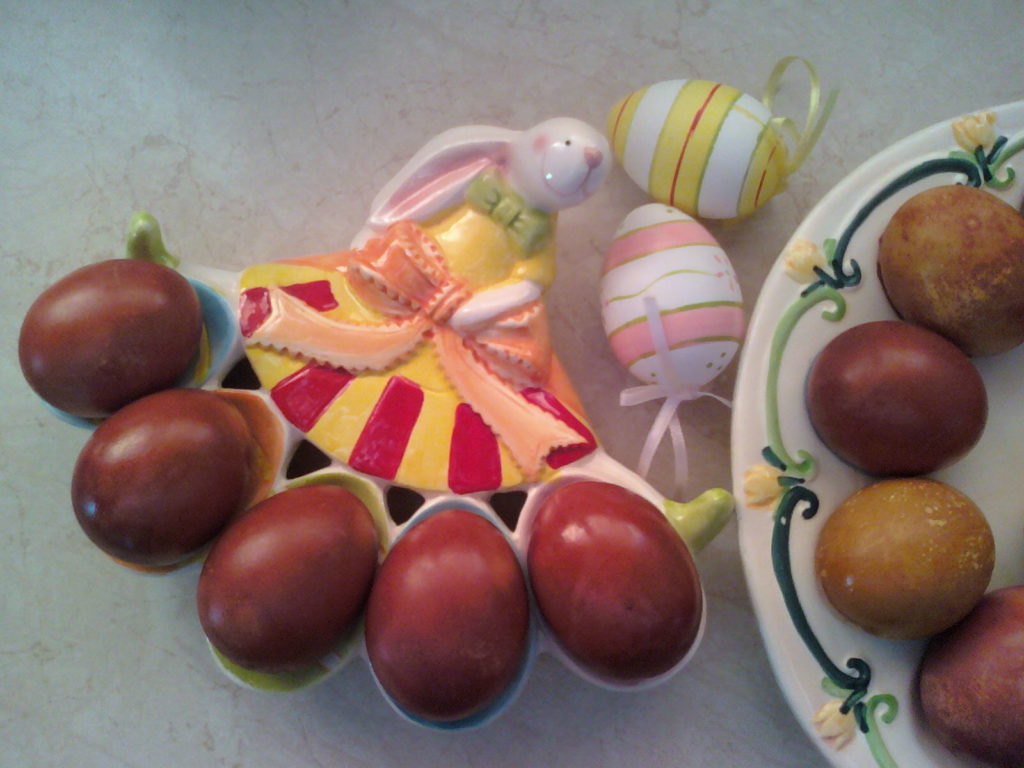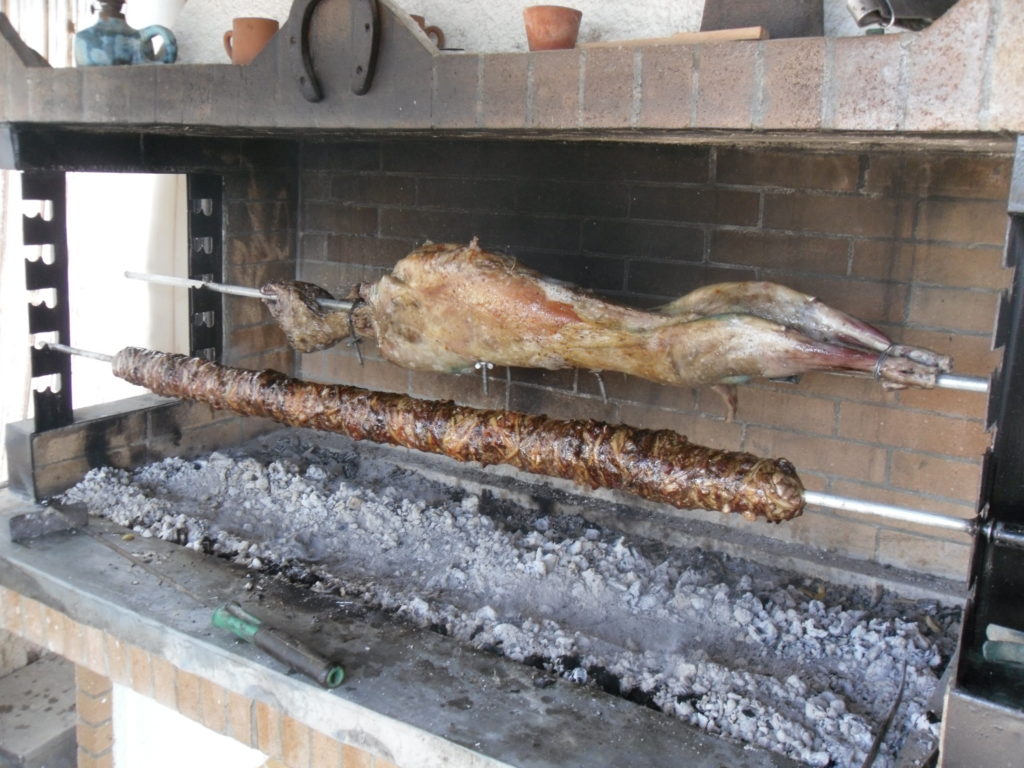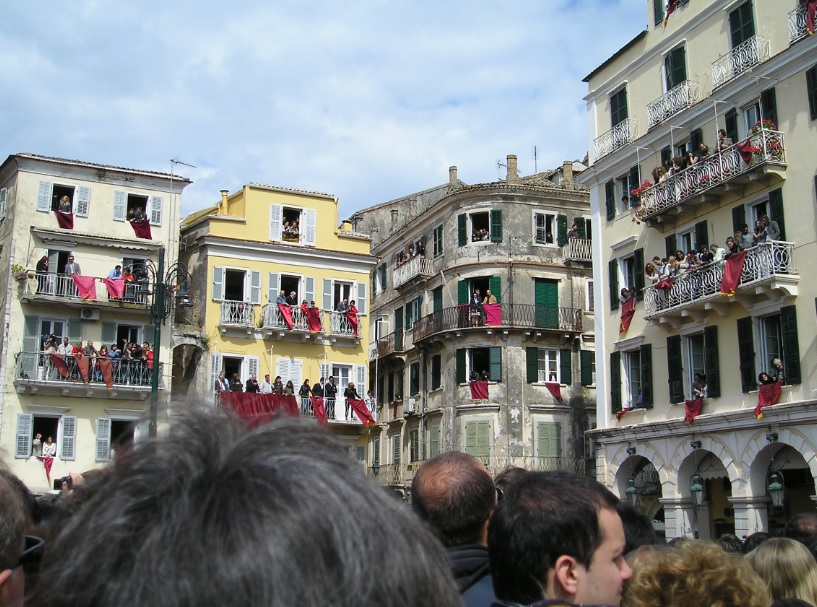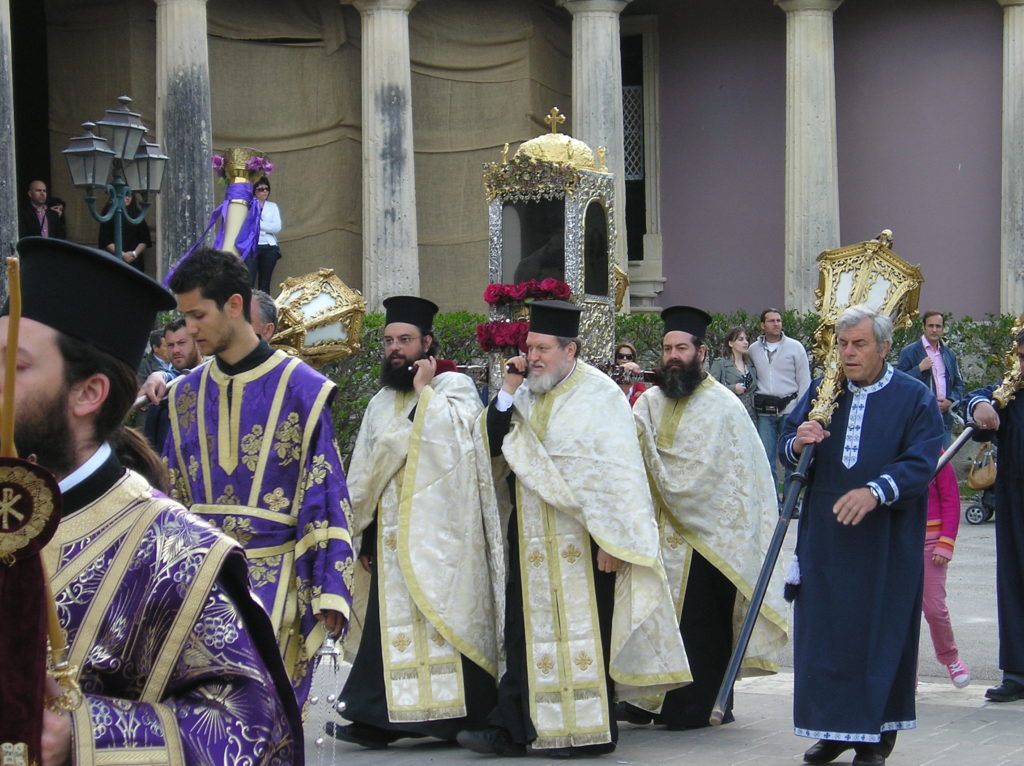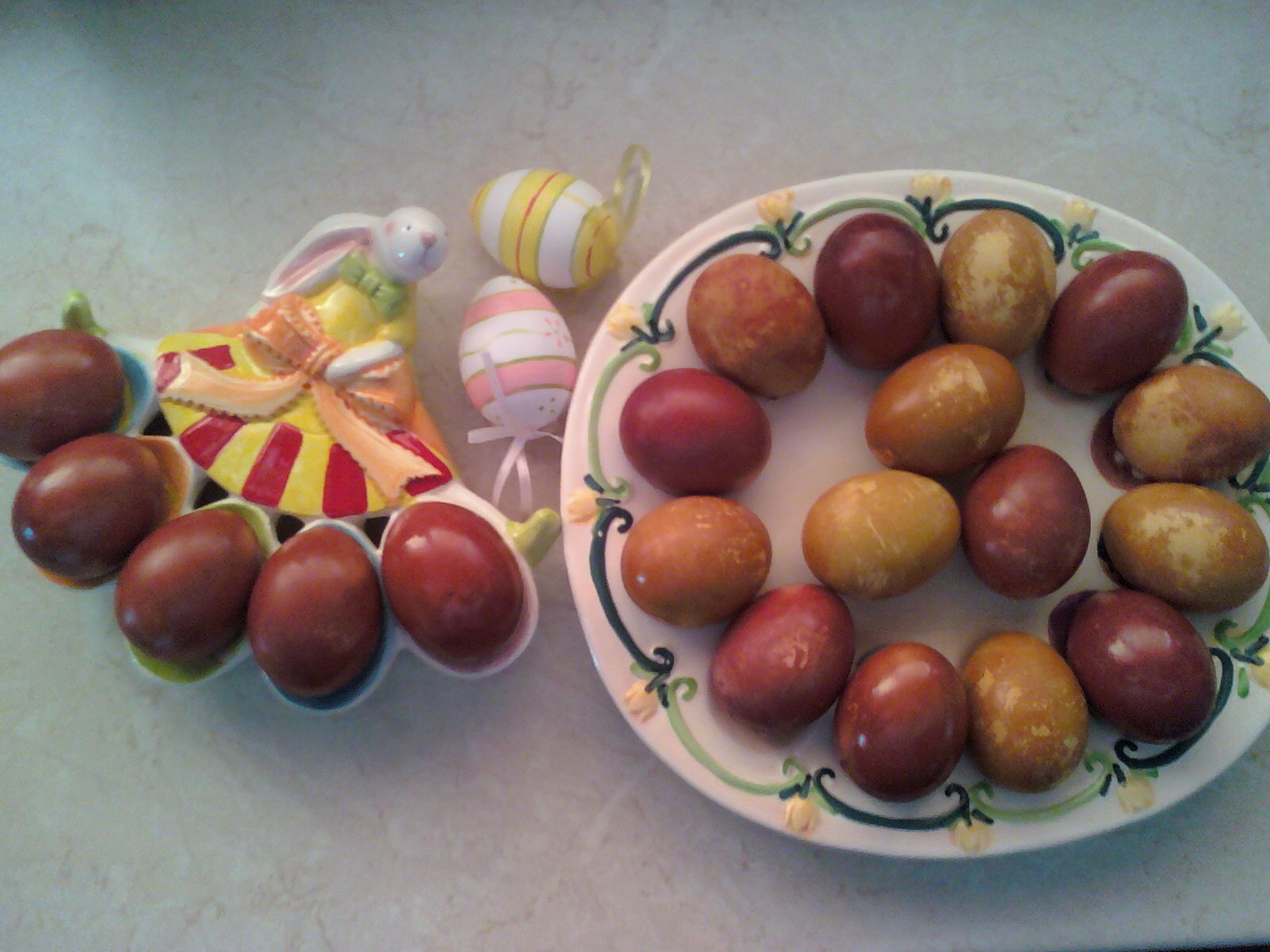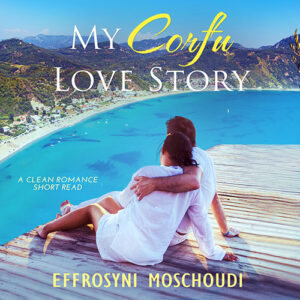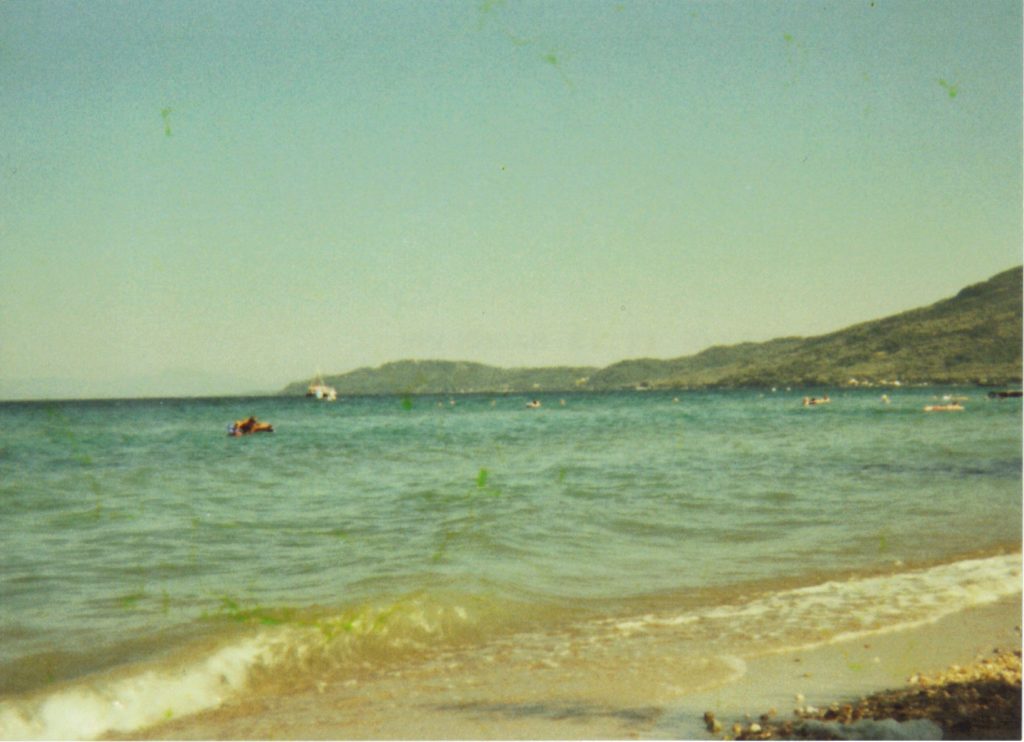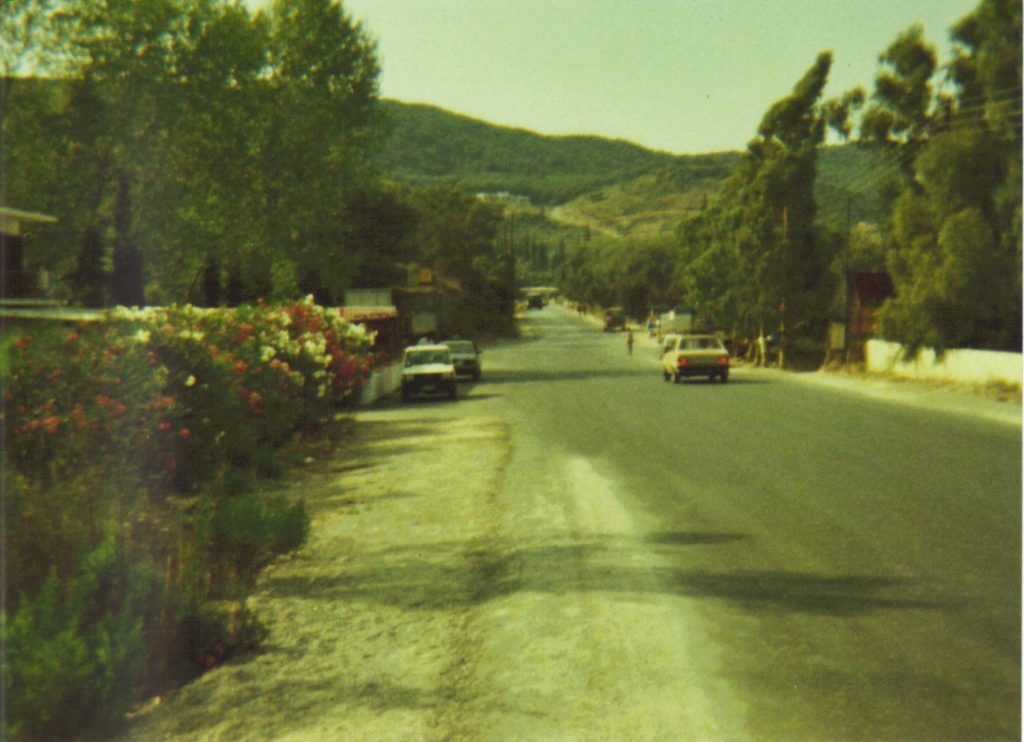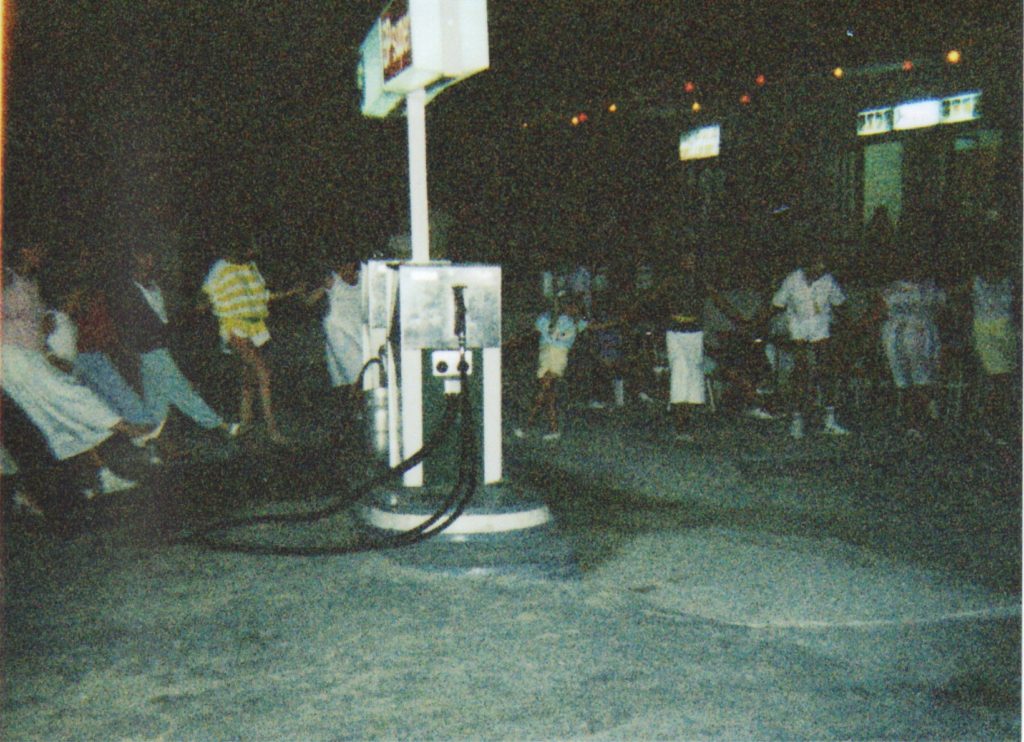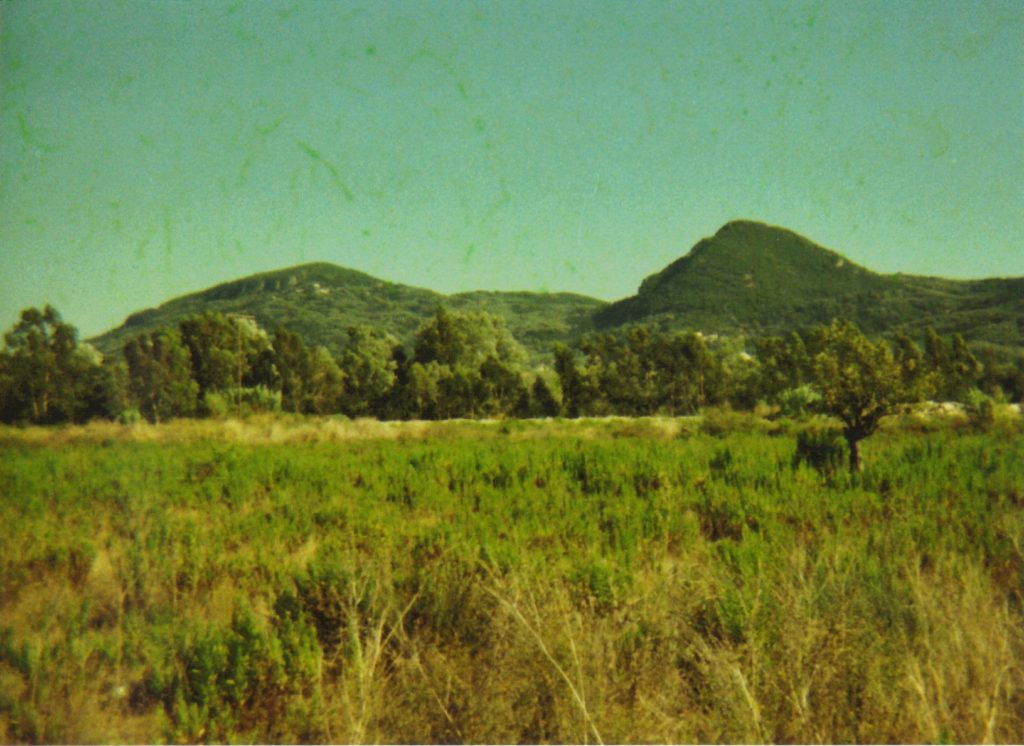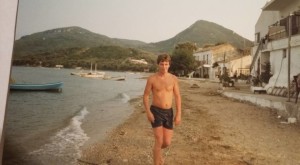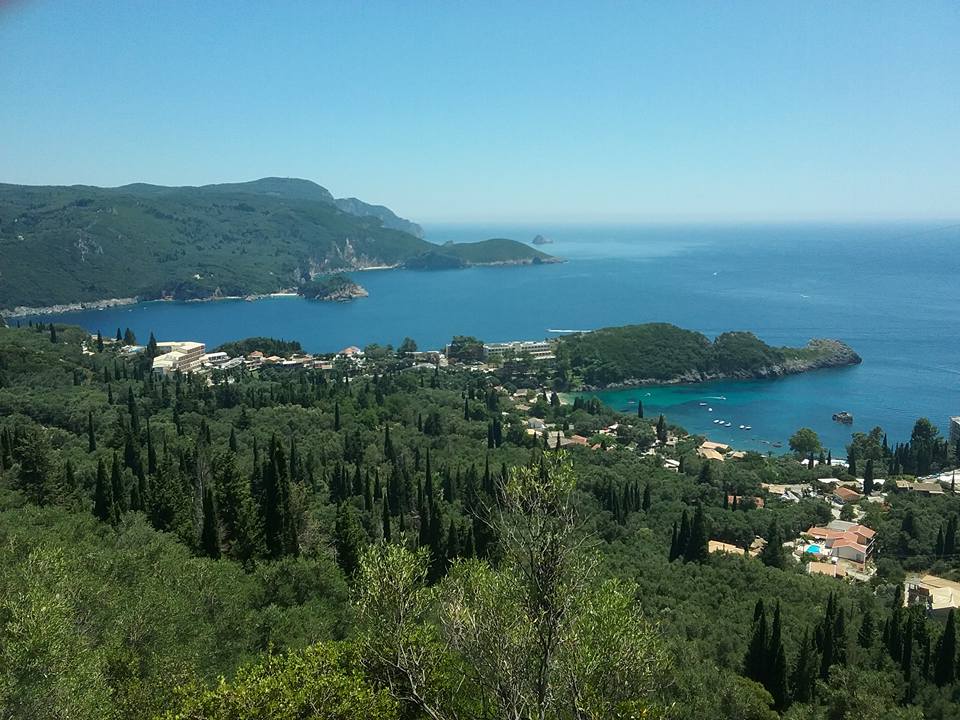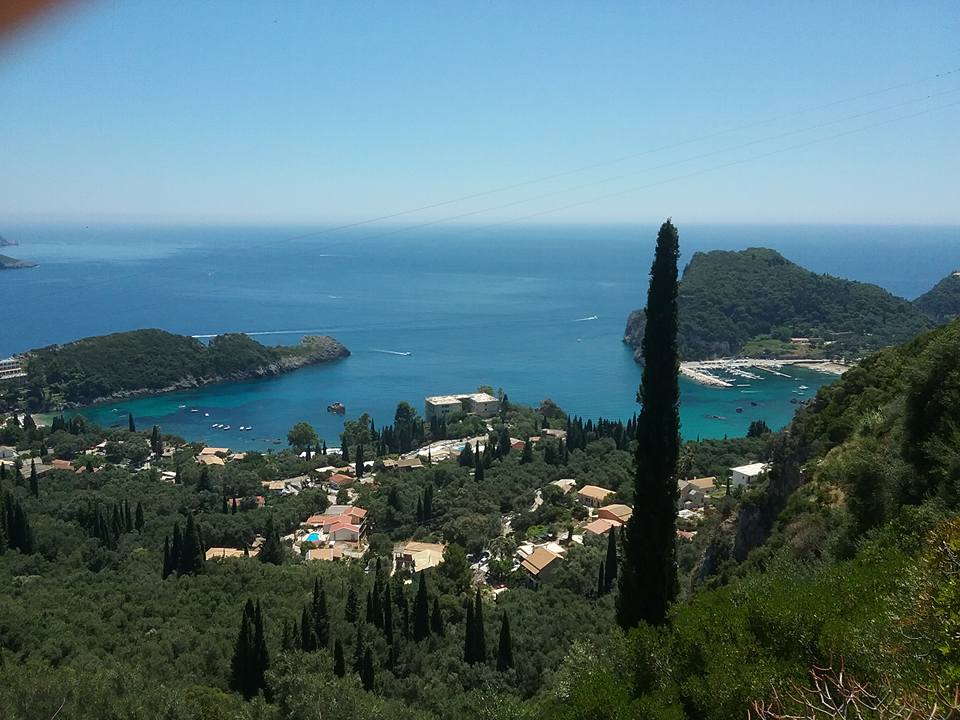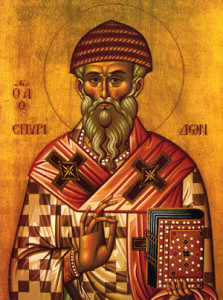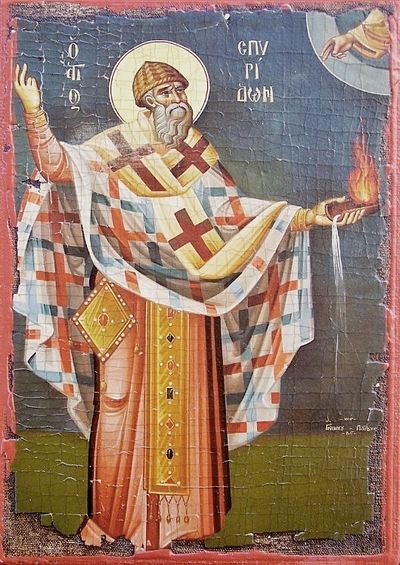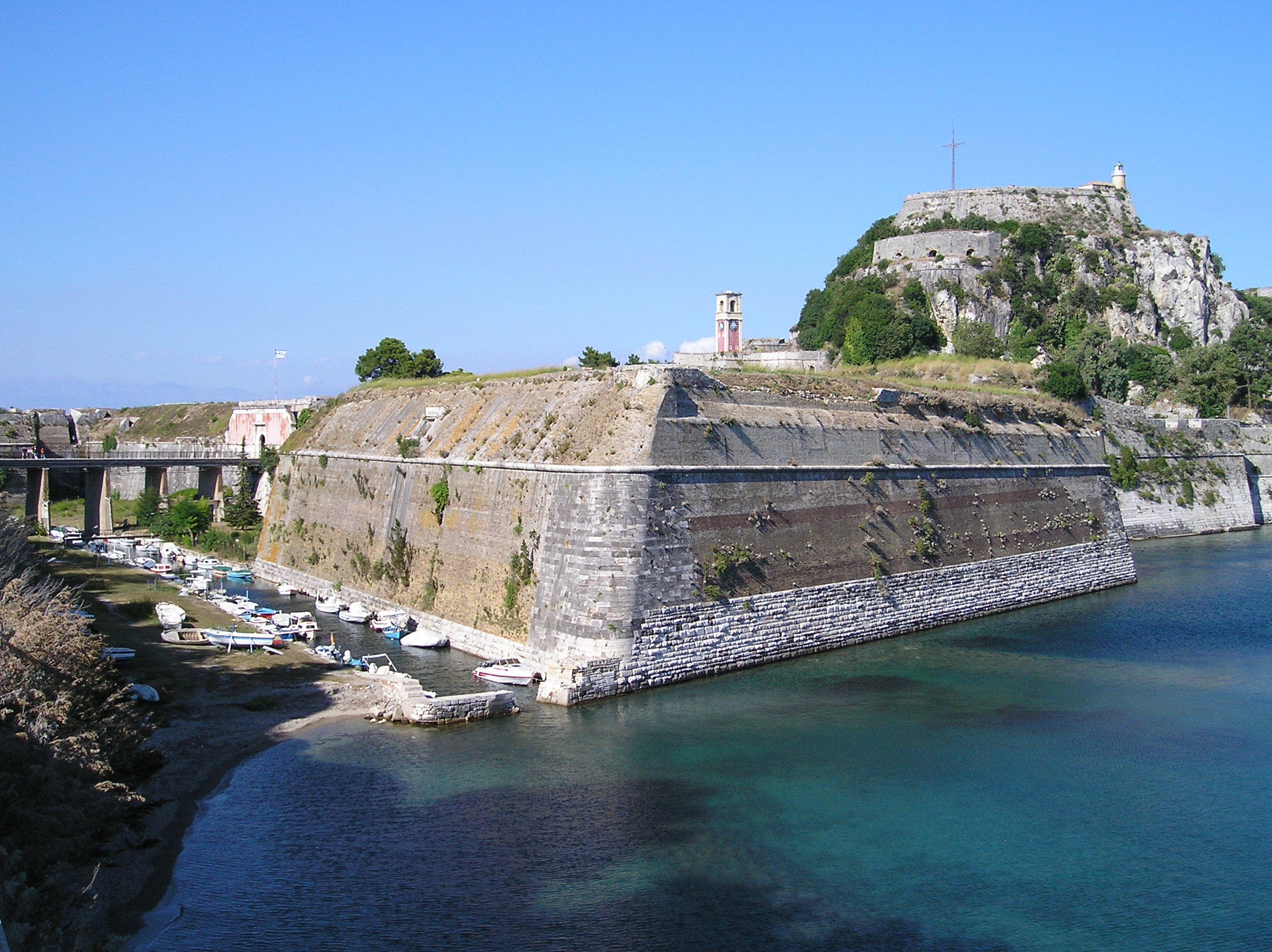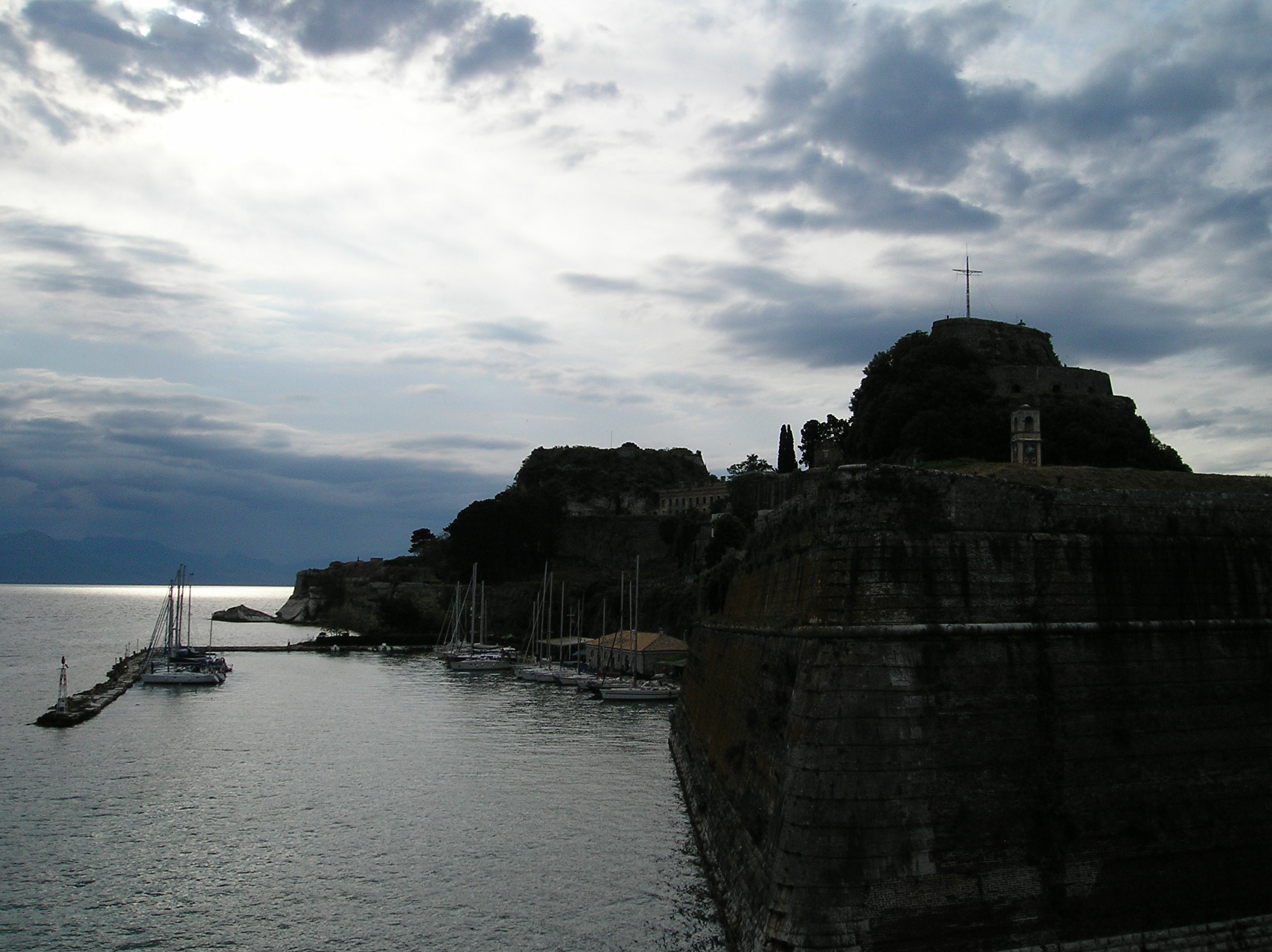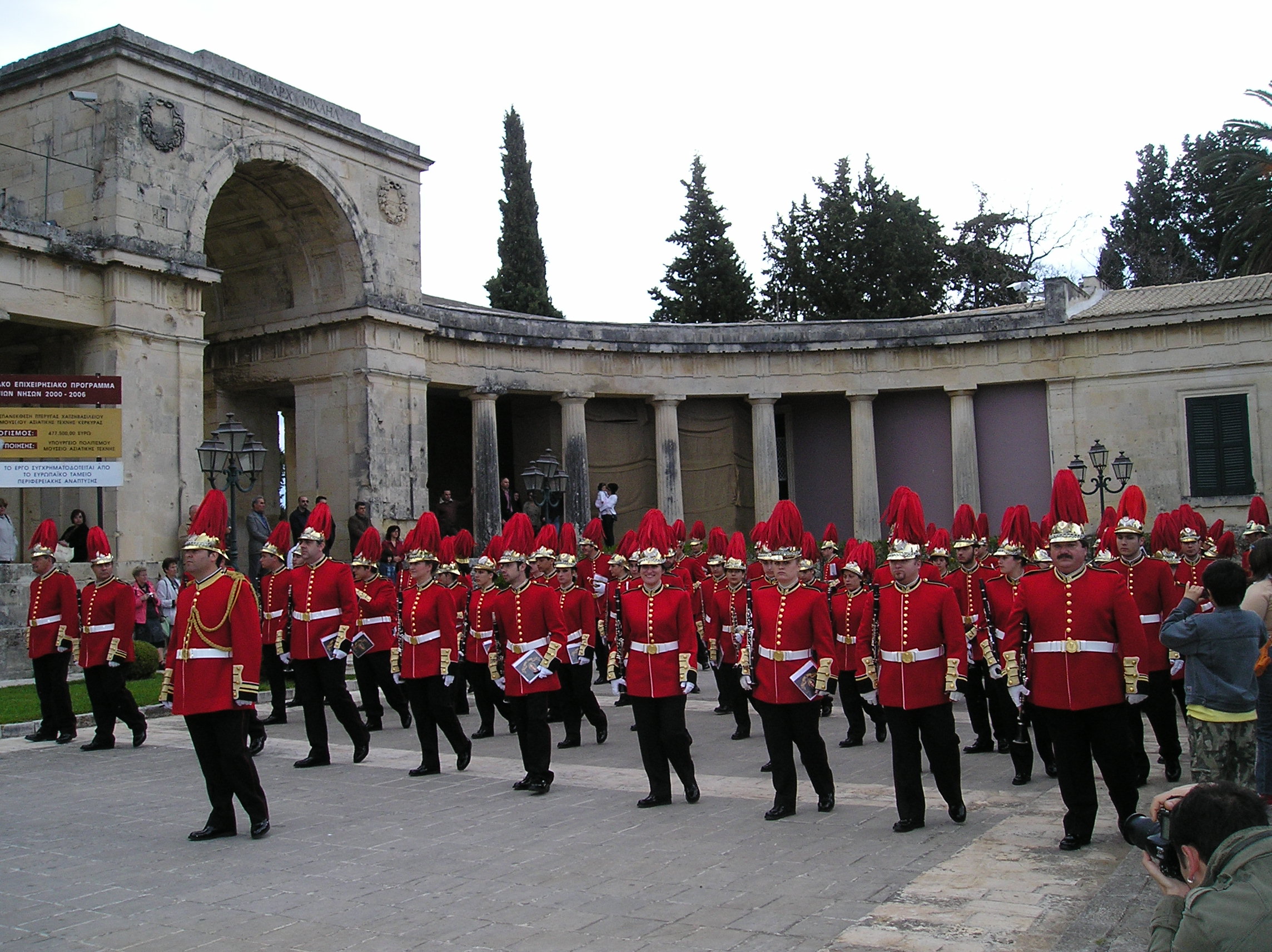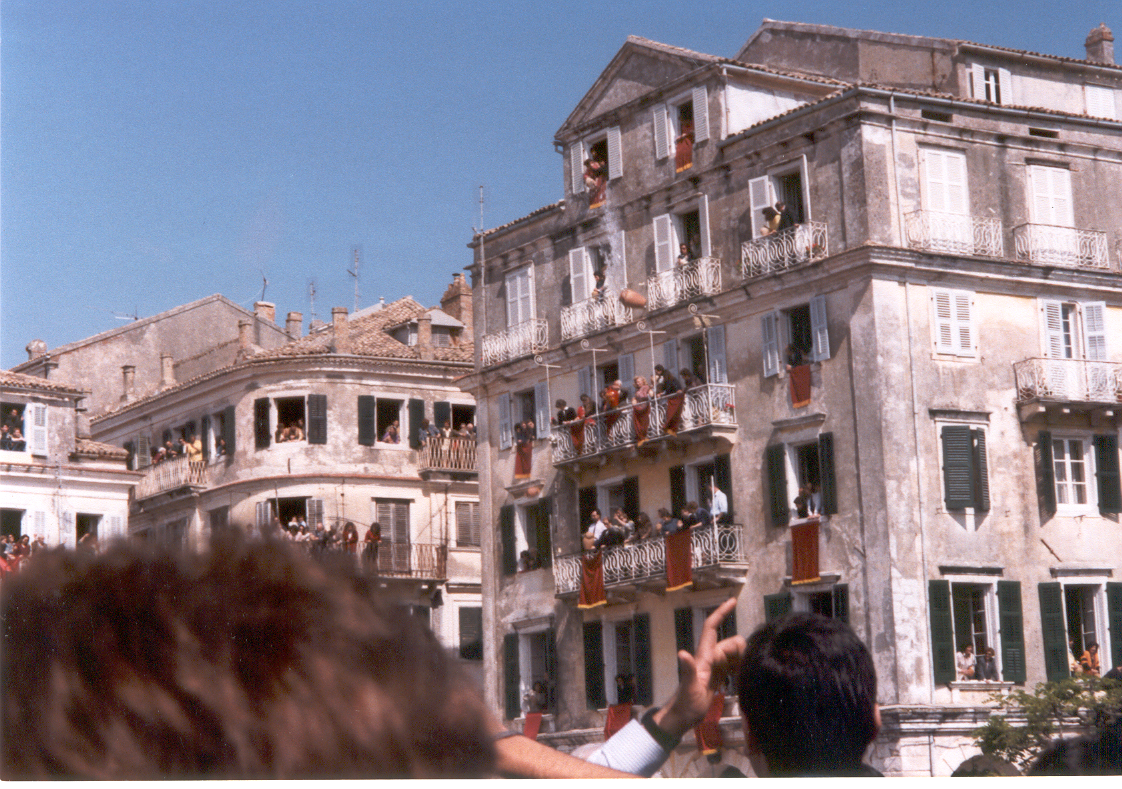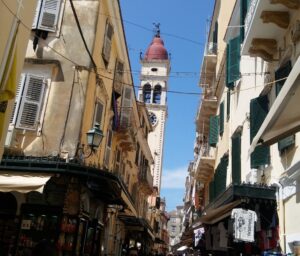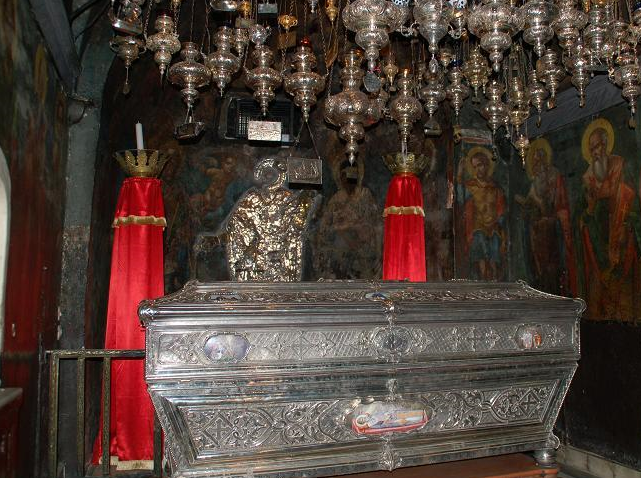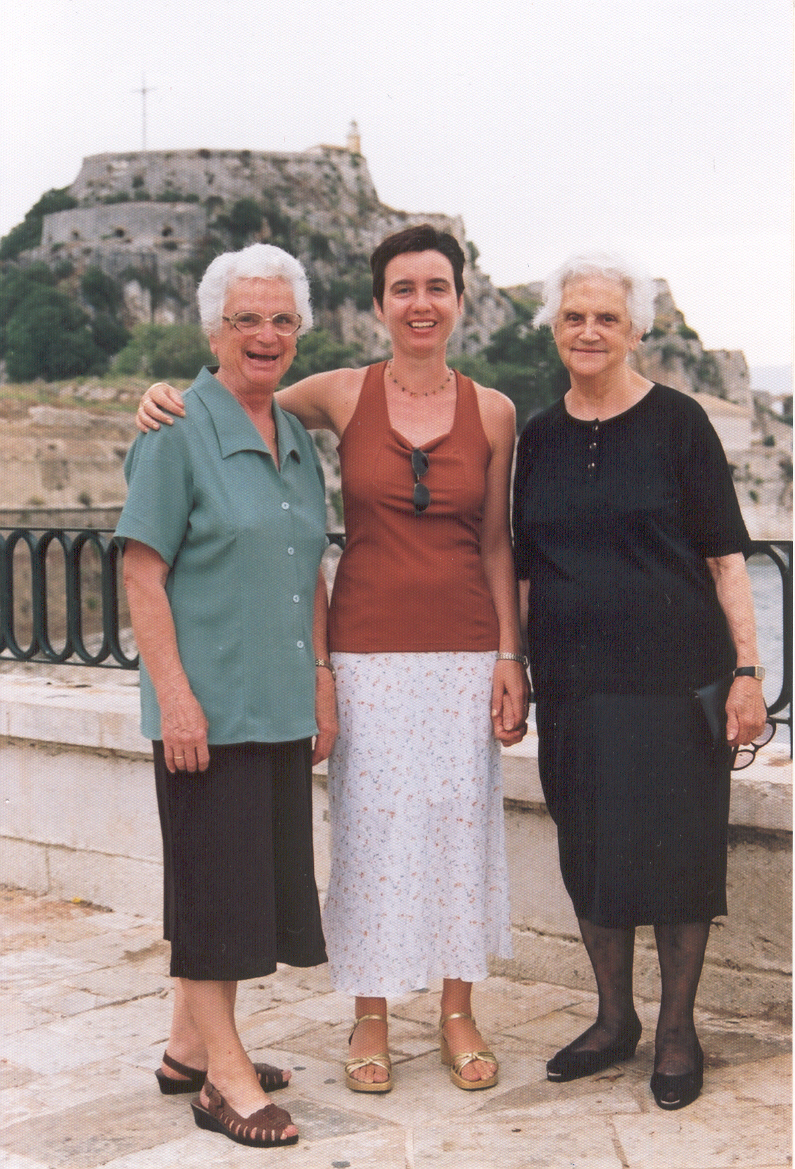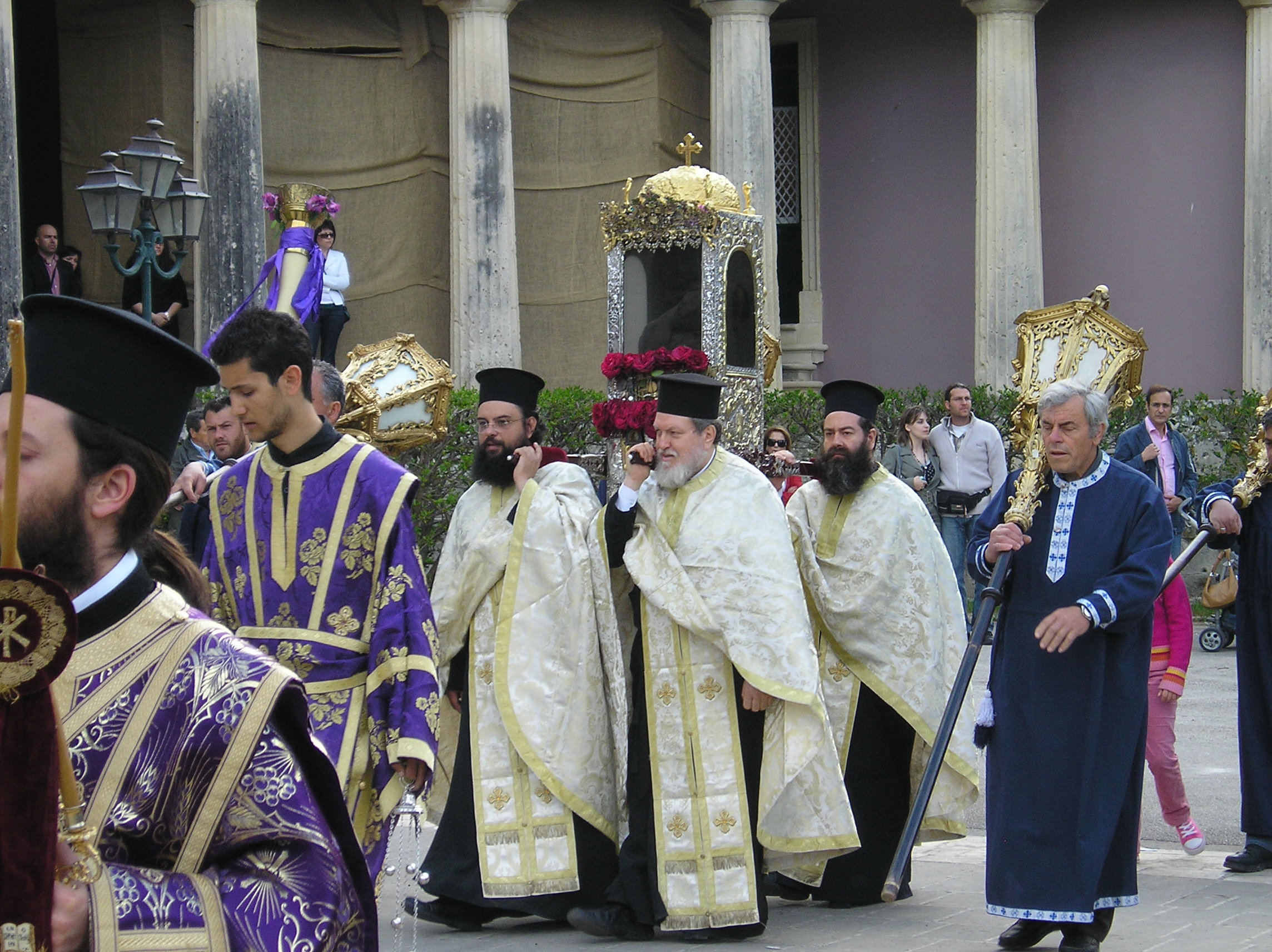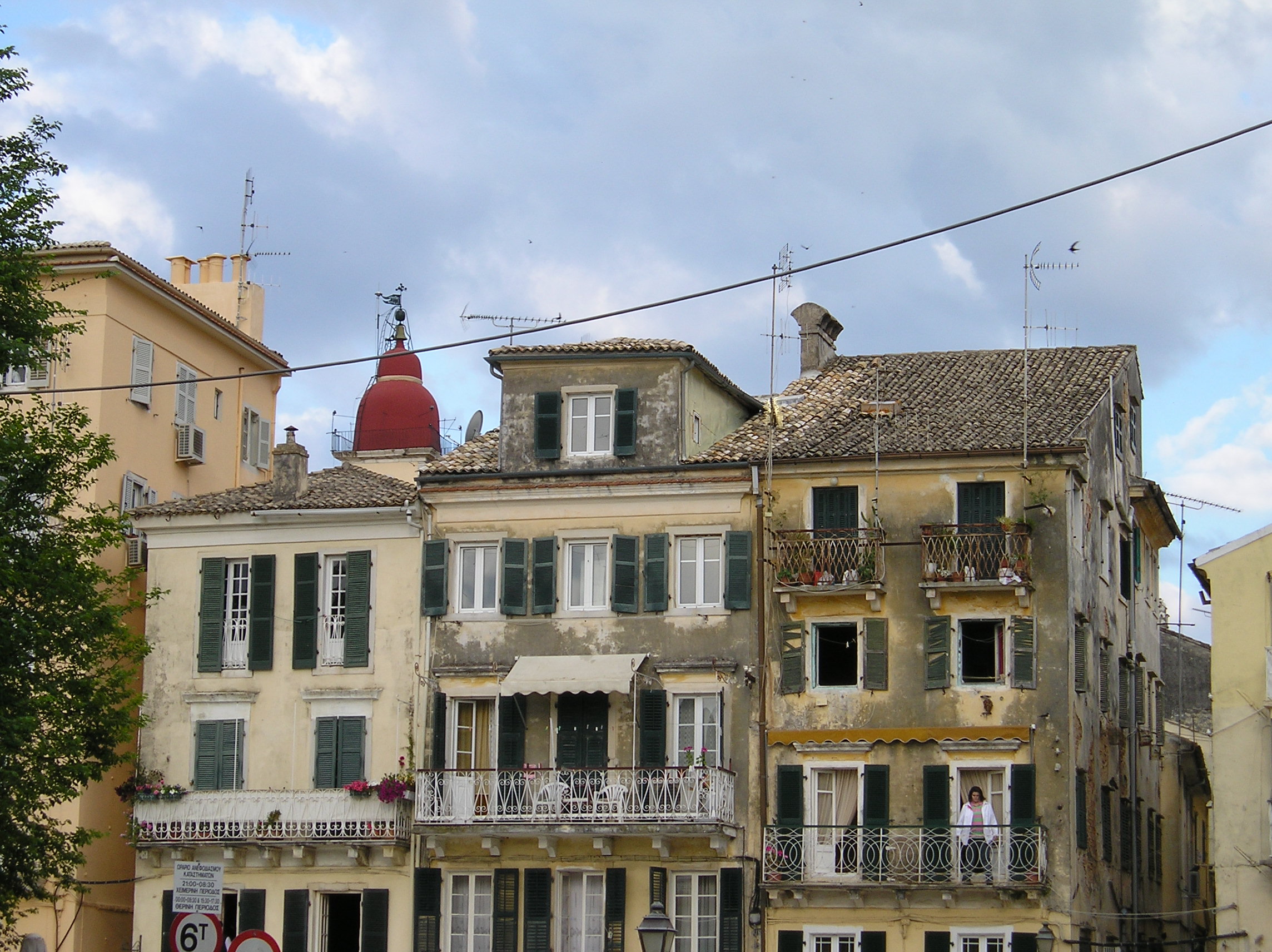I picked a cloudy day last August to take a long walk around Corfu town, aiming to visit places I hadn’t been to since I was a child. Also, I intended to find two old houses where I knew my grandmother and mother had been living in as children. One is situated just behind Liston and the other is in the old quarter of Campielo. I was pleased to find all the places I was after and I’m delighted to share my experience in detail today.
During the same walk, I also visited the Patounis Soap Factory for the first time, having discovered it in Hilary Paipeti’s excellent book, Corfu Off the Map. Its owners were very hospitable and even gave my husband and me a quick tour of the place.
Before I set off on this virtual tour with you, here’s a map of the town to give you an idea of our route:
The walk I did that day (with my husband, Andy) took us via the following places of interest in this order:
Sarocco Sq. –> Garitsa Bay –> Anemomylos (Nautilus Cafe & the windmill) –> Liston & Pentofanaro –> Agion Panton Church –> St Spyridon Church –> Campielo (Venetian Well and Ypapanti Church) –> Spilia (New Venetian Fortress, Holocaust Monument and old coach station) –> Jewish quarter & Synagogue –> back to Sarocco Sq.
Andy and I parked near Sarocco (or Saroko – originally named ‘San Rocco’ by the Venetians). It is a big shopping area built around a square. It is also an open-air bus terminal for civic buses to the north and the south. From there, we took Alexandras Avenue past the post office, until we hit the water at Garitsa Bay.
This is where Douglas’s Column stands. Or, as the locals call it, “I Kolona tou Dougla”.
The sea view from this spot is phenomenal on any given day, but the clouds on the sky that morning made the view simply breathtaking… Not even the ongoing roadworks and the stacks of tiles we found there didn’t spoil the magic.
The view on the left from there is to the Old Venetian Fortress. On the other side, the coastal road reaches down to the end of the bay at Anemomylos (windmill). The windmill is situated at the base of a pier. At Garitsa bay, the sea is dotted with sailboats of all kinds. The fabulous zoom of my Canon Powershot SX610HS even captured the famous Yacht A that day, for which I was really pleased!
A walk around Garitsa is a joy of quiet, fresh air and enchanting vistas. On our way to the windmill, we encountered many locals dipping in the water for a cooling swim.
Just before the windmill, we stopped at Nautilus cafe for a coffee. It came with croissants, much to our delight. I highly recommend a venture inside the cafe, if only to see if you’ll sweat at all when crossing over the threshold (I did, but I’m weird like that, and I’m not telling why. You’ll just have to find out for yourselves 😛 )
Anemomylos offers equally spectacular views. Just like in Garitsa, the locals keep coming and going for their daily swim.
Here, I’ll give you a tip that a local gave me. See the picture above? After visiting the pier, carry on behind the windmill along the coast and you will soon get to a bathing area that was once accessible only to the Greek king and the rest of the royal family! It is situated near Mon Repos and was recently opened by the council. It is not possible to access Mon Repos from that side, but you’ll be able to visit the spot on the beach where the Greek royals once descended from the palace to dip in the sea. The booth where they used to change into their bathing costumes still stands! I didn’t get the chance to visit it this year as I was tipped off too late. I hope to visit next time, though, and I will share photos and more info then.
From Anemomylos, we headed back to Garitsa so we could get to Liston in town. On the way, I was delighted to identify the old house in Garitsa where I used to holiday with my granny as a small child. We were staying with her daughter (my aunt Stephania) and her family, who rented a flat there at the time. It was in the tall building on the left of this photo. On the green where I stood to take the picture, there used to be swings back in the day and I remember that it was very lush and shady there.
Granny used to take me there daily while feeding me ‘kolatsio’ (a snack between breakfast and lunch). It consisted of boiled egg and bread, more often than not. Almost fifty years later, the sense of place was so strong that when I stood in the middle of the now barren land gazing out to the Old Fortress like I used to as a child, the melodic cadences of Granny’s speech almost reached my ears again. It was an emotional moment for me as I miss her every day. That morning, she felt close. So very close again.
When we reached Liston and the Pentofanaro beside it (Five Lantern Post), we turned right behind Liston and then turned left at the first corner. That’s Agion Panton street, named after the church of the same name that you soon come across on the right.
Just after the church, I came across the old edifice that Granny had pointed out to me in the past – the house where she grew up, and which my mother also knew as she used to visit her grandparents often there as a child. Her grandfather (my great-grandfather, Nikos Kopsidas from the island of Lefkas) would meet her at Pentofanaro every Sunday (when she’d arrive from the house in Campielo that I’ll show you later), then escorted her to this house for lunch.
Many a time over the years when Granny and I walked past the house, she’d point to the door, then up to the 5th floor to tell me this was where she ran from to St Spyridon Church whenever the town was being bombed during WWII. One fateful morning a miracle took place in the church to protect the people inside from the bombs. My granny was inside, a teenager then, and witnessed it. She loved to tell the tale, which in time I’ve also heard from other locals in the town. To hear all about it, you’re welcome to read this post that shares other miracles of St Spyridon too.
Going back on ourselves from Agion Panton street, we headed for the lane that runs past the back of St Spyridon’s church. From there, we hurried past the busy olive wood artifact shops to follow the sign to ‘The Venetian Well’. It was just a few seconds away from there, at the heart of the stunning old quarter of the town called Campielo with its picturesque lanes and antiquated Venetian edifices.
Next, we had to ask a local or two in order to find Ypapanti Church in the same area. My mother had told me that the house she was raised in stood right across from that church. I’d never seen either before and was getting excited as I followed the locals’ directions ambling along picturesque lanes and down old marble steps.
Finding the church proved easy enough, and it was quite close to the Venetian well.
I identified the house easily. My mother had mentioned there were vaults and an external staircase, as well as steps behind the front gate. I took the third picture standing at the front door of Ypapanti Church.
- From left to right, my mother (Ioanna), Gran Antigoni, and Aunt Stephania
- Ioanna and Stephania
Moved by the forlorn spectacle and the realization that I was treading on the footsteps of loved ones from another era, I went on my way reduced to silence and, through the back of old hotels, quickly emerged onto this stunning square.
You may recognize the setting from one of the scenes from The Durrells. Supposedly having traveled to Athens, Lawrence Durrell was having a coffee at the square in said scene. In reality, this is the square of the Metropolitan Church of Corfu (or Mitropoli). It is the beautiful pink building in this photo.
By that time, Andy and I were parched from the long walk so we headed towards the old port. At the New Fortress we turned left into Spilia. This used to be the coach station of Corfu back in the 80s. I have myriads of fond memories from arriving here on the coach from Athens every summer with my sister. The moment we’d step off the ferry, we’d rush to Spilia to take our luggage off the coach and we’d be met by a sky full of starlings chirping overhead. These moments used to signal for me every time the beginning of a long blissful summer.
I hadn’t visited Spilia in years and was astounded by the change of the setting. The coach station building is now derelict, and the place where the coaches used to park side-by-side was now taken up by tables and chairs from a number of cafes. A monument of the Holocaust also stands there now, honoring the memory of the multitudes of Corfiot Jews that lost their lives under the Nazi regime. This place was apt for this awe-inspiring monument, seeing that to the left of the square, stretches out the Jewish quarter of the town that’s built around a Synanogue.
FACT: The name Spilia (cave, in Greek) is owed to a known cave in the vicinity. It is situated near the New Fortress that towers over this area.
After a much-earned stop at Spilia for ice cream, we took the lane past Marina’s Tavern (used heavily for lunch meetings by the Durrells production team, or so I heard!) to the Jewish quarter and the Synagogue. The road led us up ahead to Theotoki Street (where Hondos Center and Public are). From there, we turned right, back to Sarocco.
With Alexandras Avenue and the post office behind us, we headed up, along the right side of Sarocco square. Asking at a cafe for directions, we found the Patounis Soap Factory just a couple of doors away. I say ‘factory’ but its facade is only small with a typical shop front door so keep your eyes peeled.
This traditional family business has operated in Corfu since 1891 and is still being run today by the descendants of the founder (5th generation), who use the same methods and tools as in the olden days. To our delight, they welcomed us warmly and offered us a tour of the place, during which a lovely young lady of the Patounis family gave us a proper presentation as well.
Luckily for us, we caught them on a production day. The factory’s main worker (who, they said, is a bit of a gem and quite irreplaceable to them) was working hard in the background as the very interesting presentation took place.
There is a shop at the front, where we chose some products to take home before leaving. The company produces 4 different types of soap. We learned there are locals who can’t do without them, and not just for washing themselves. Depending on the type, some are good for washing dishes, others for doing the laundry. All soaps are made with pure ingredients, including natural oils. For more info on the company and its products, go HERE.
I urge you to visit the Patounis Soap Factory at first opportunity, if only to sample the truly warm hospitality of its owners. And, if you have a book to spare, ideally short reads for kids or picture books, consider donating one for the small library that operates in the factory!
I hope you have enjoyed taking this walk with me around my favorite town. I highly recommend that you try it too, as it combines the bustle of market areas and touristy lanes with the charm of quiet, forlorn streets that have the power to take you back in time. And let us not forget the ample sea air you would be getting at Anemomylos and Garitsa Bay! Even if you follow my advice to walk to there and back from Sarroco (or Liston) and leave the rest for another time, I am sure you will consider your time well spent. As for how long it takes to visit Anemomylos from town, I’d say about 30-40 minutes either side at a comfortable speed.
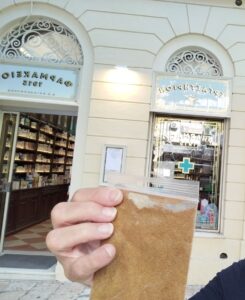
Hey, before you go! Have you ever heard of Spitseriko, Corfu’s secret spice mix for pasta? Centuries ago, it was made and sold only by pharmacists in Corfu town. Find out all about it IN THIS POST and where you can get it today!
OOPPAAA! SIGN UP TO MY BIMONTHLY NEWSLETTER AND GET 3 BOOKS FROM ME AS A WELCOME GIFT! SEE BELOW FOR THIS OFFER!
YOU KNOW WHAT THEY SAY… SHARING IS CARING! Tweet this to spread some love:
Take this wonderful walk around Corfu town #Greece #Corfu #traveller Share on X
Special offer! Sign up below and get these books for FREE!

